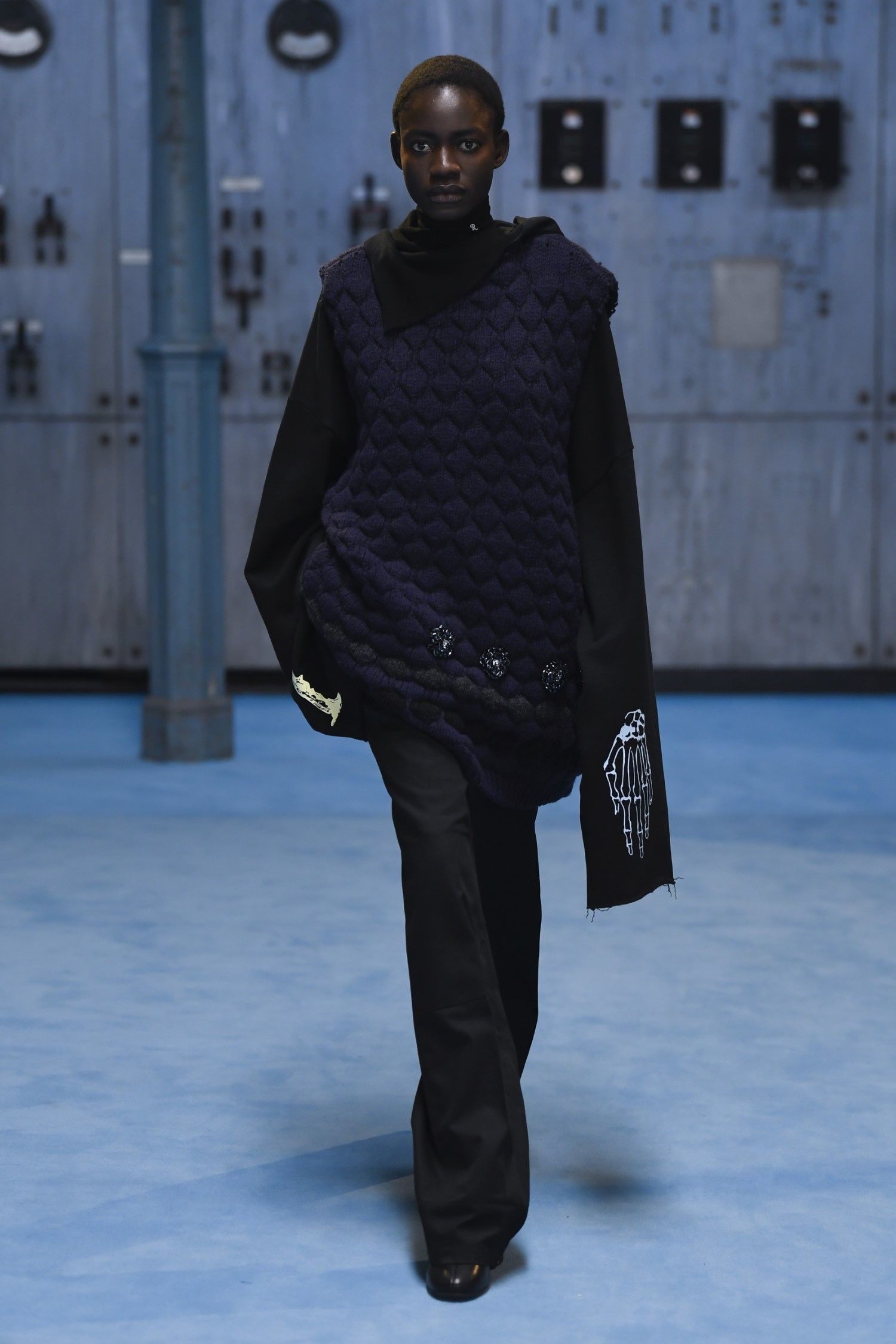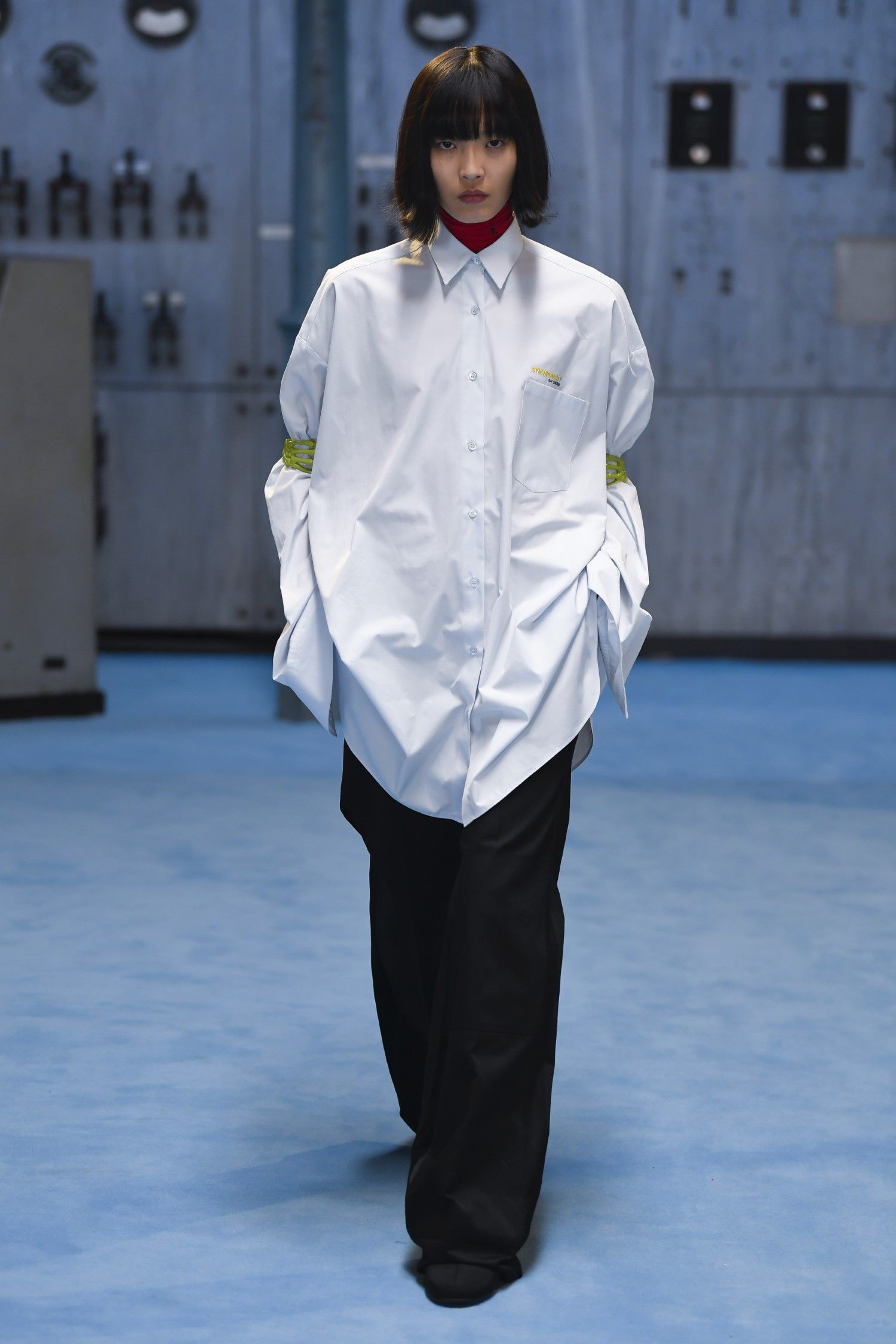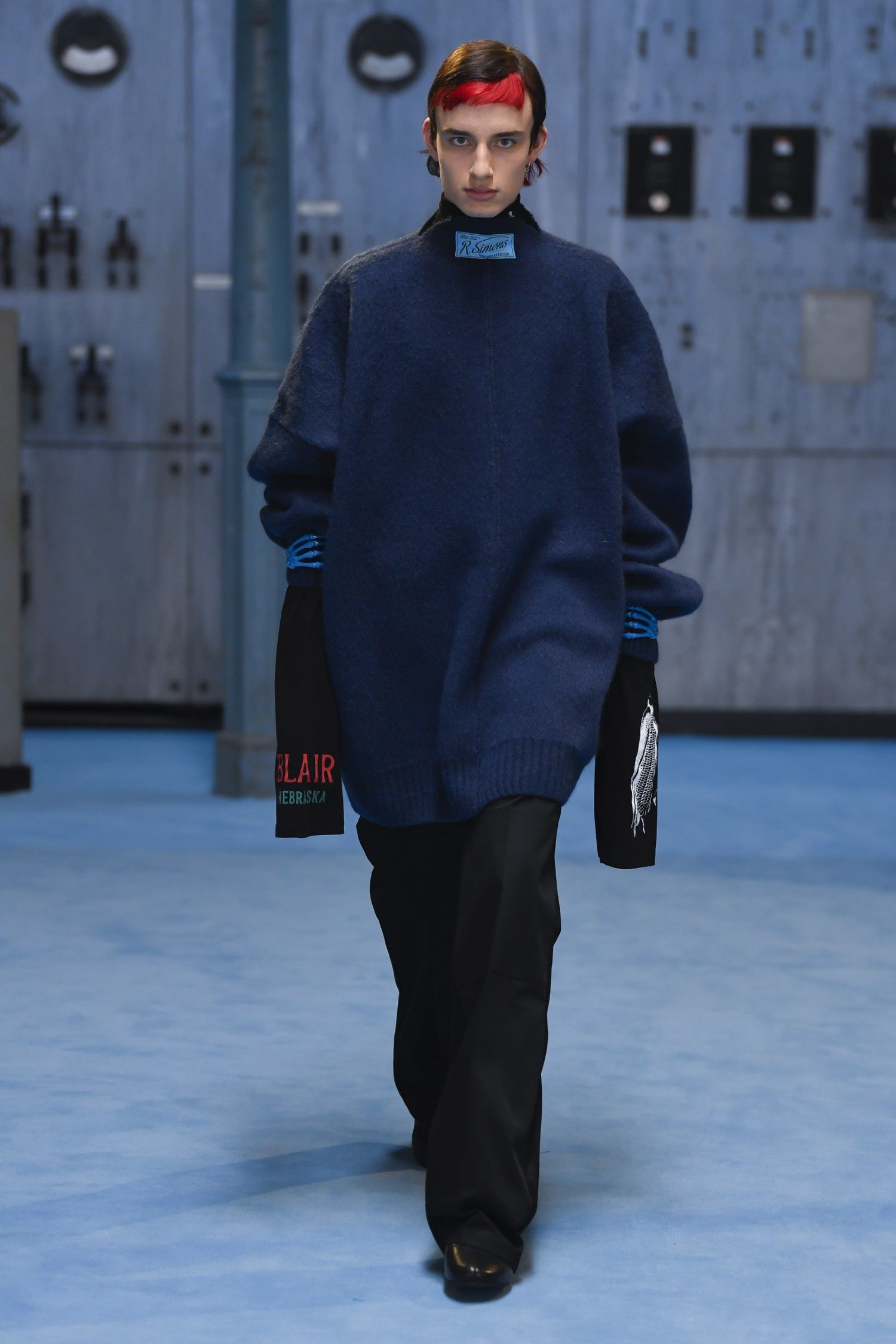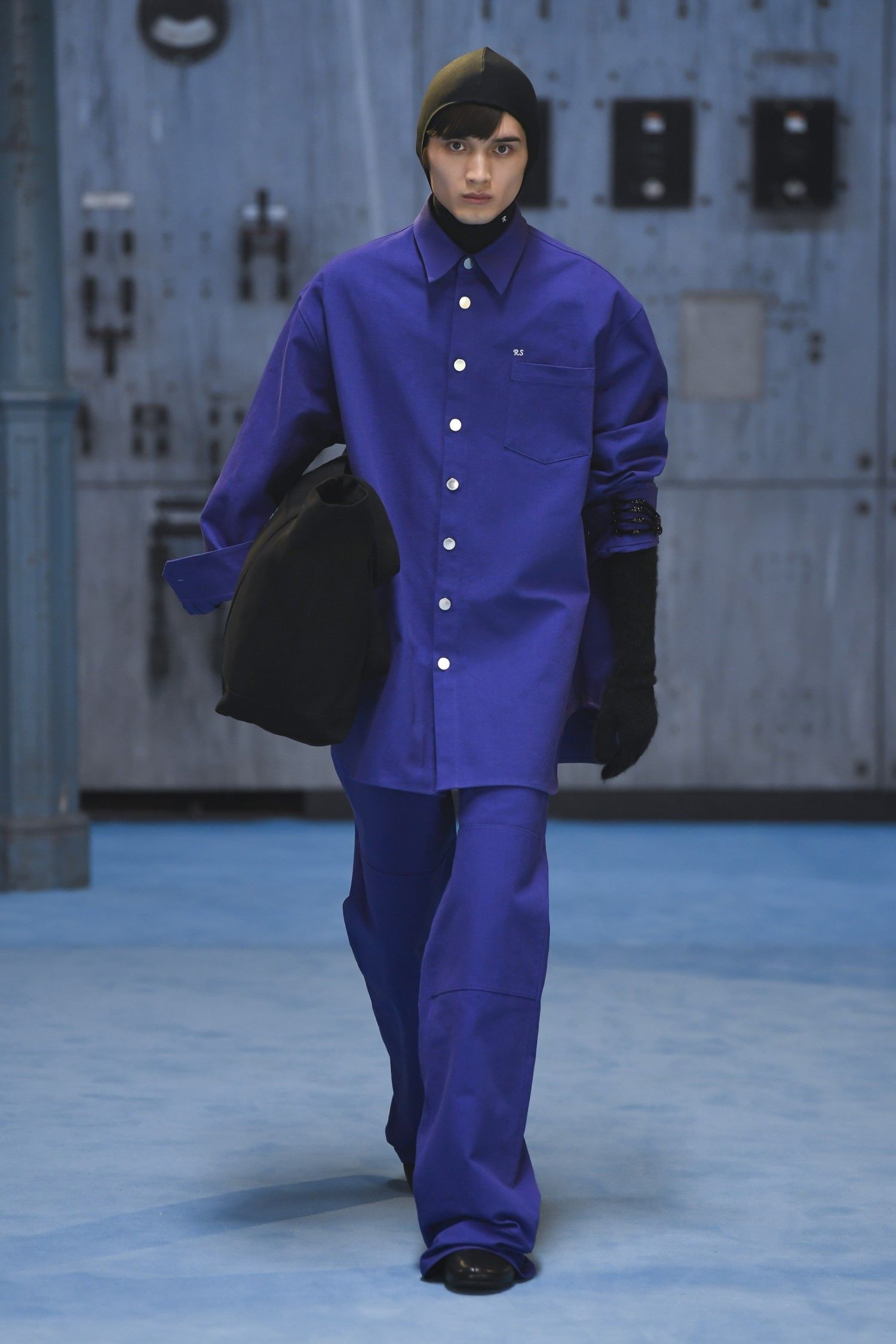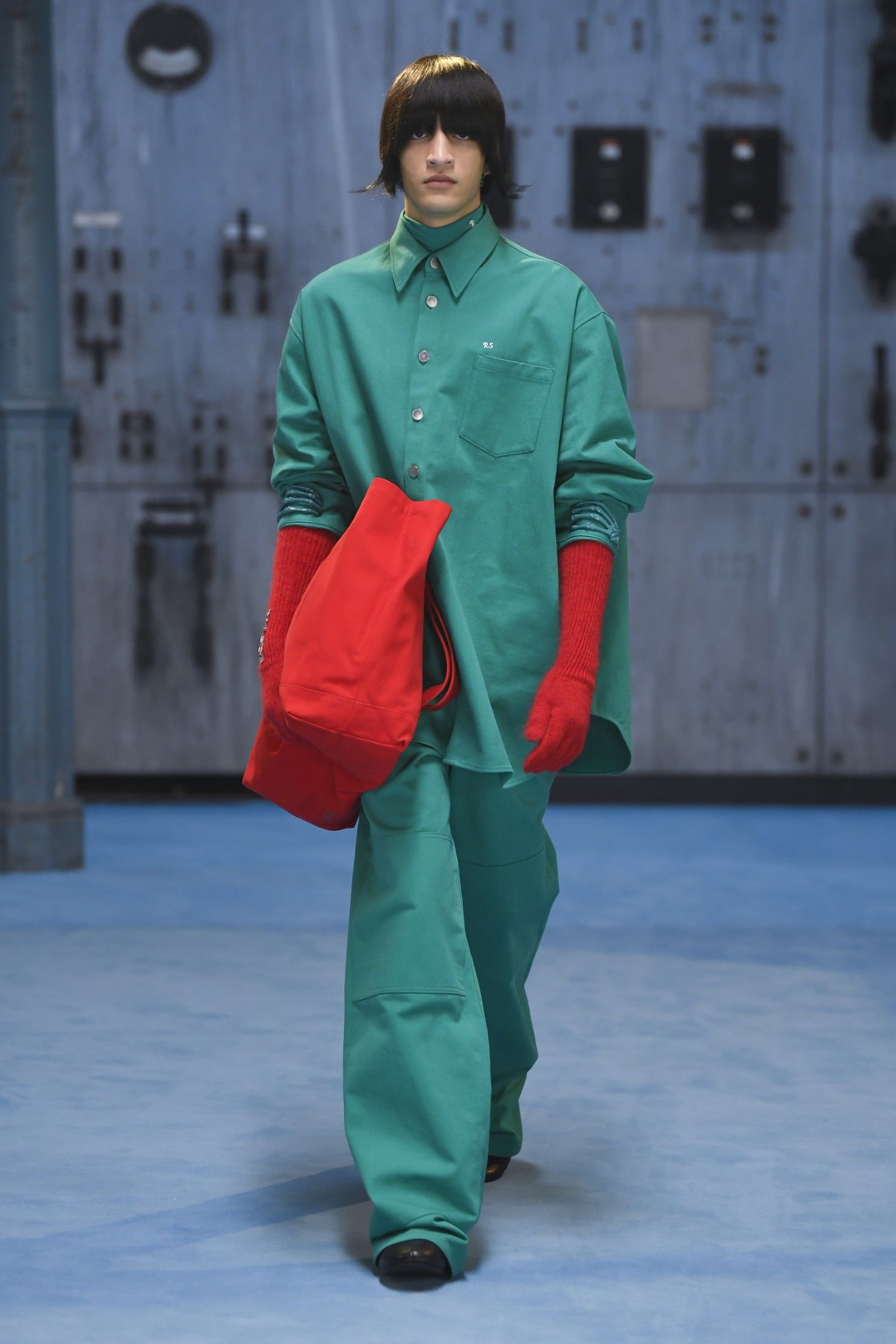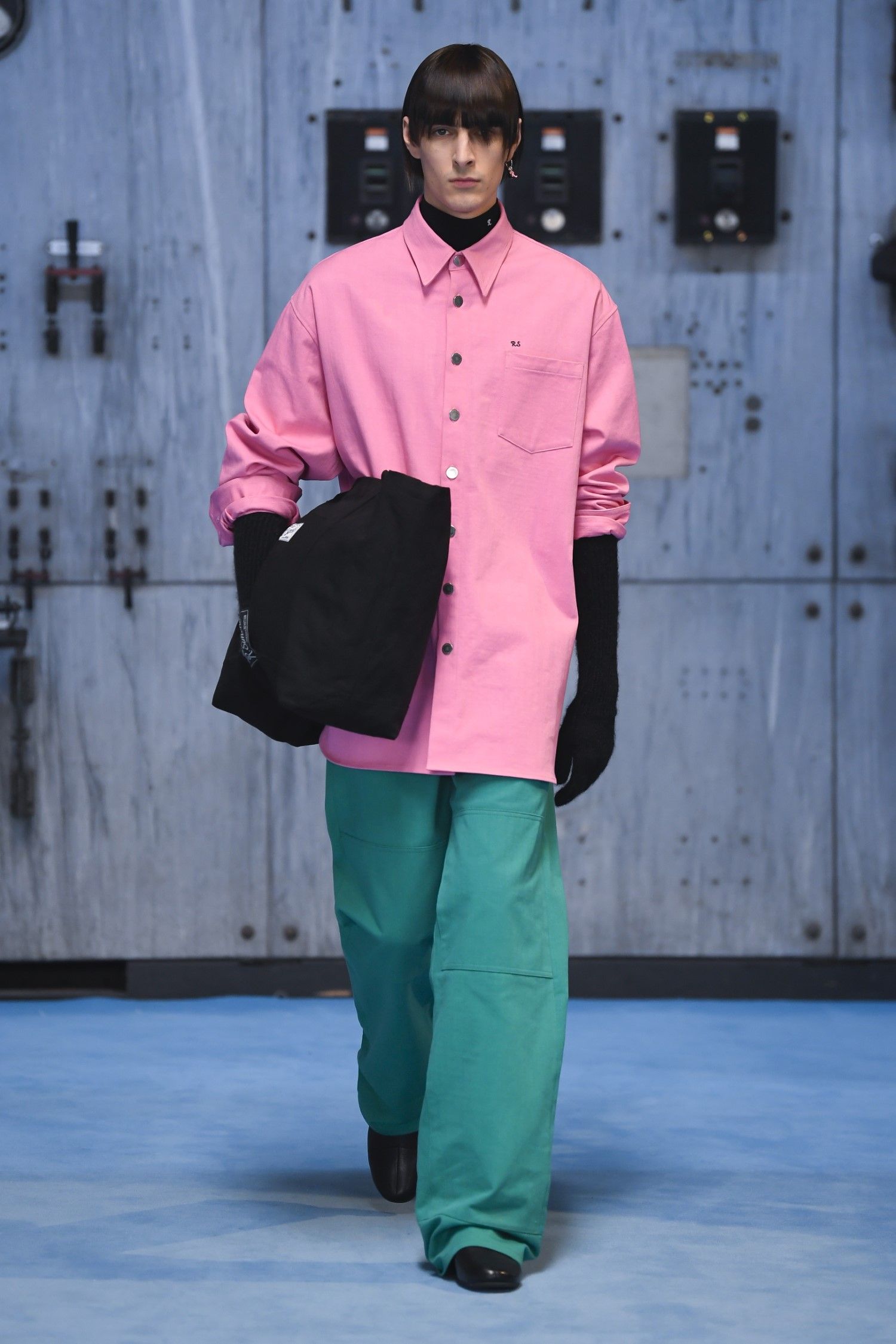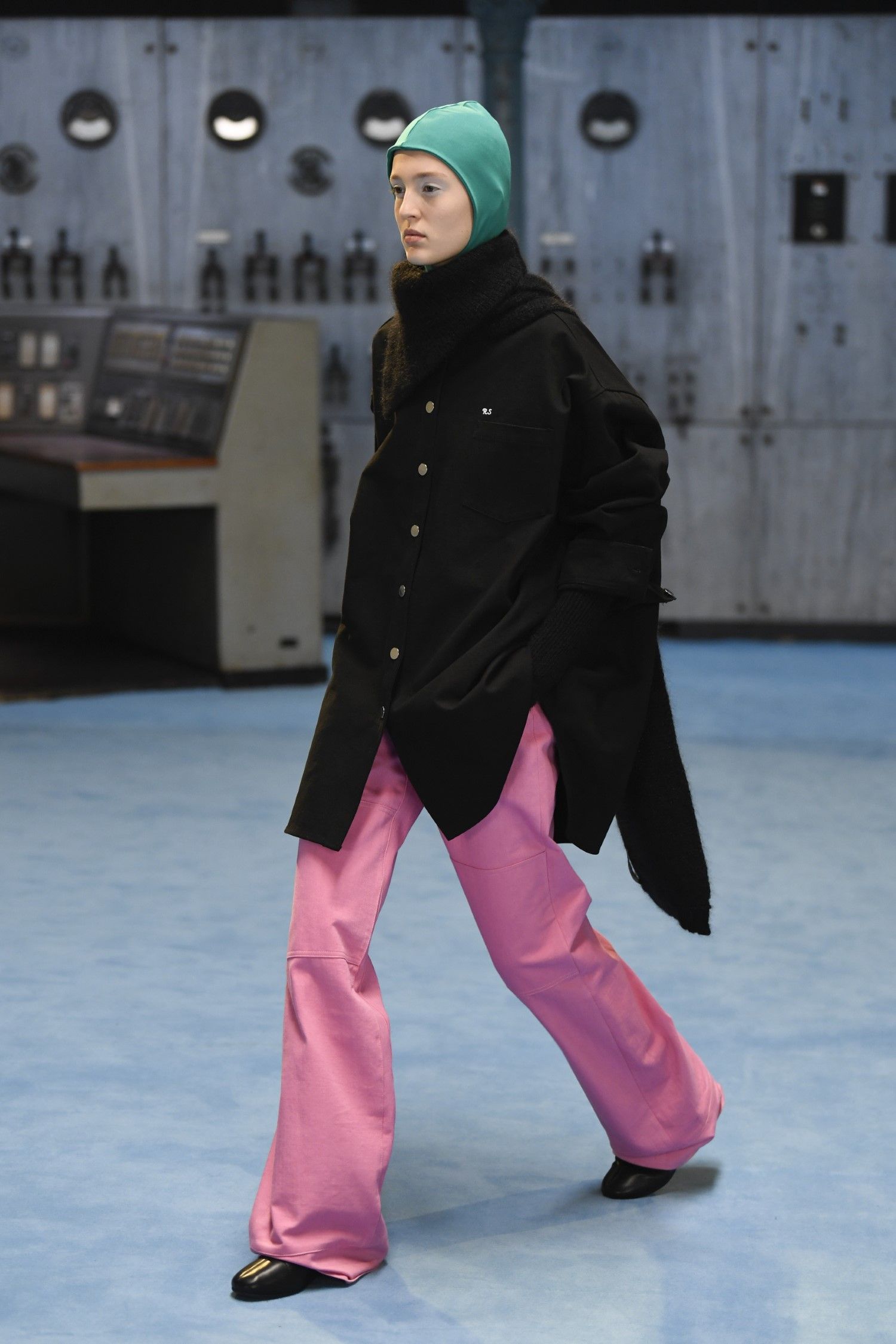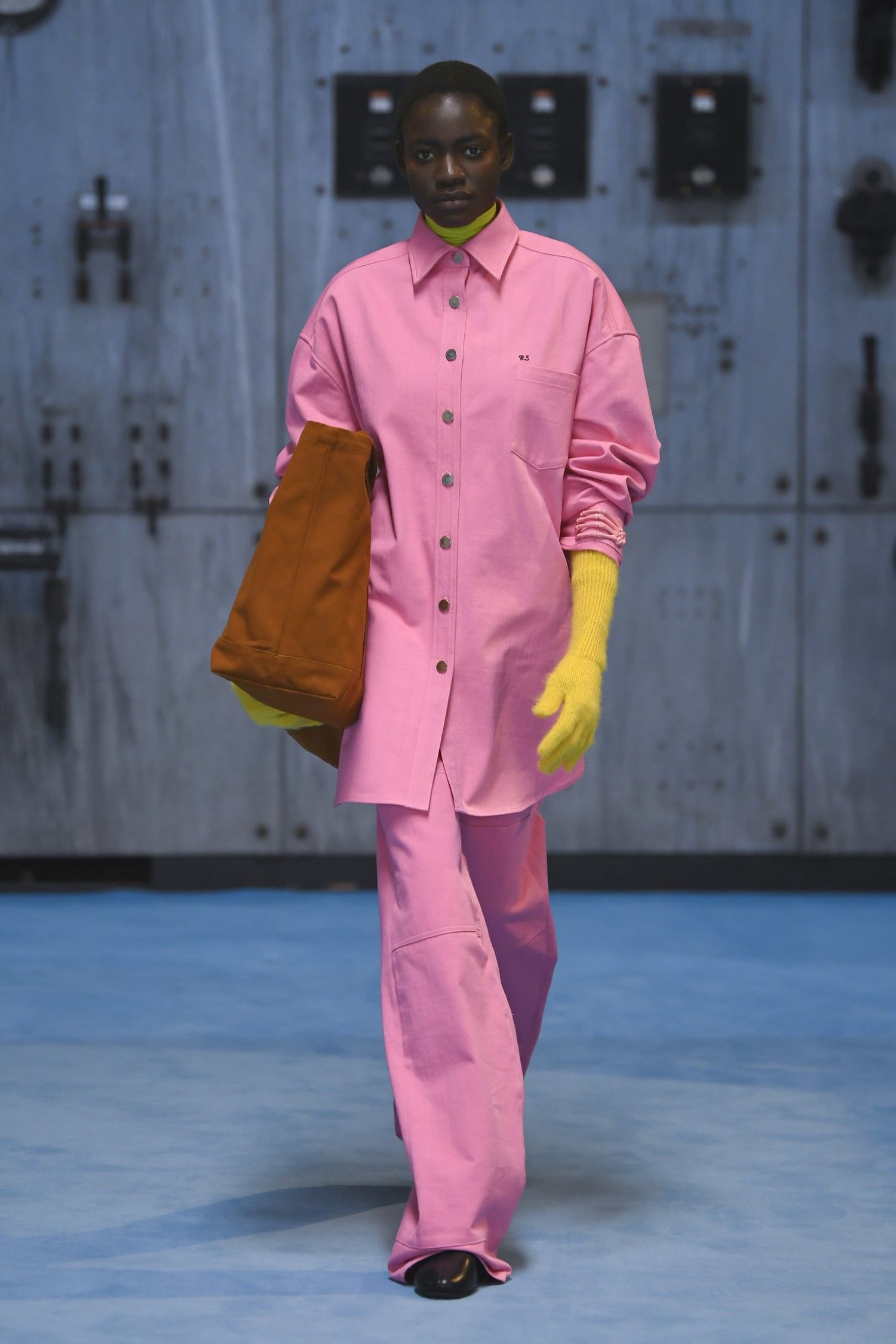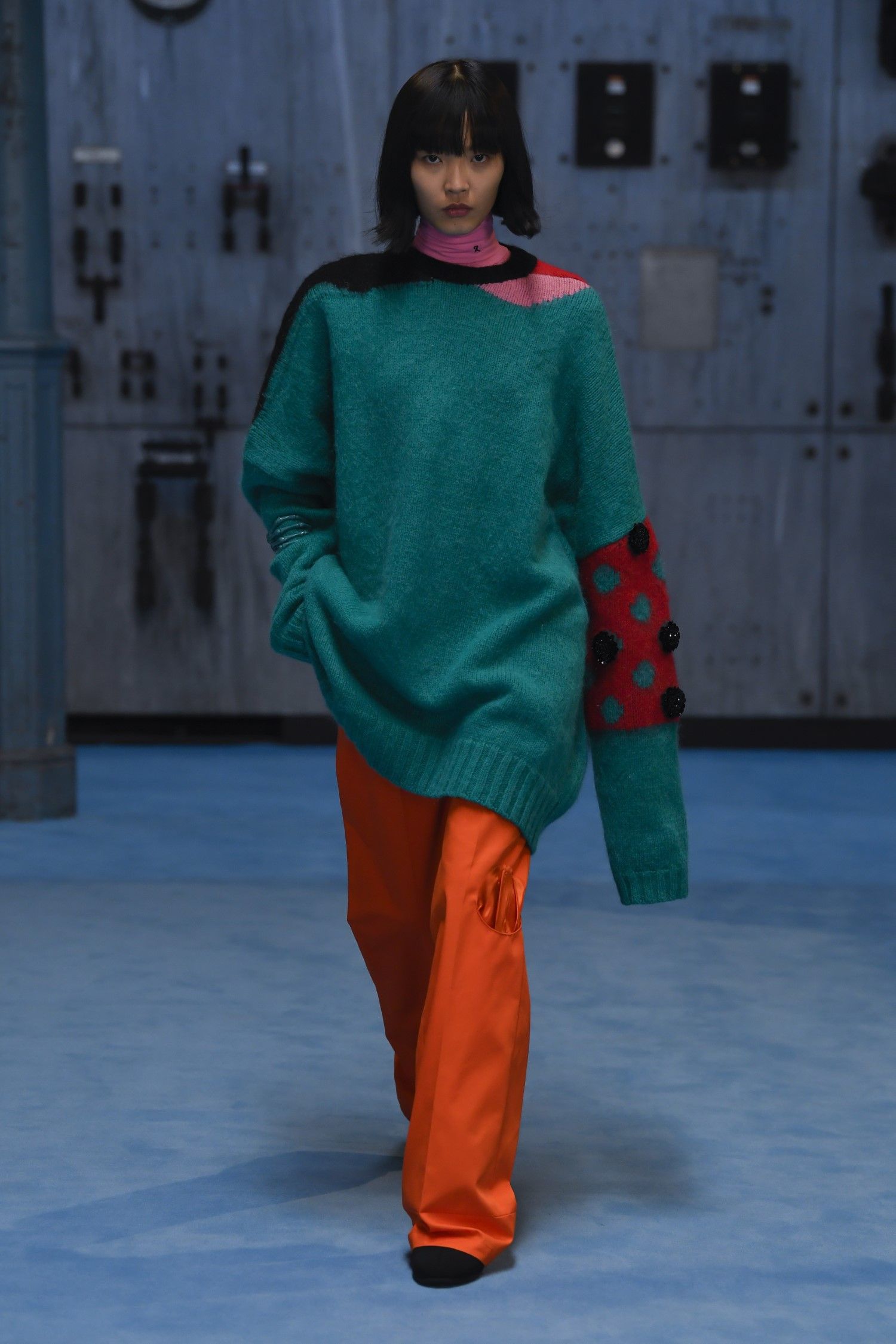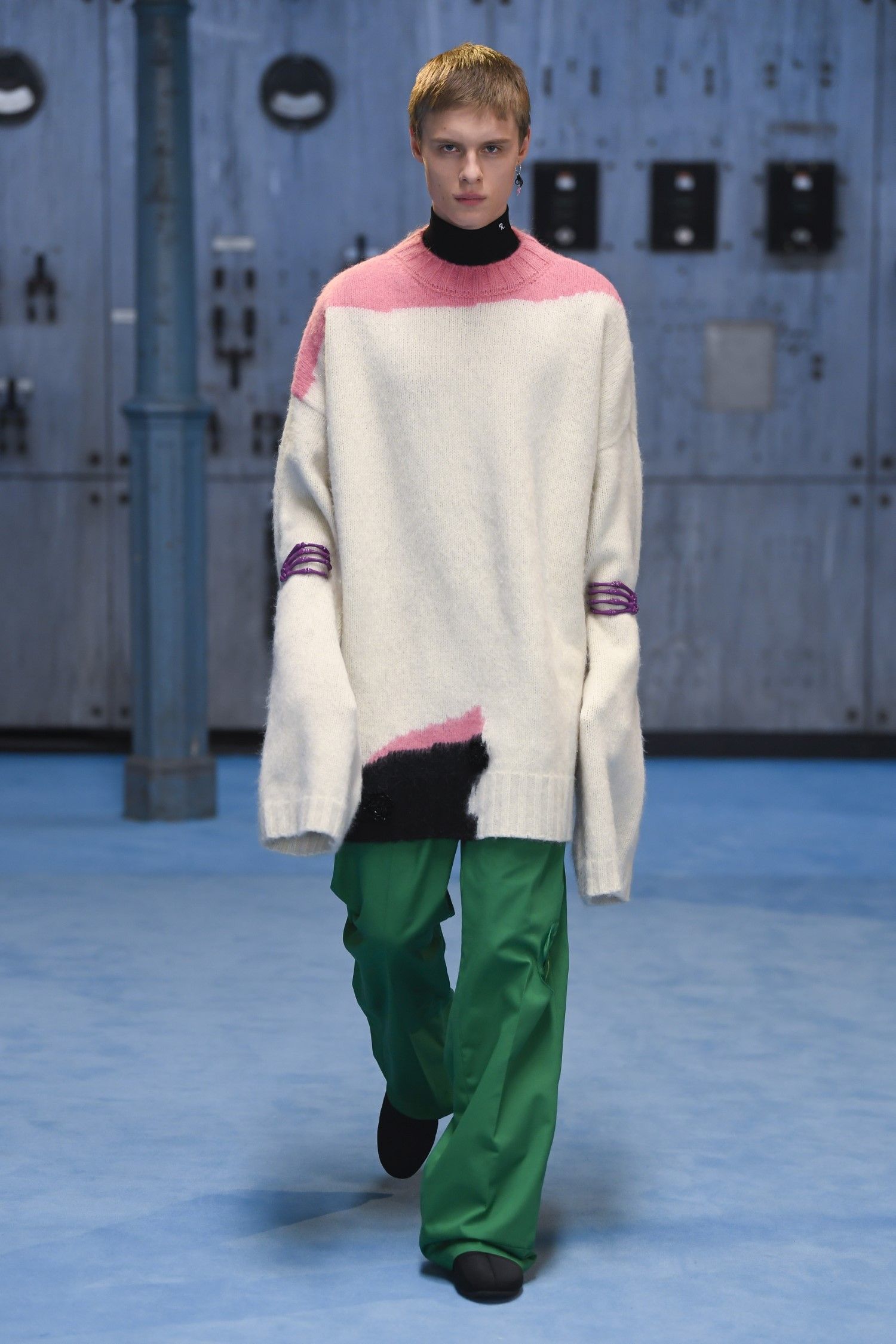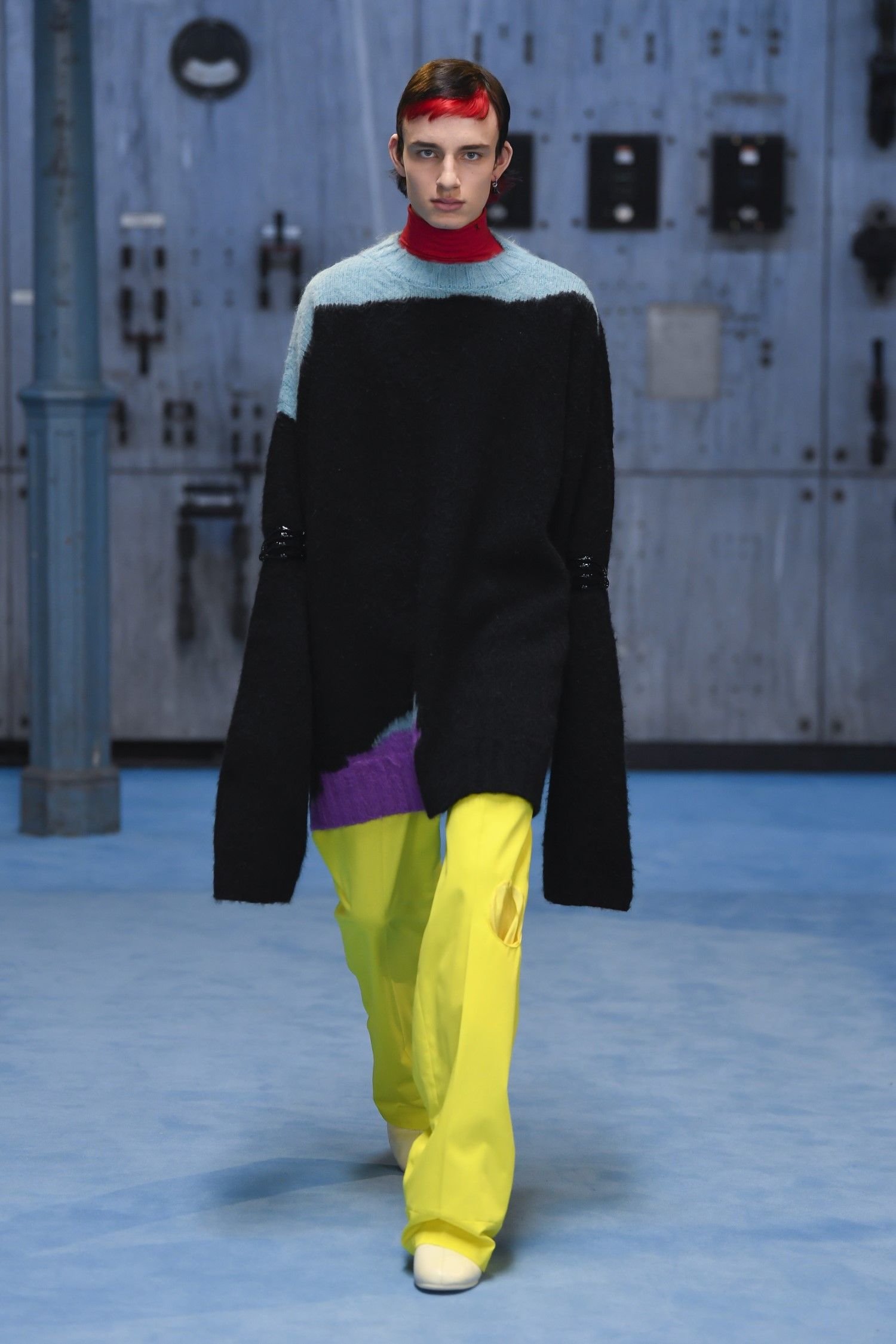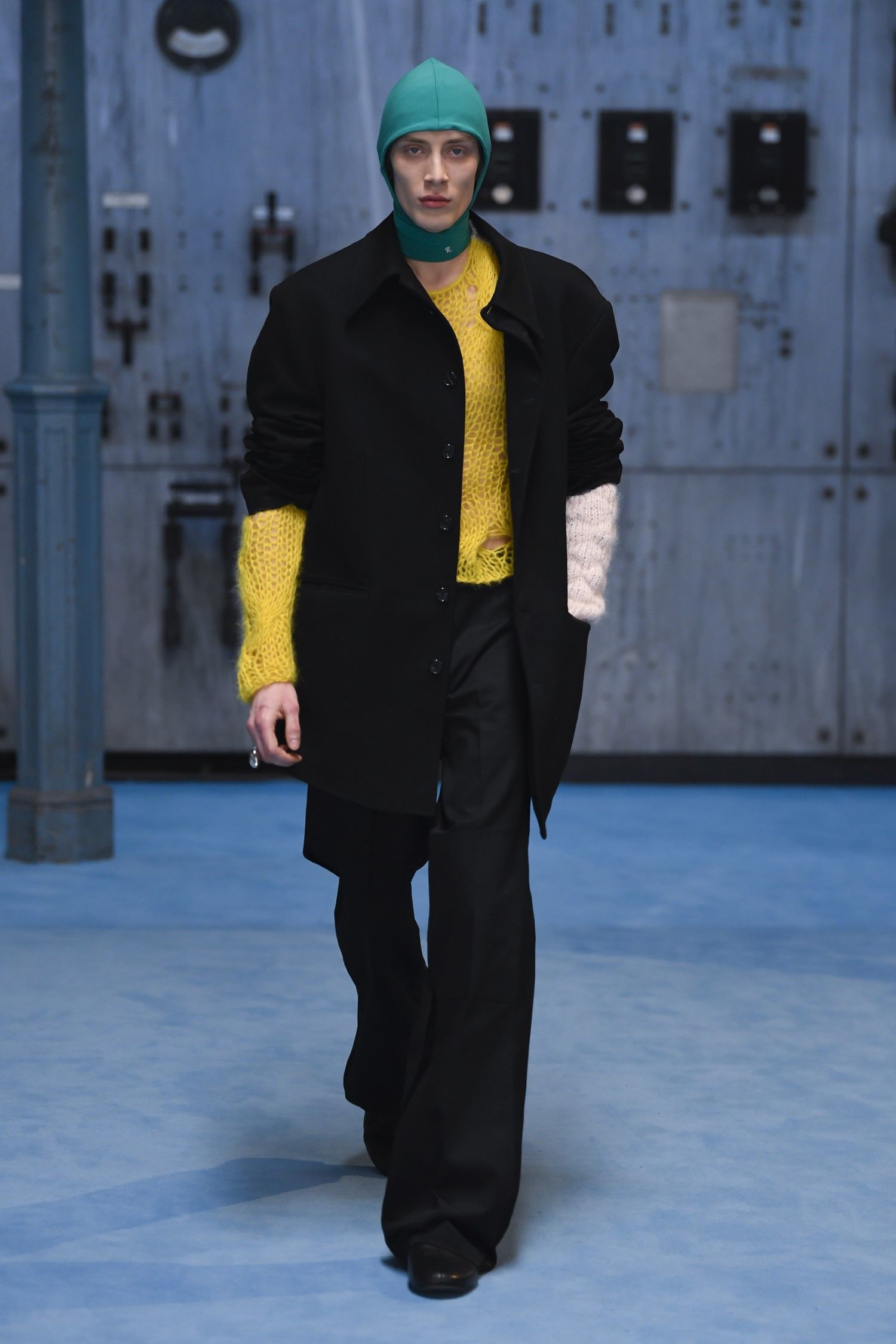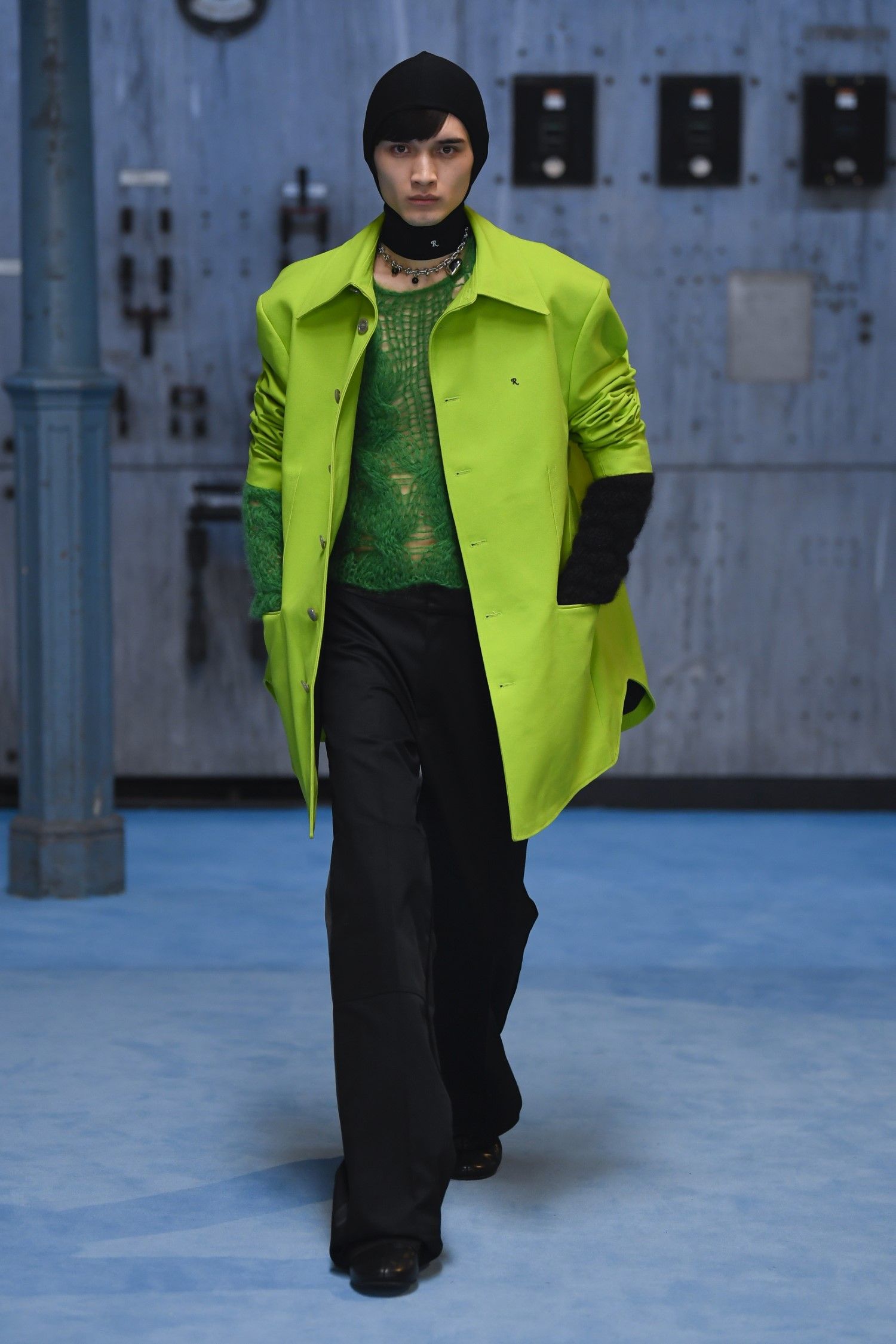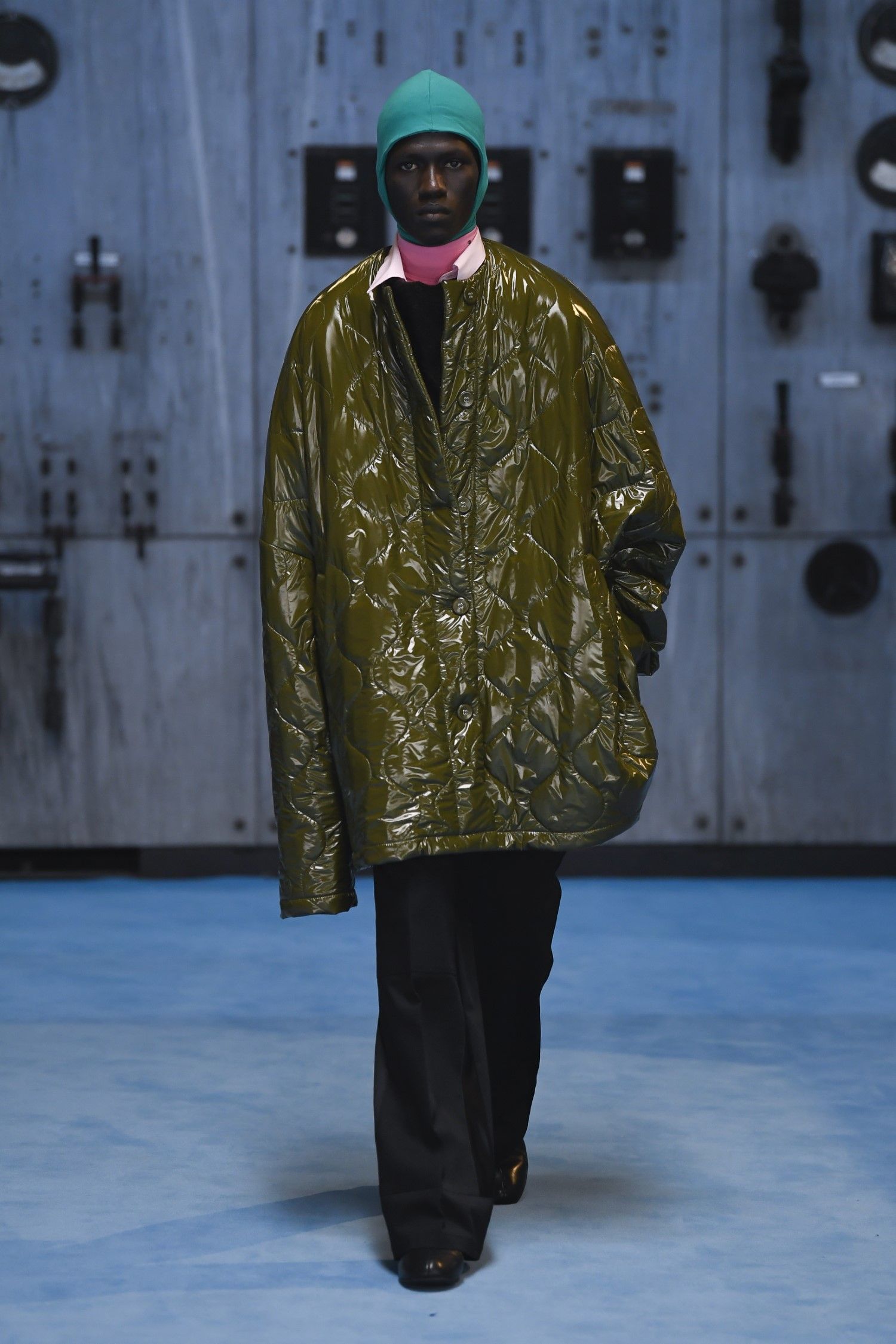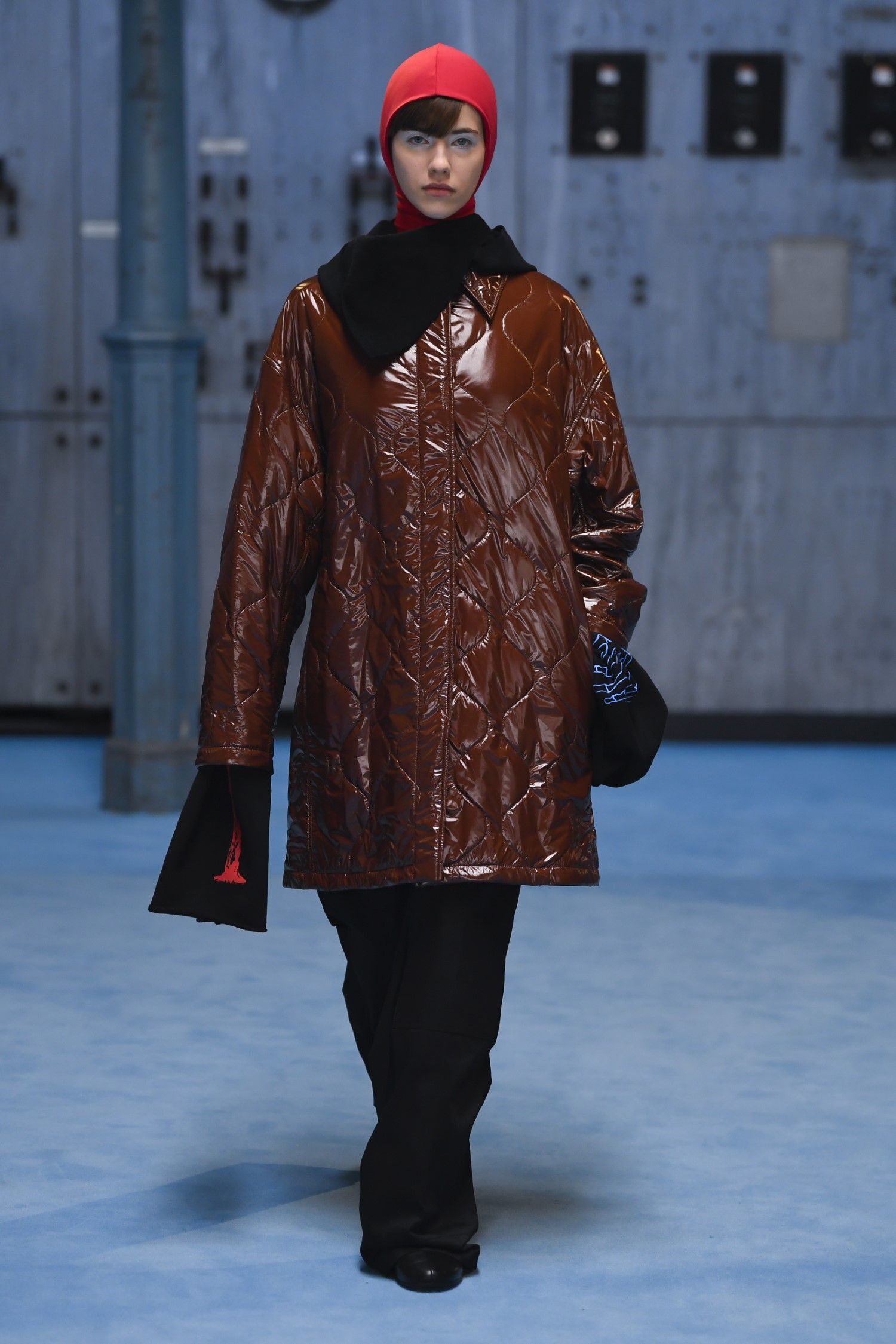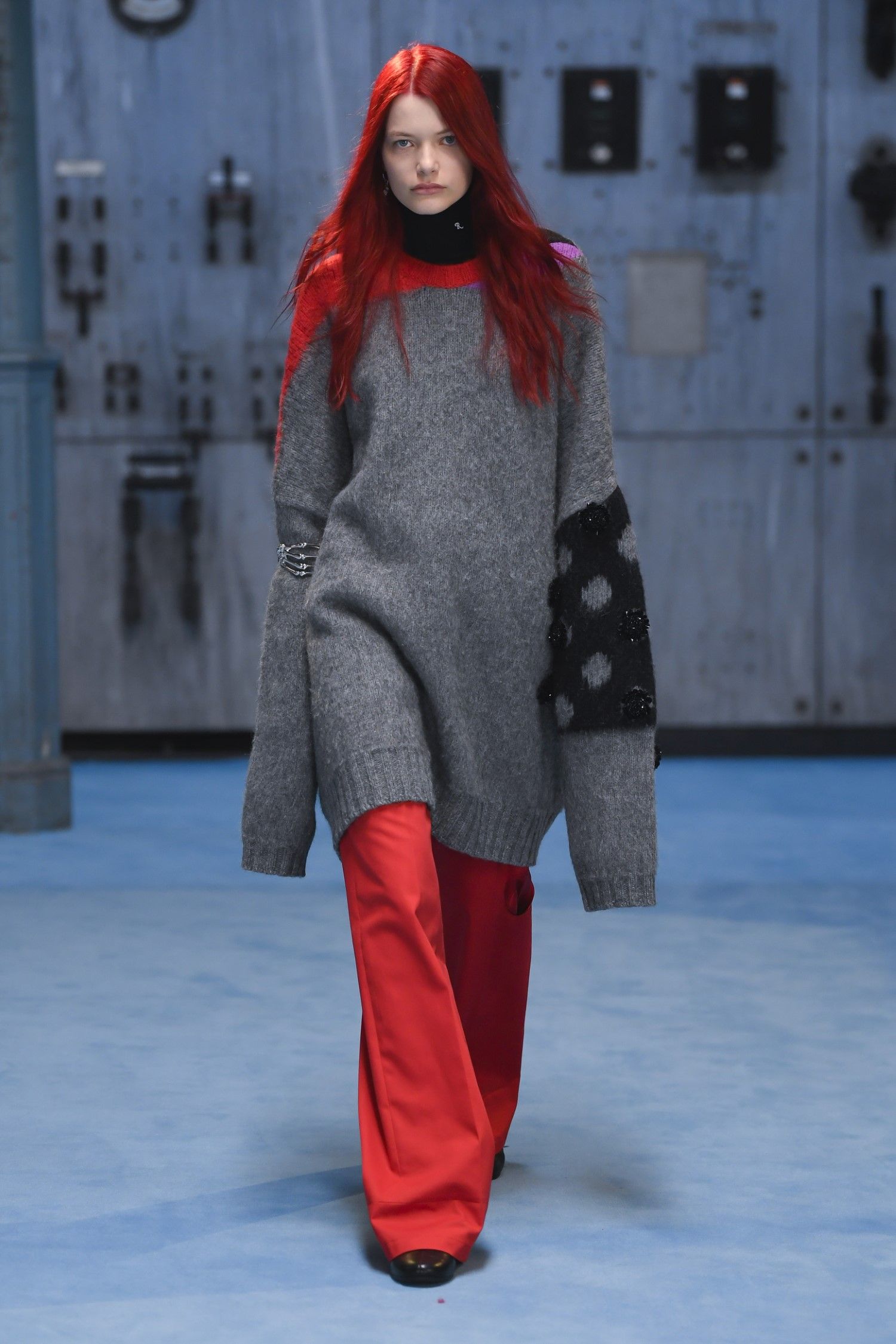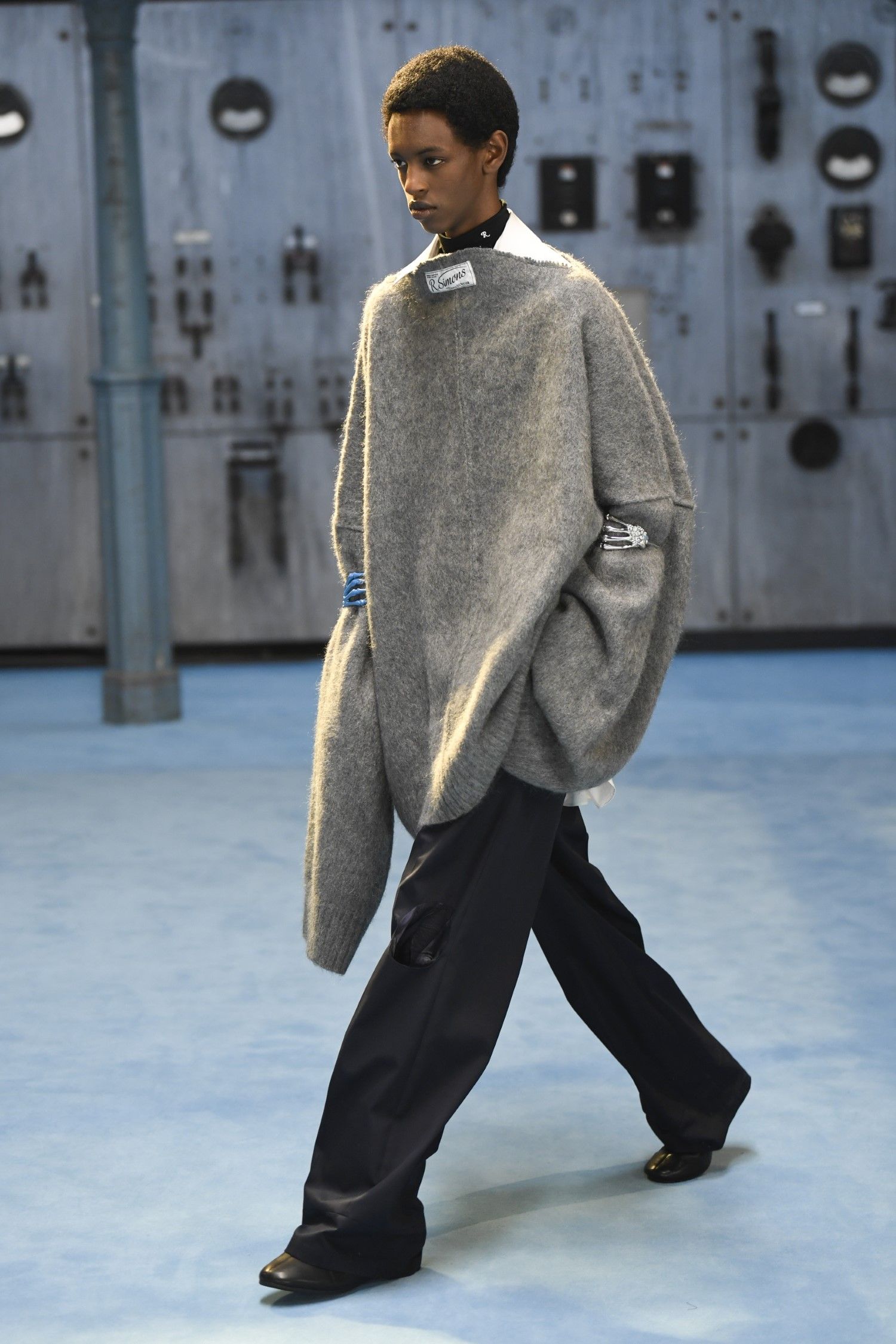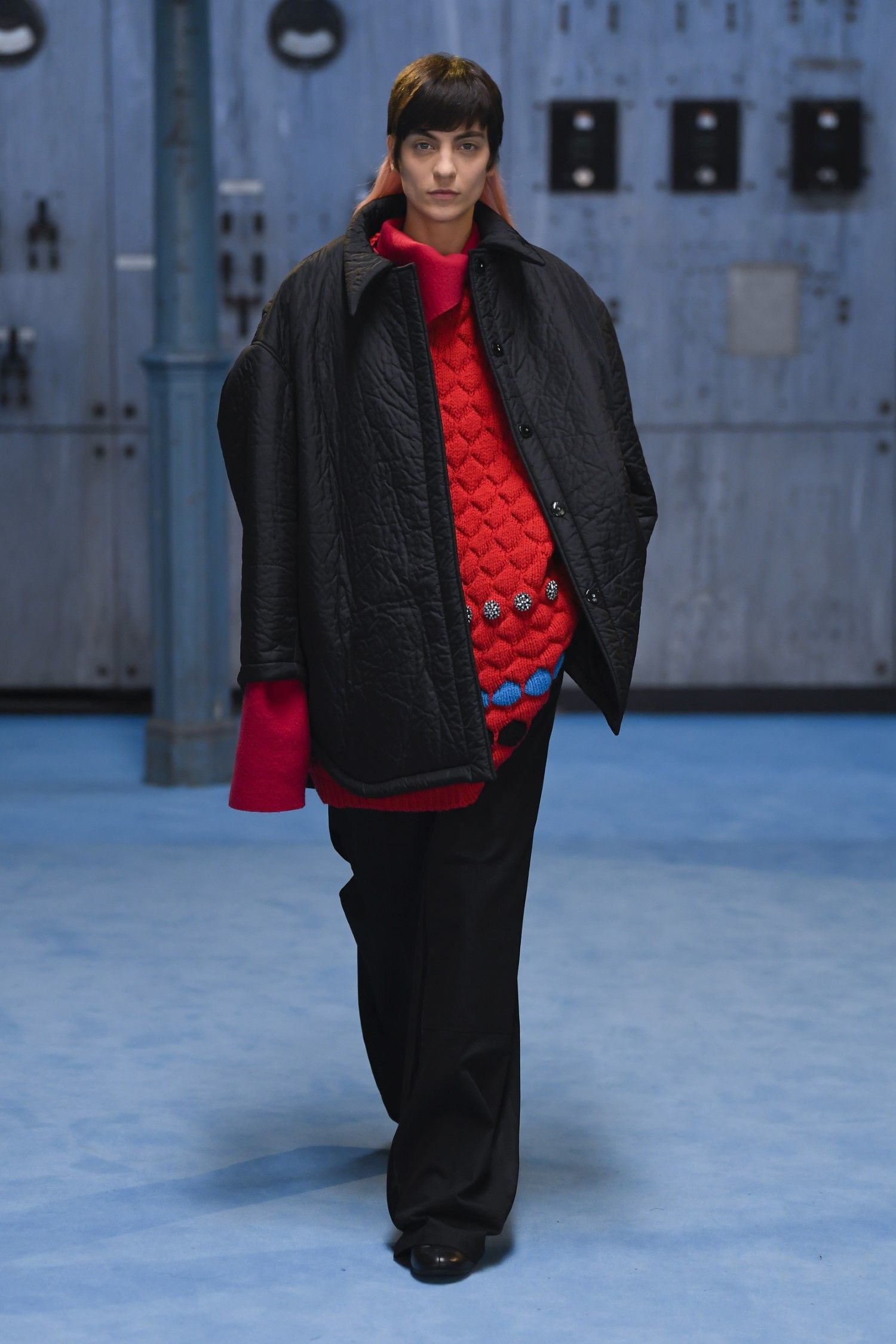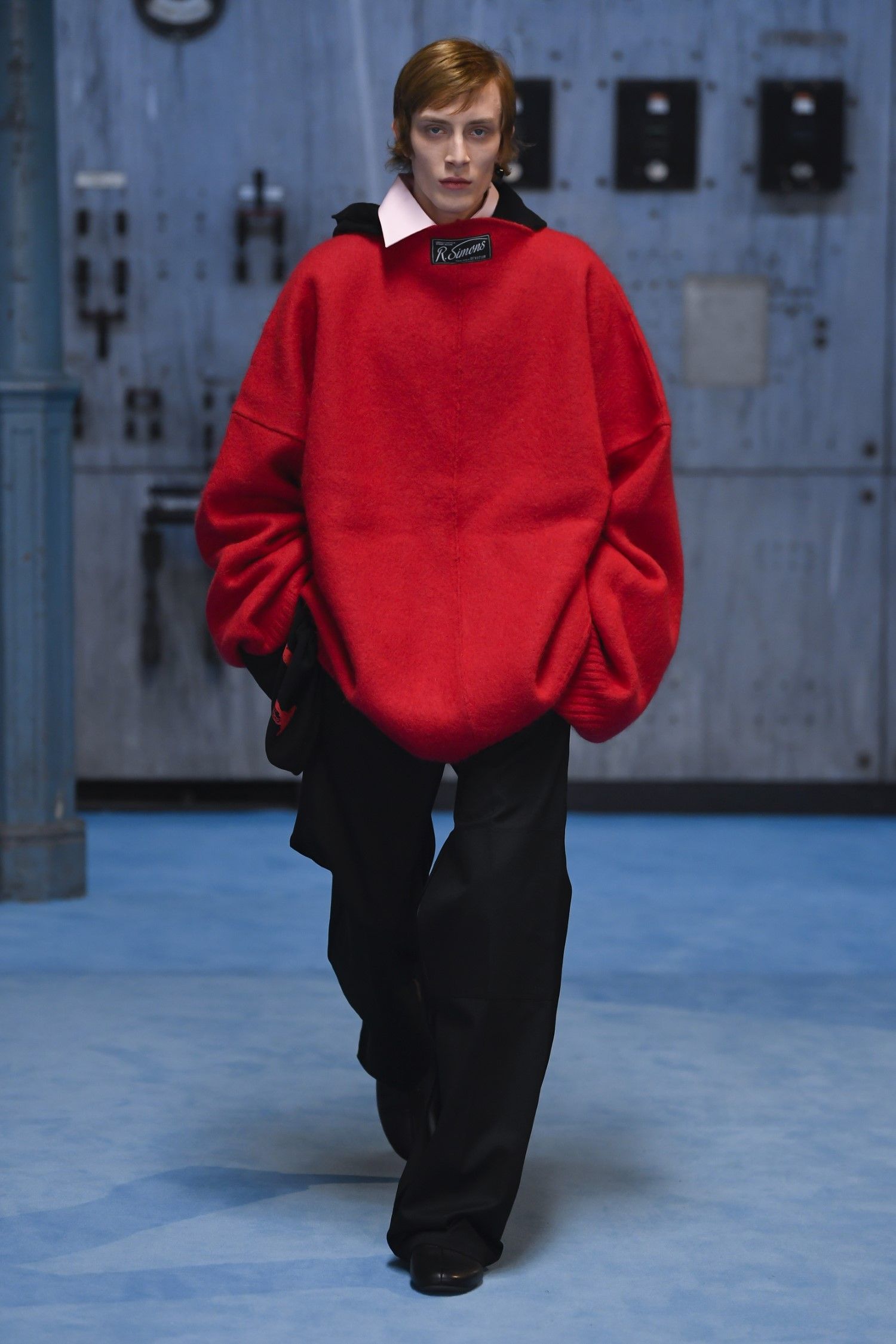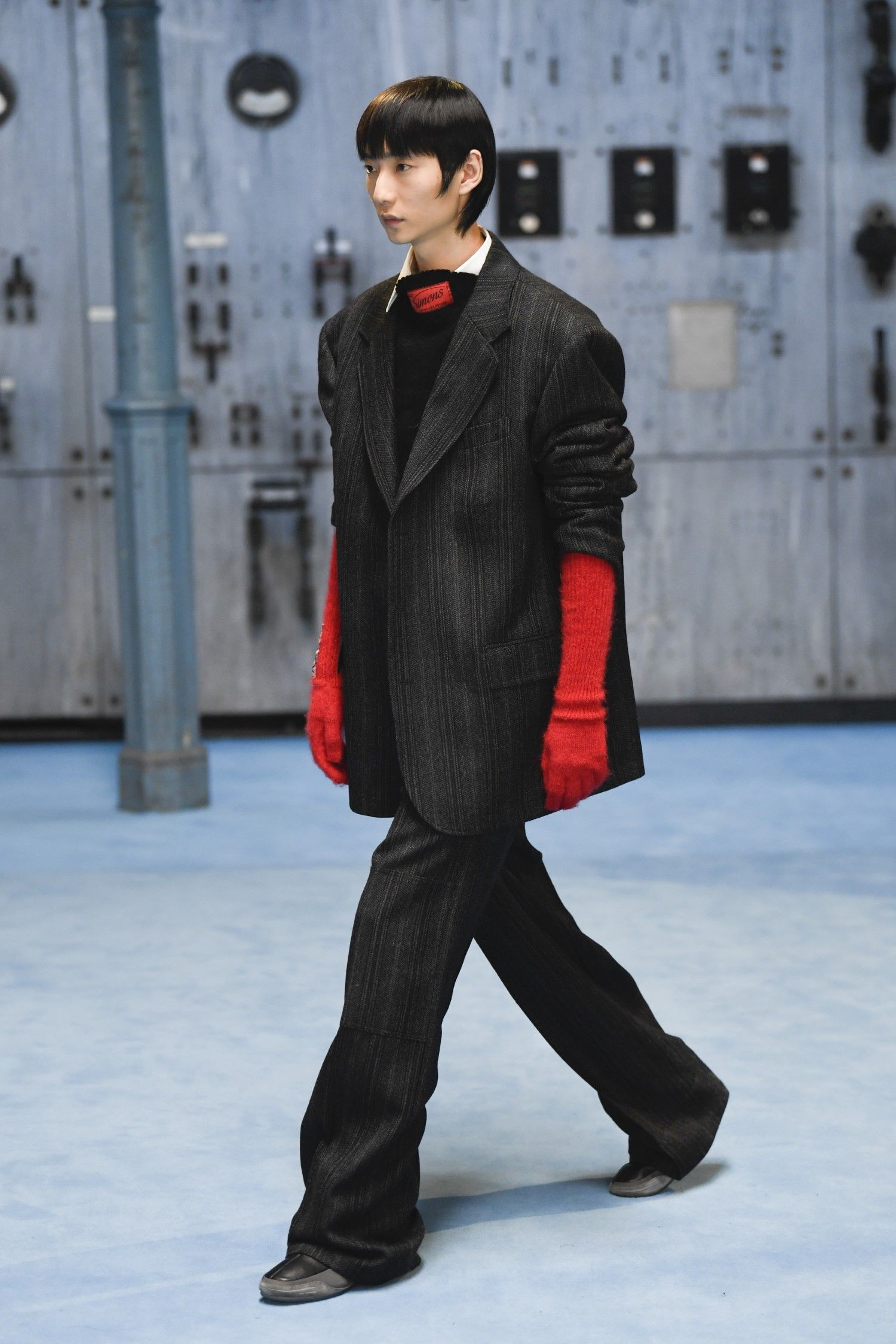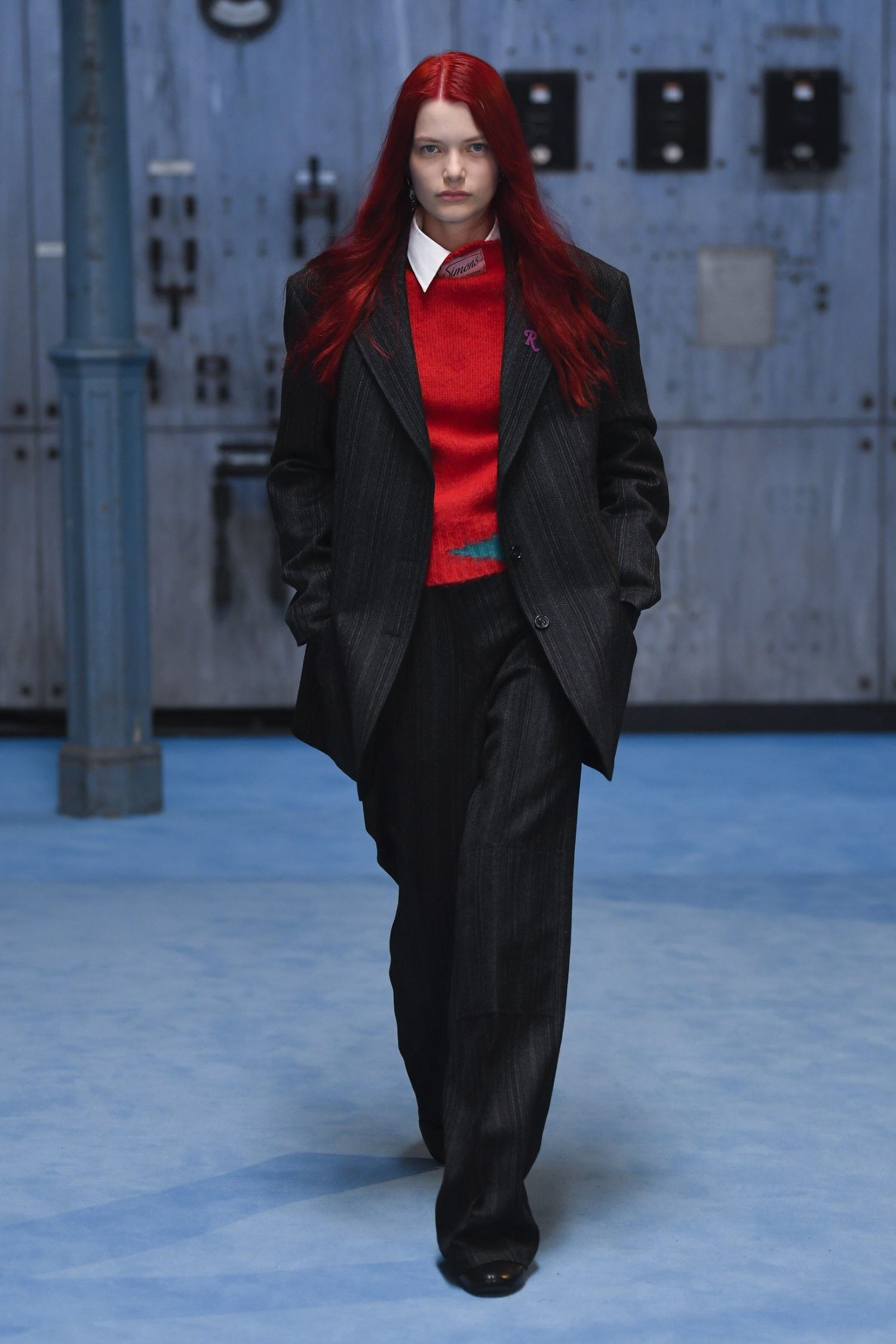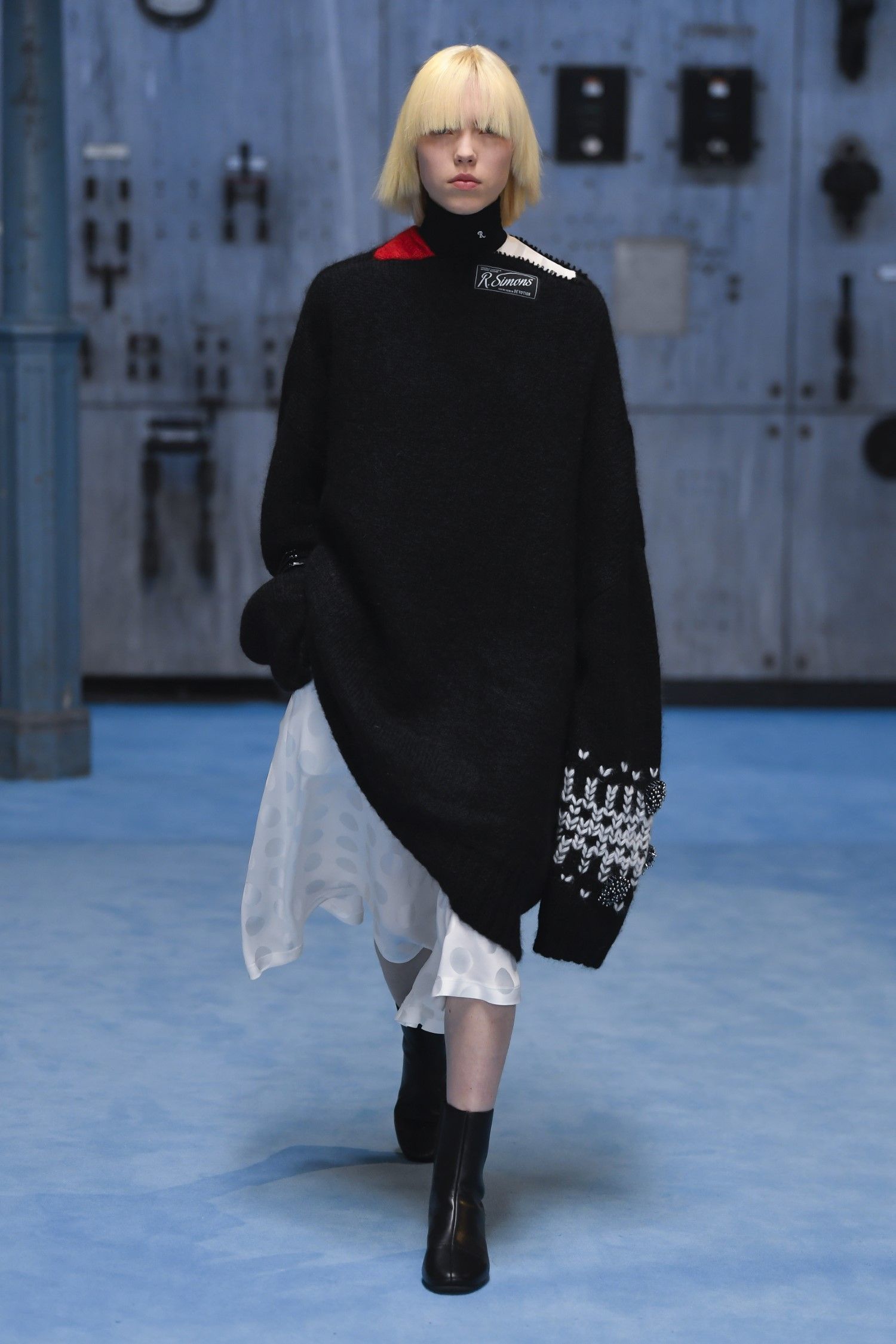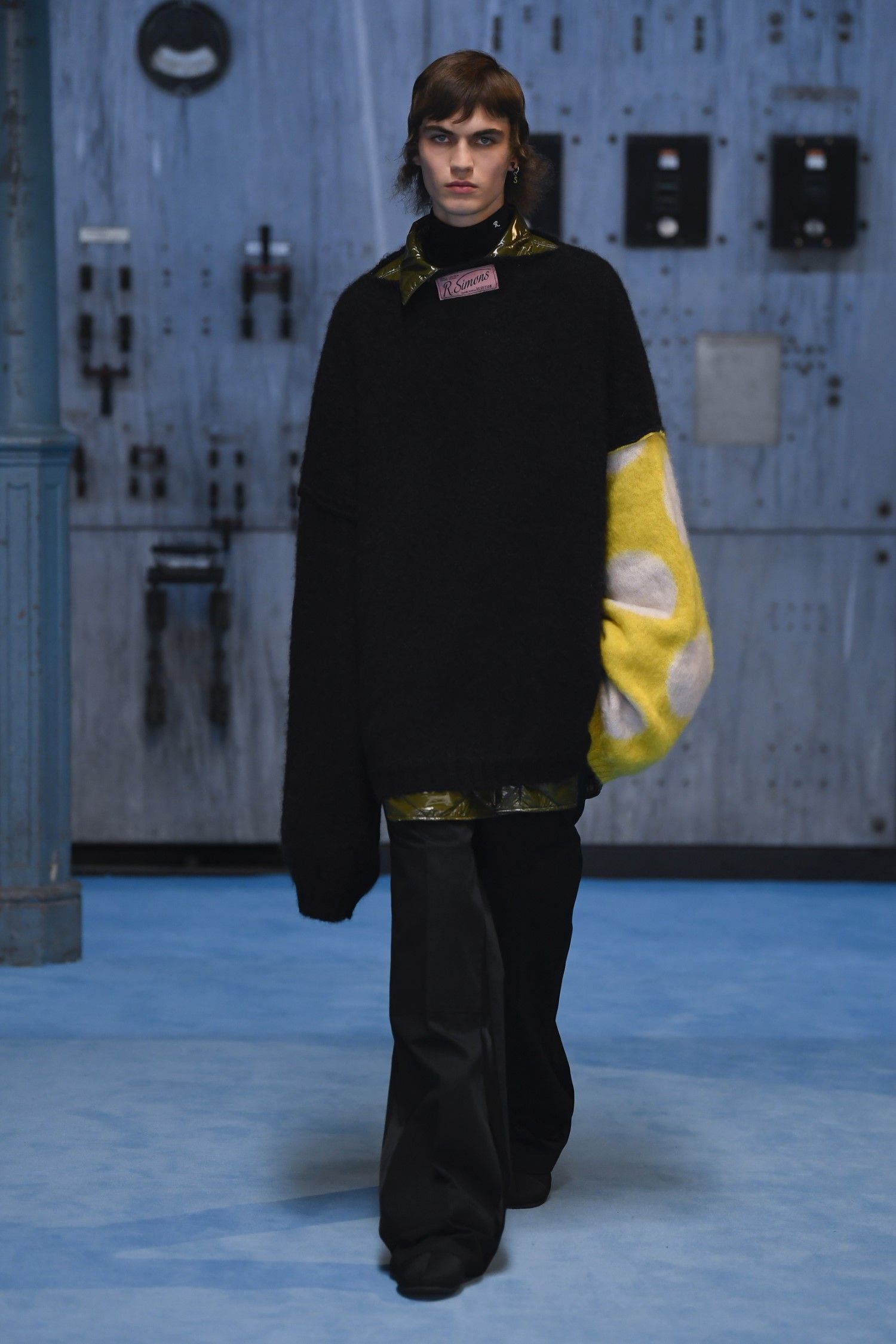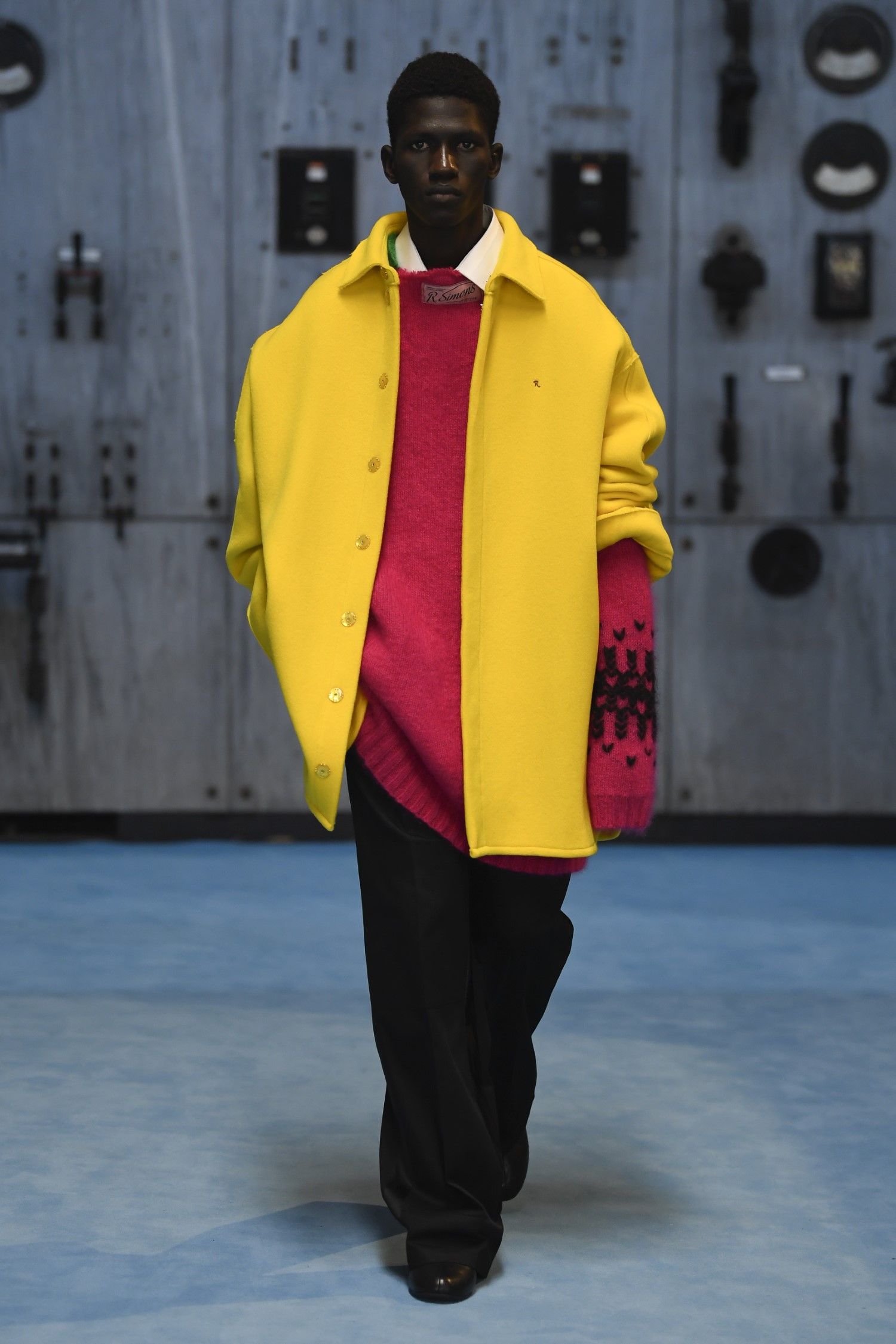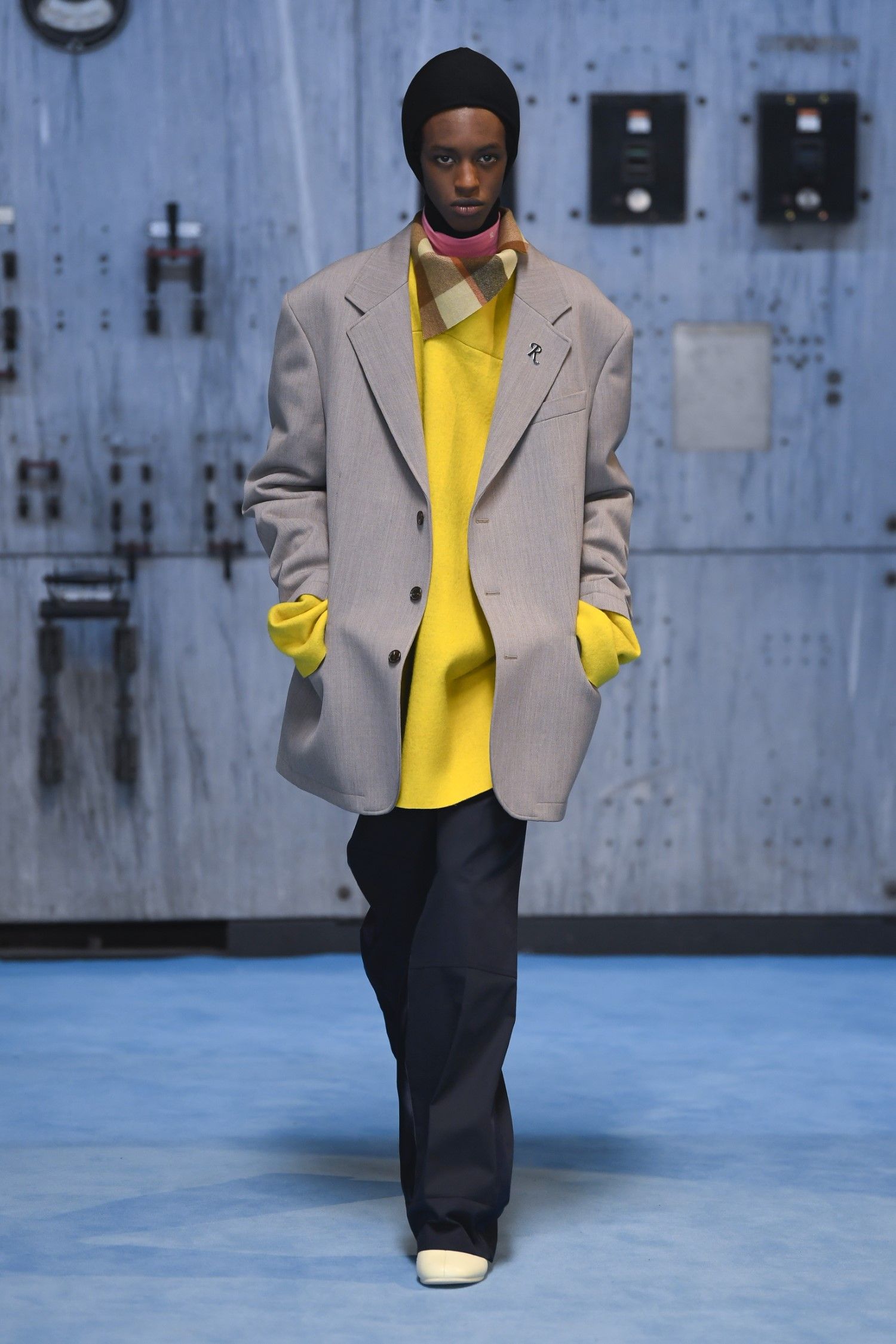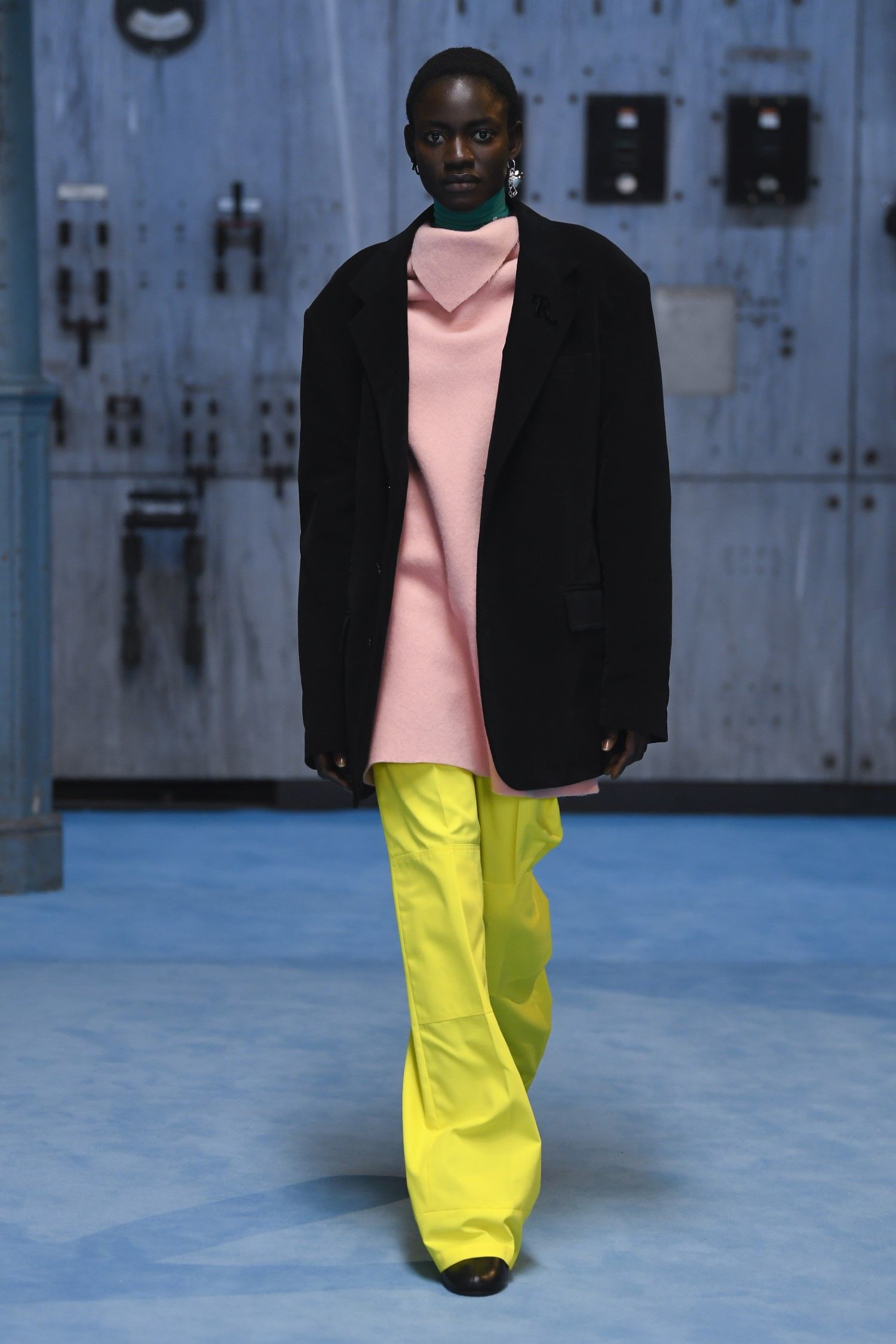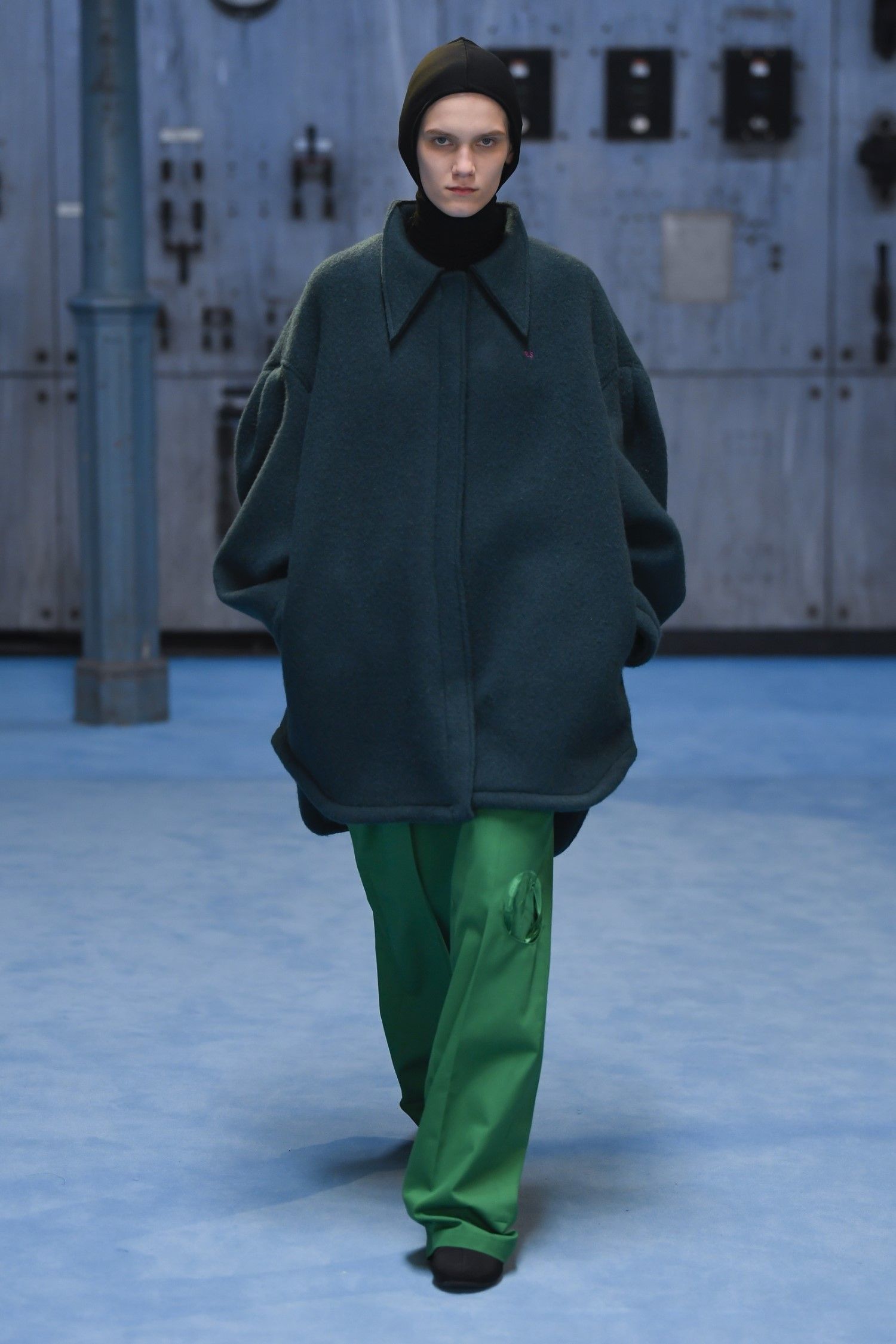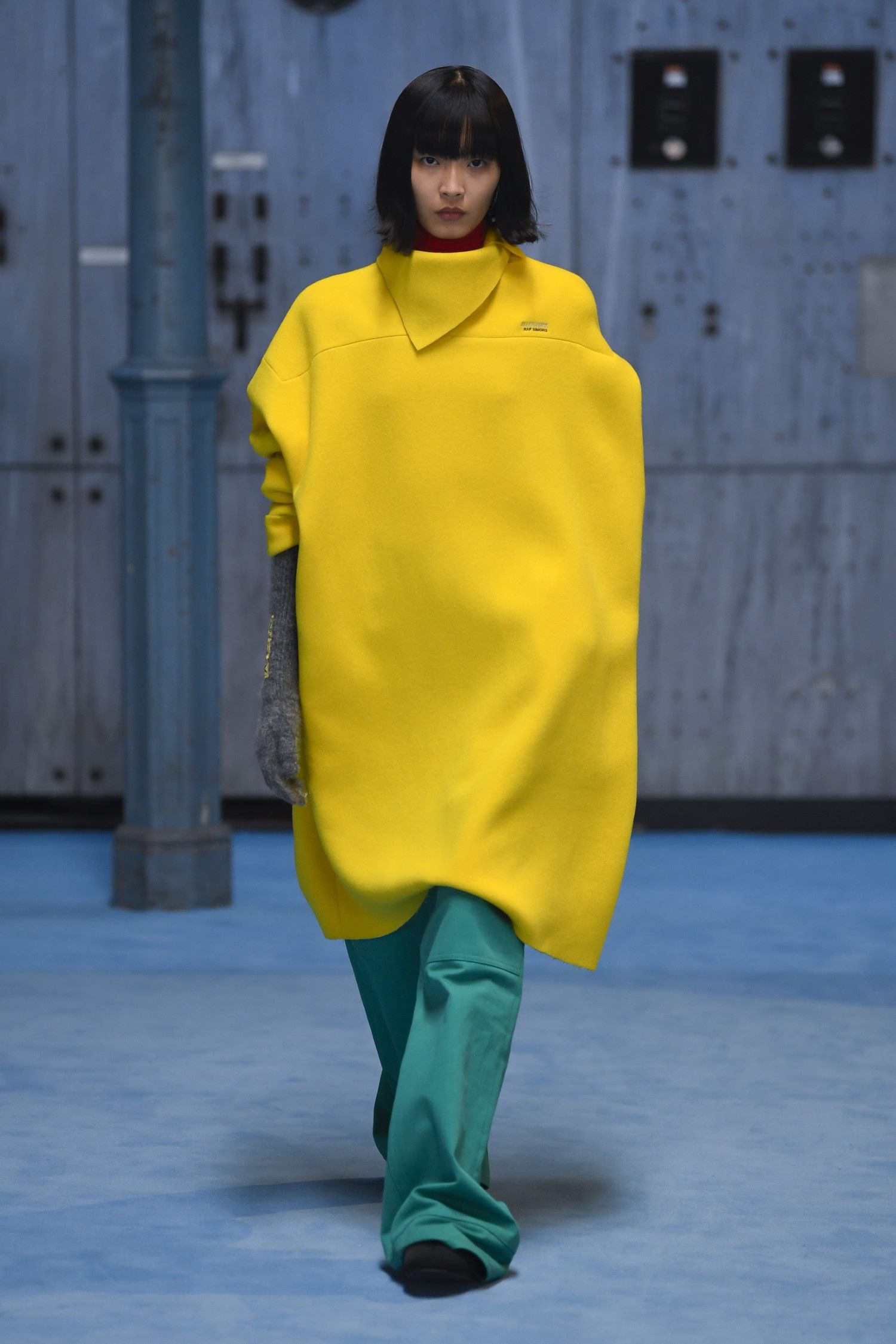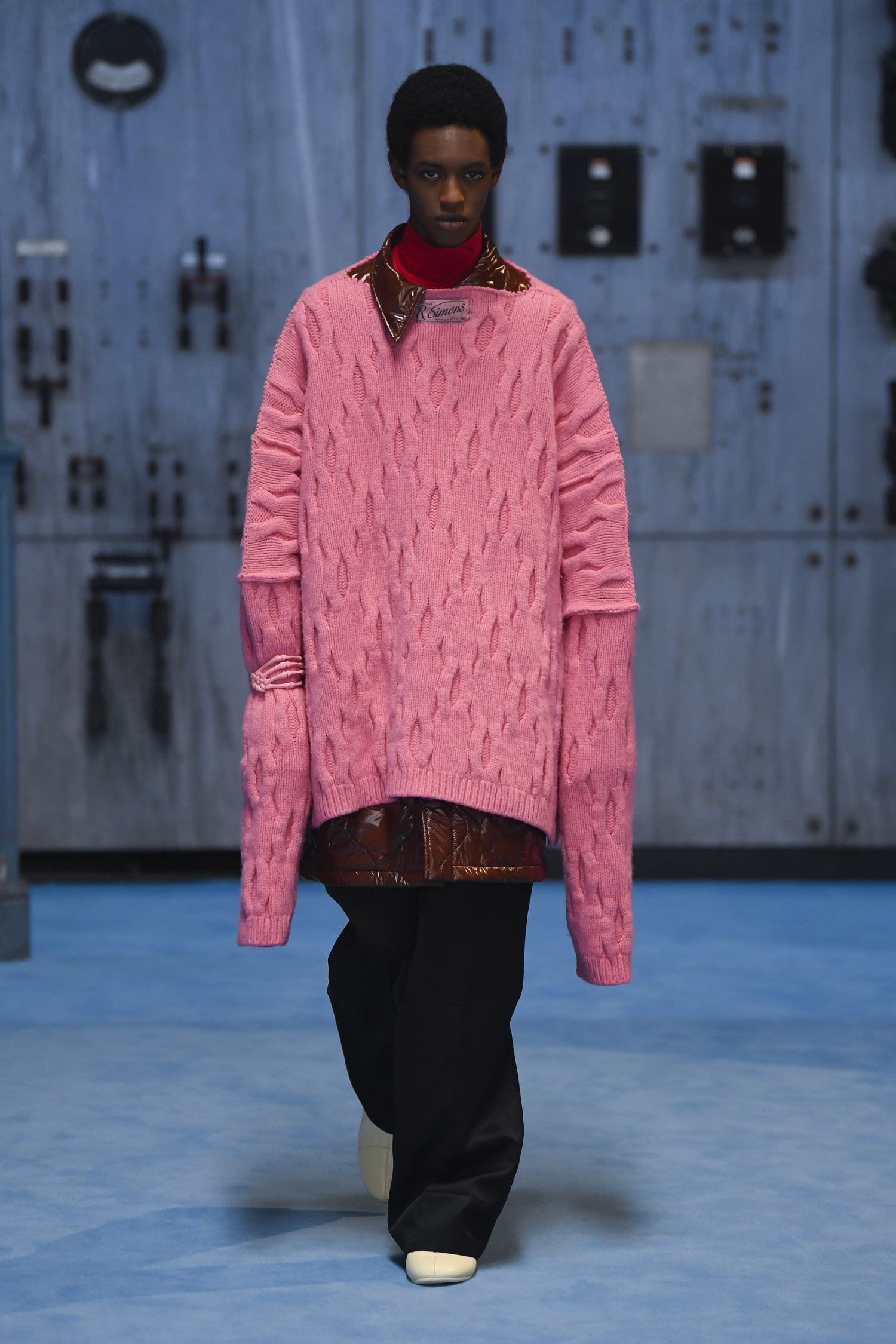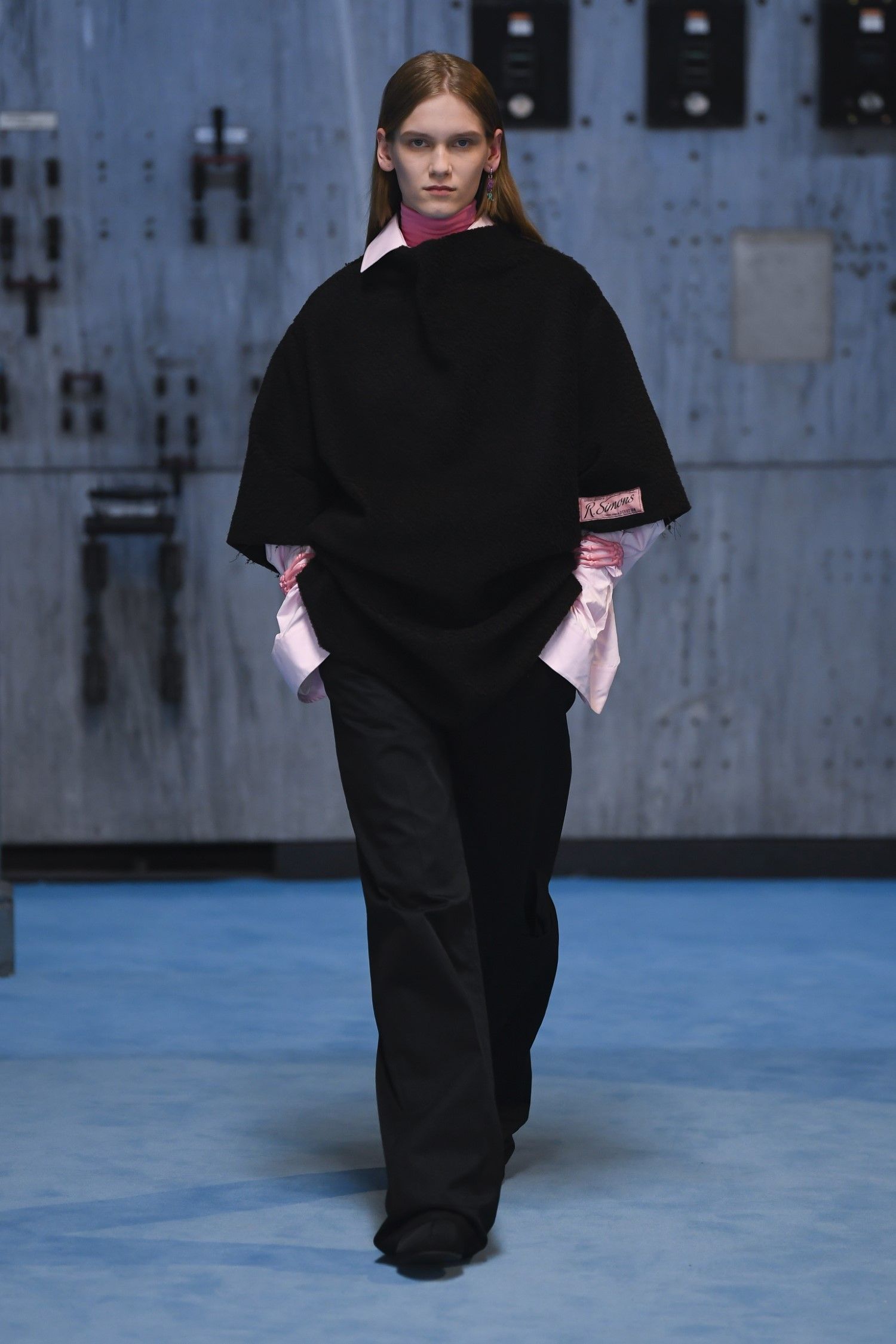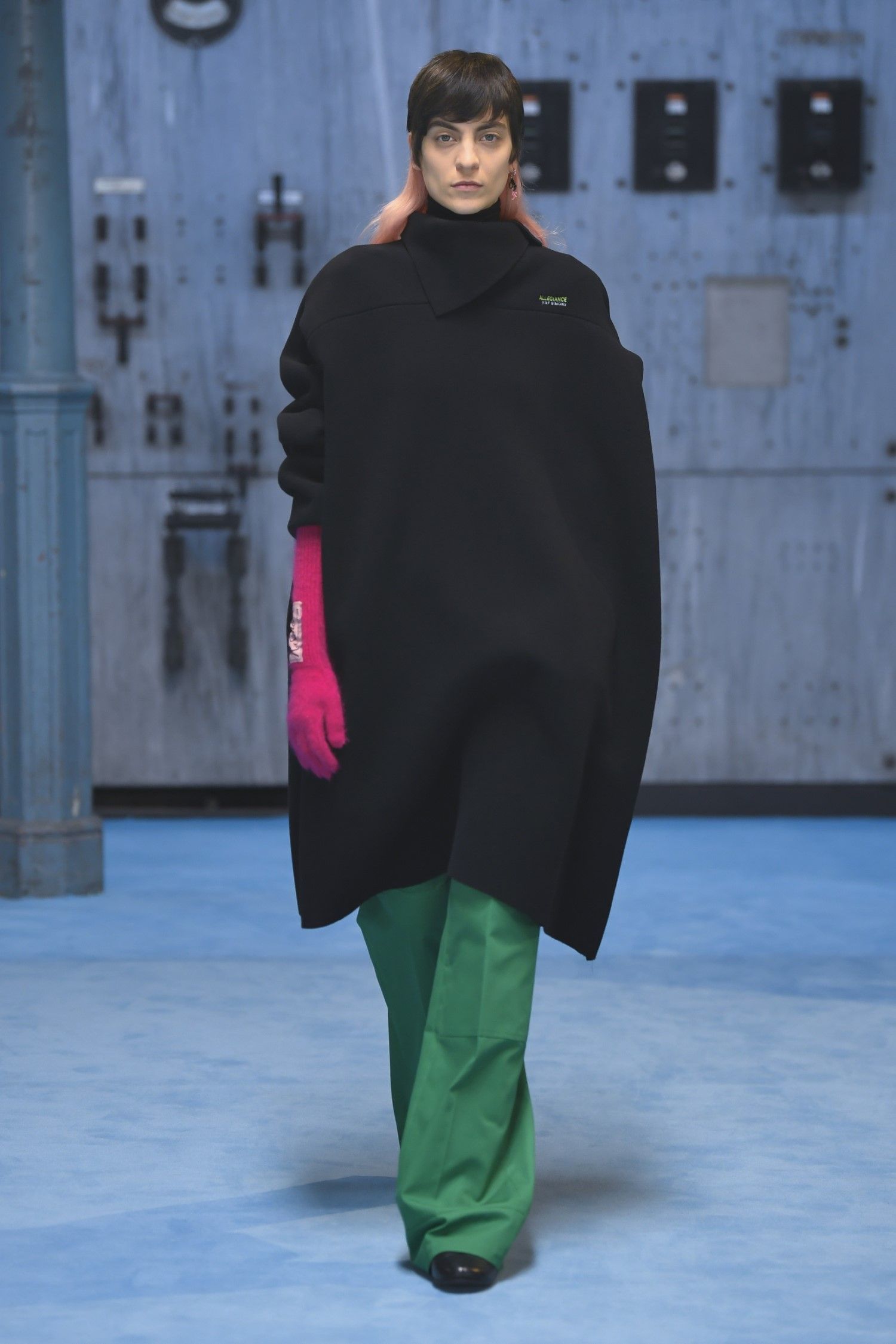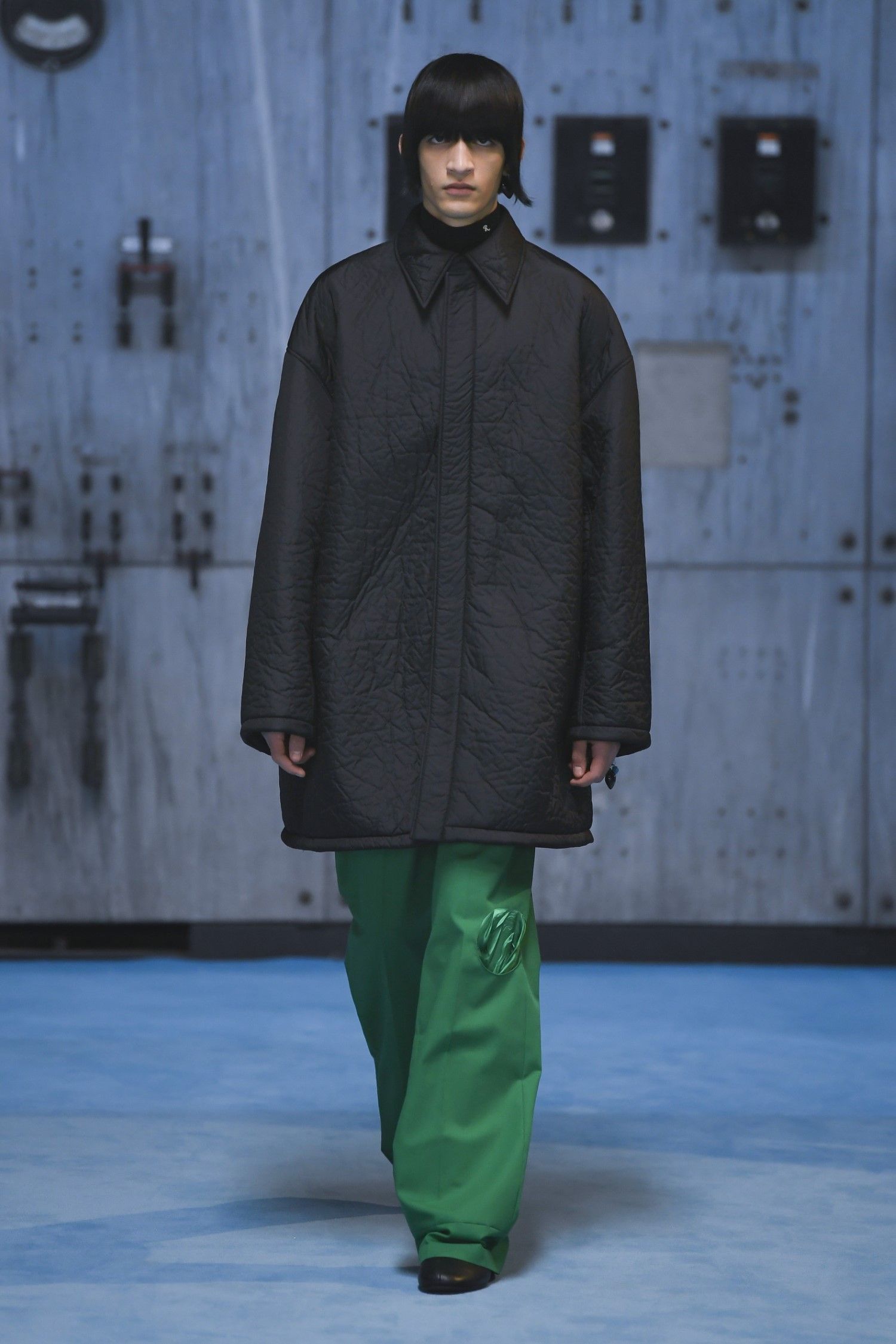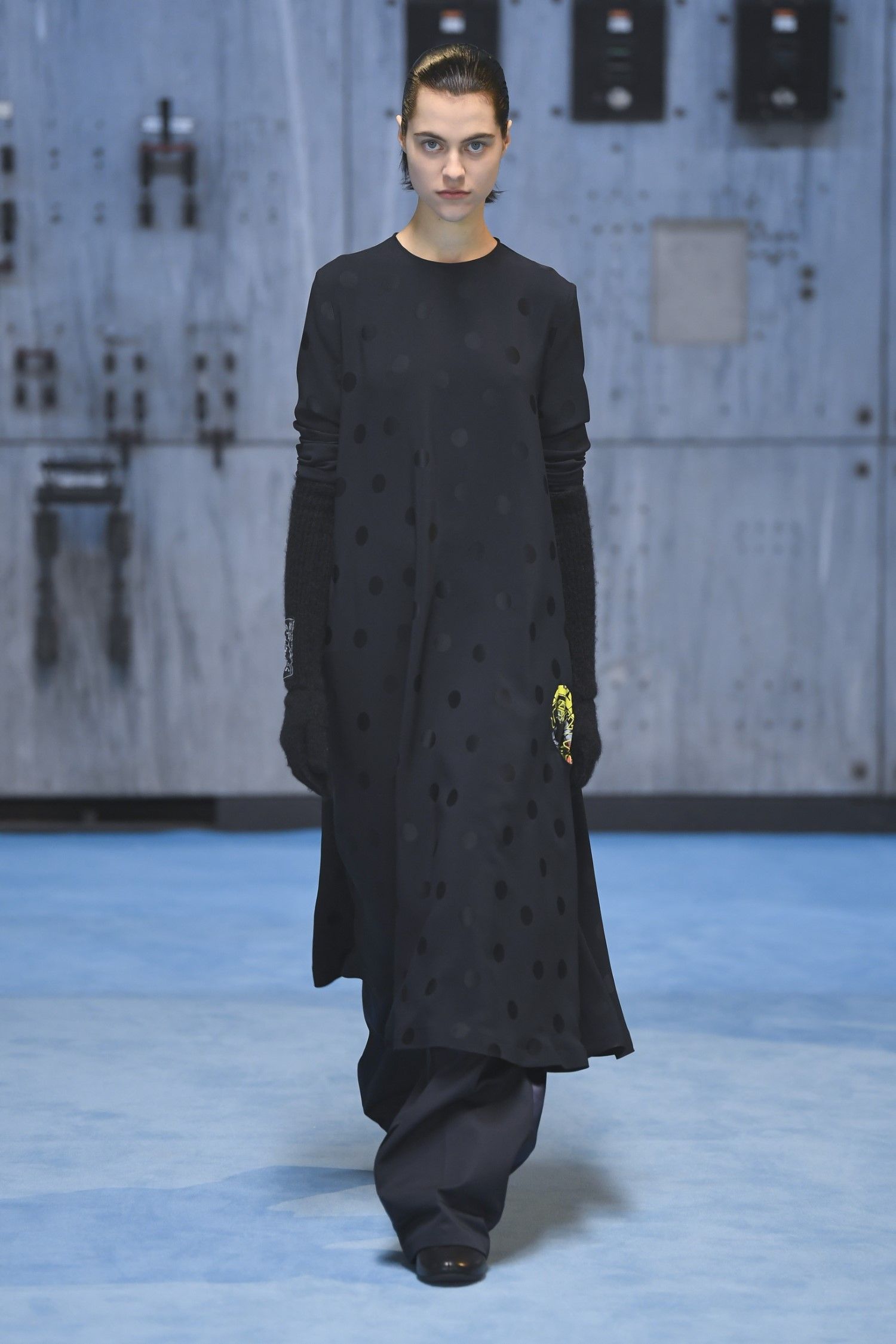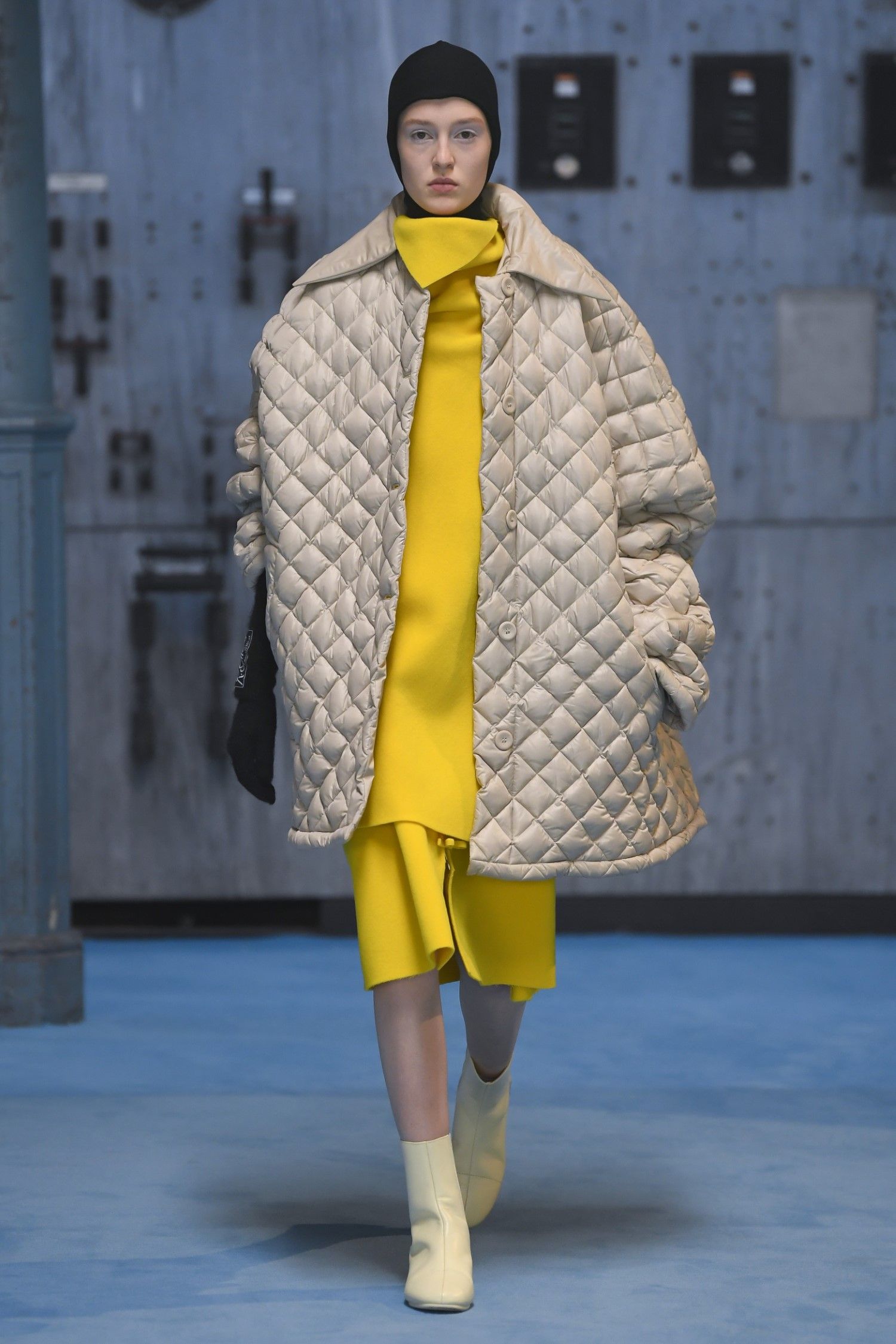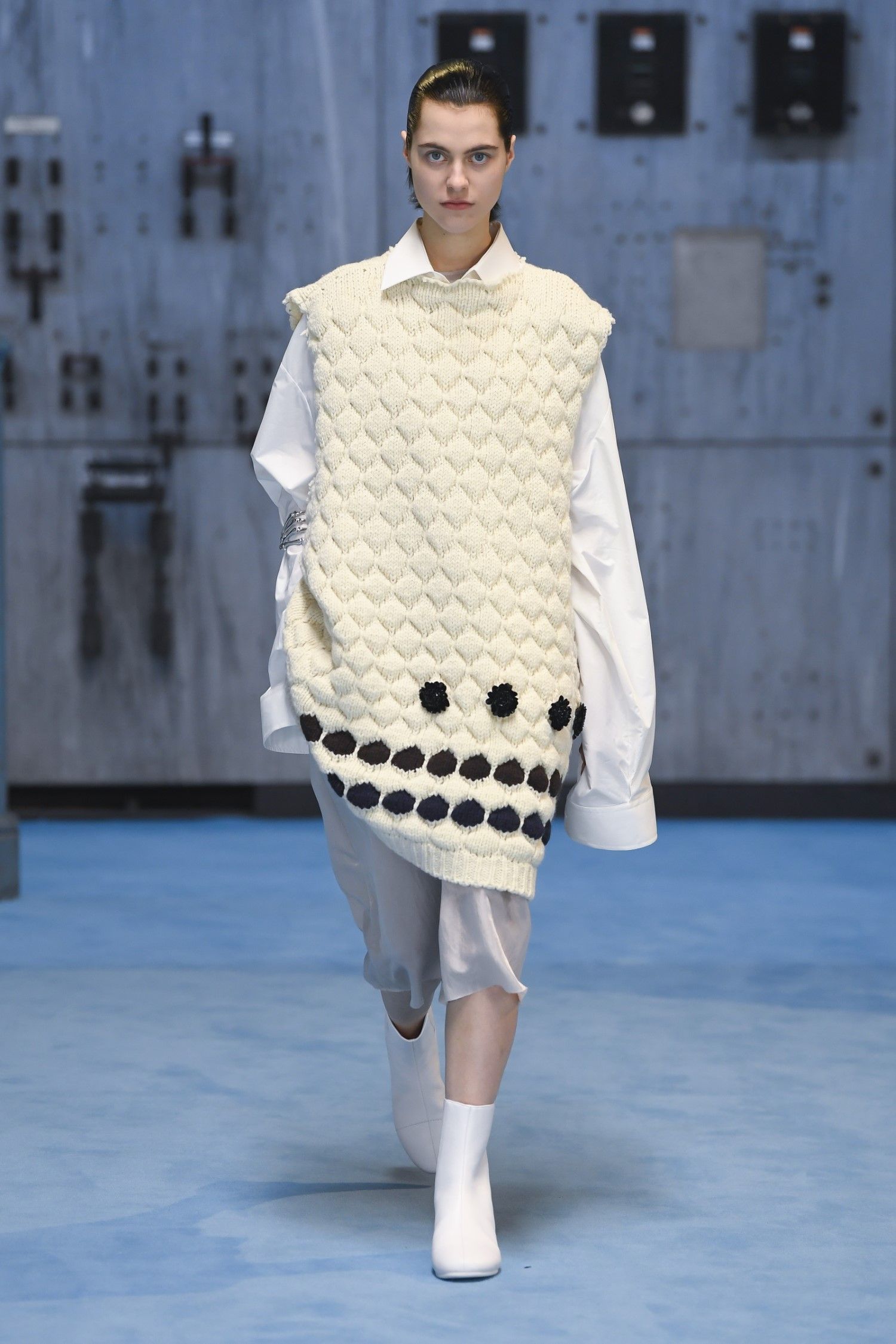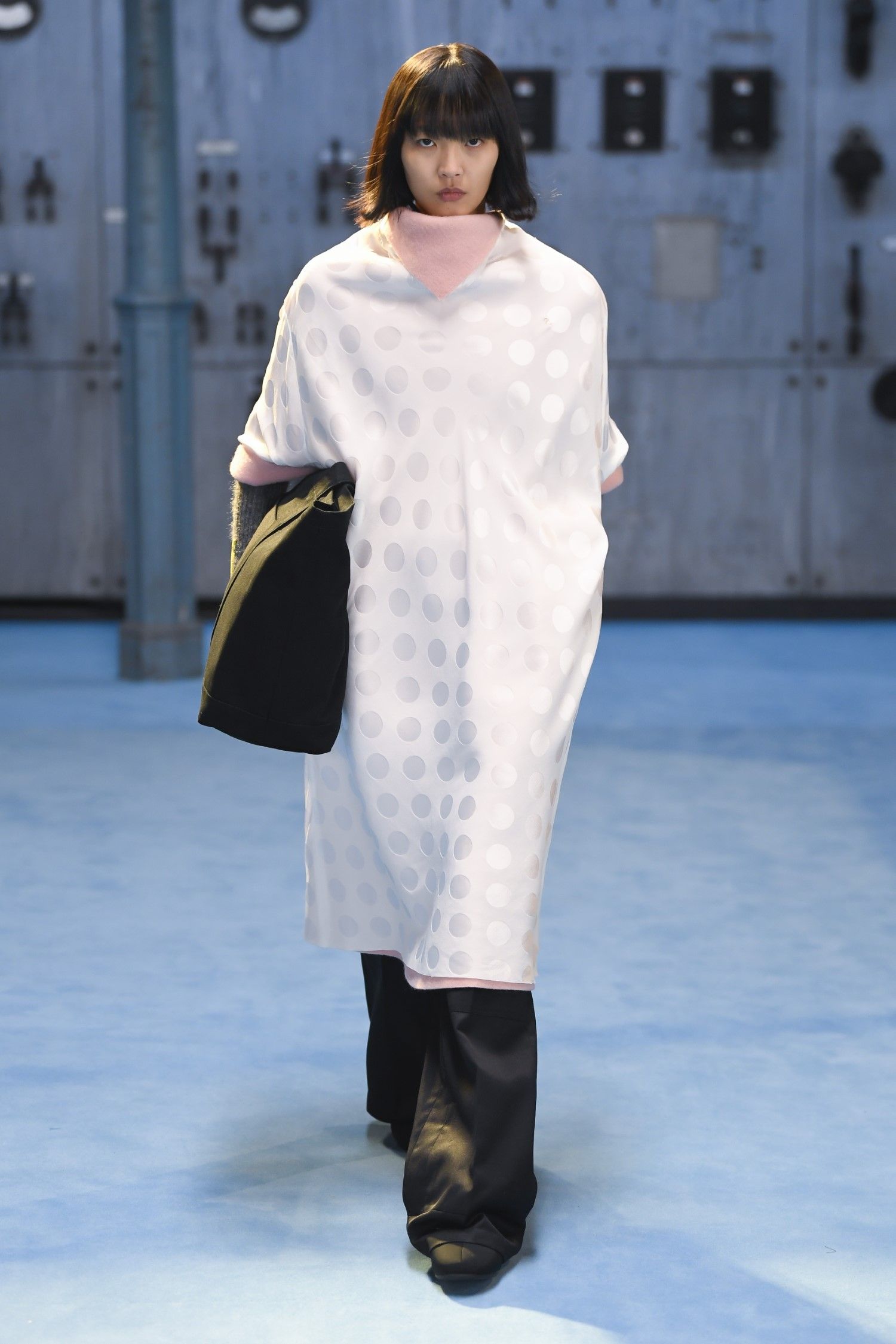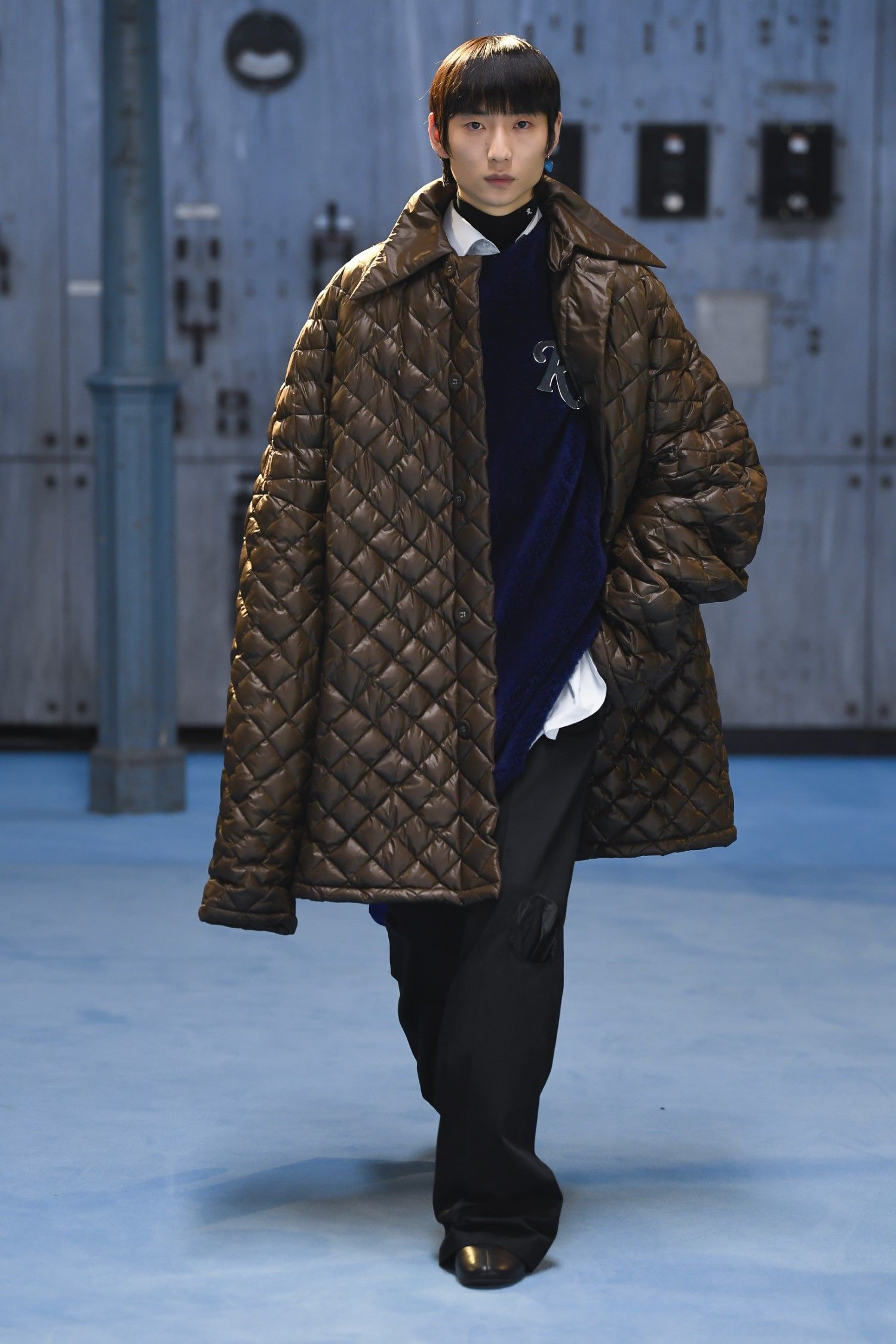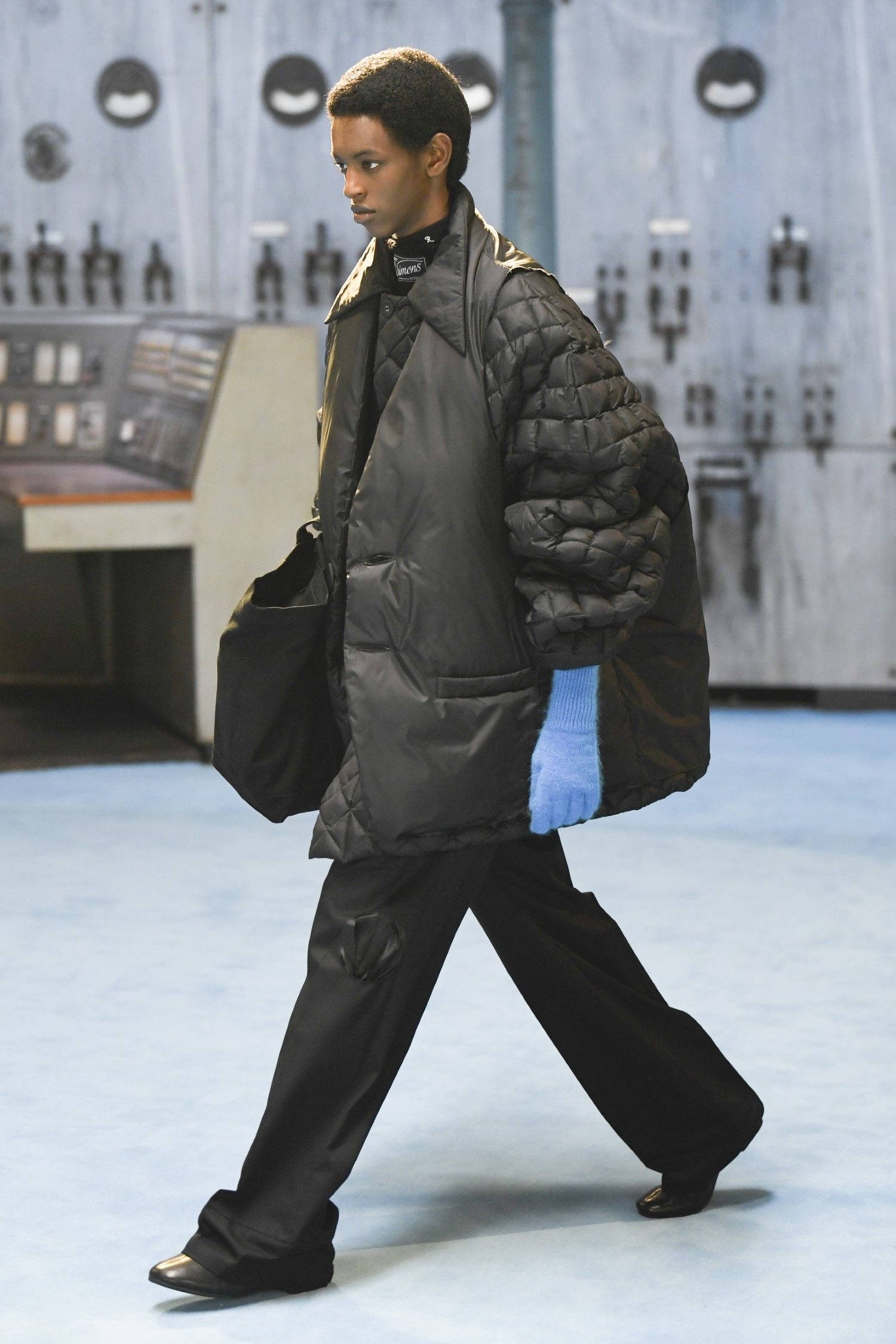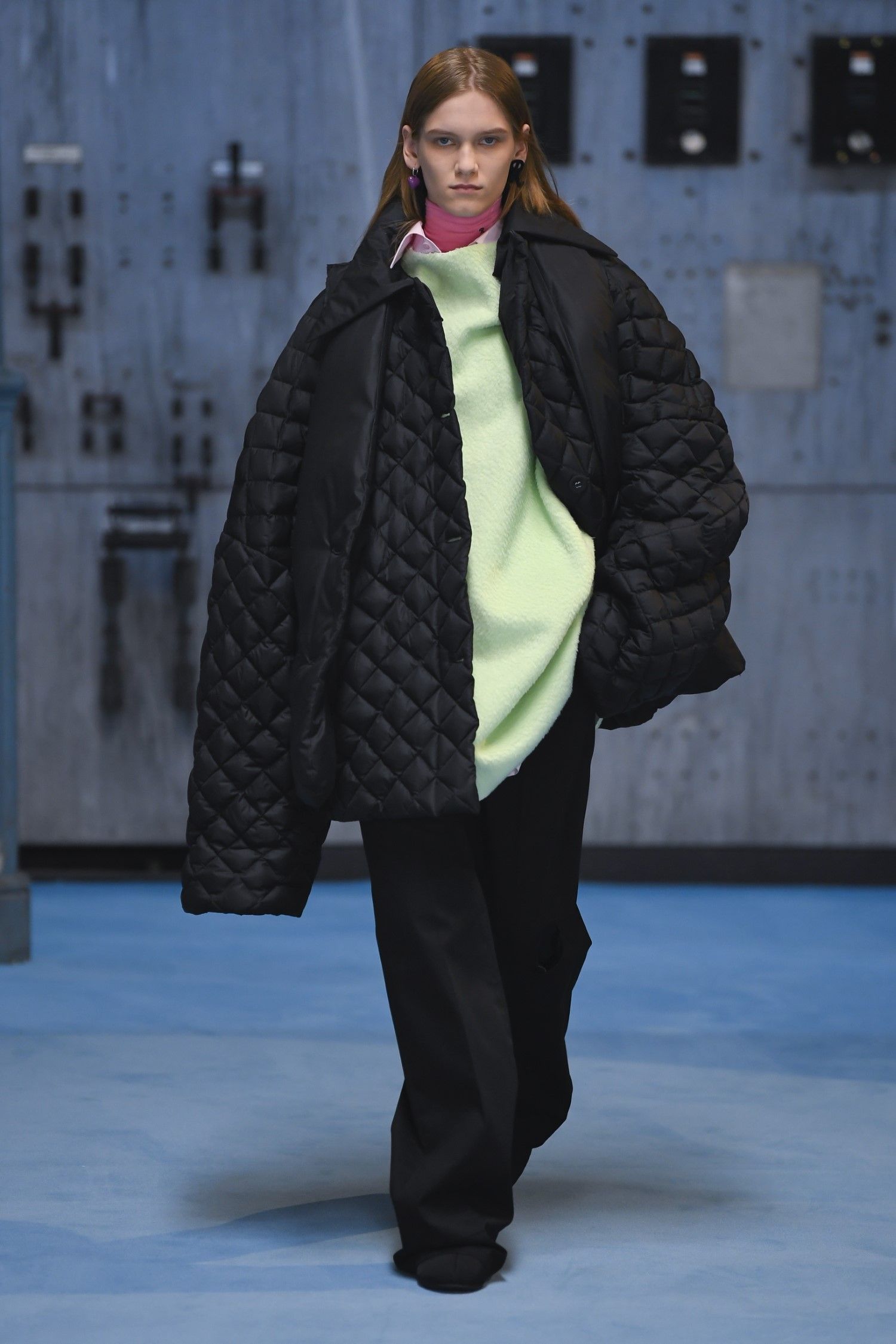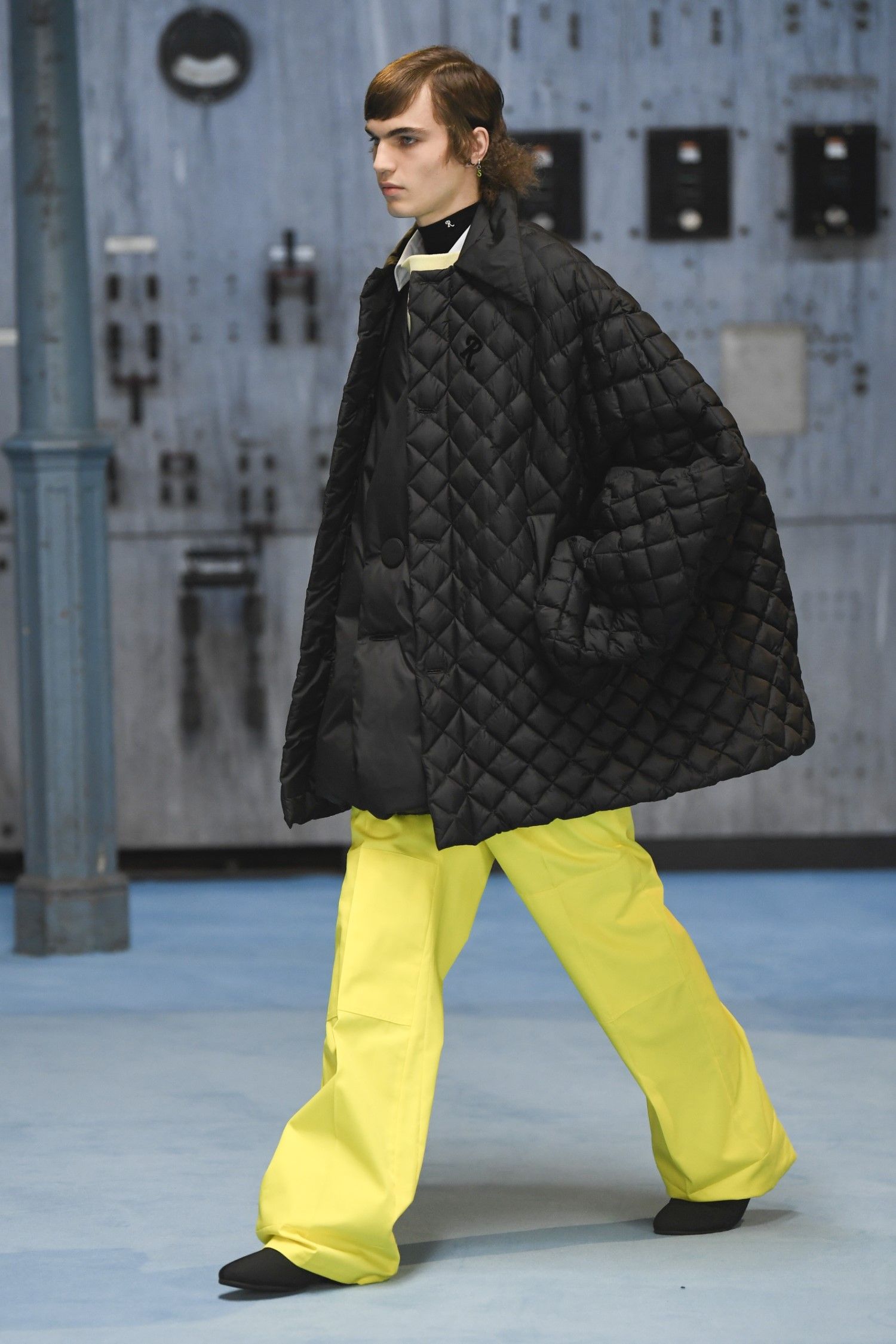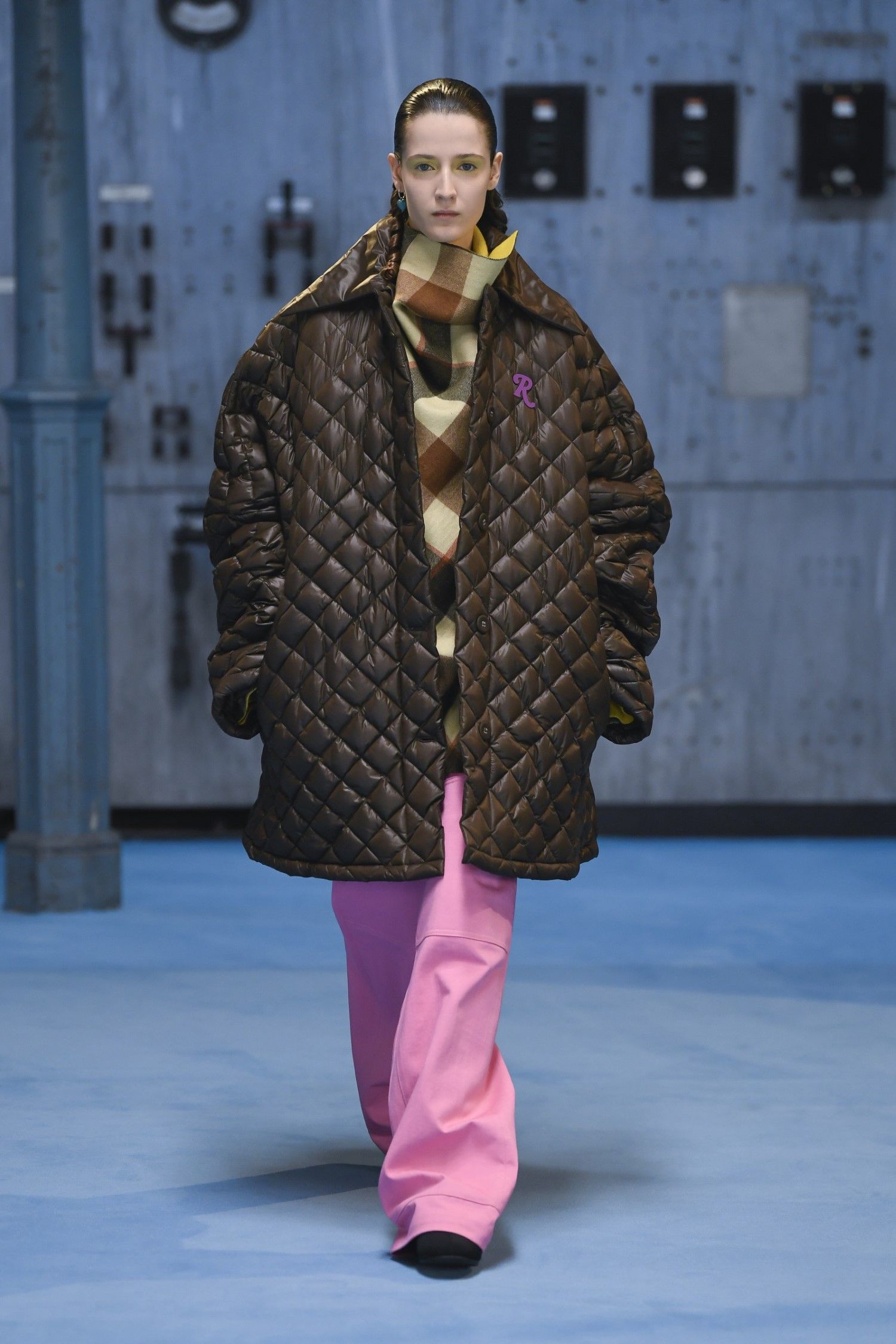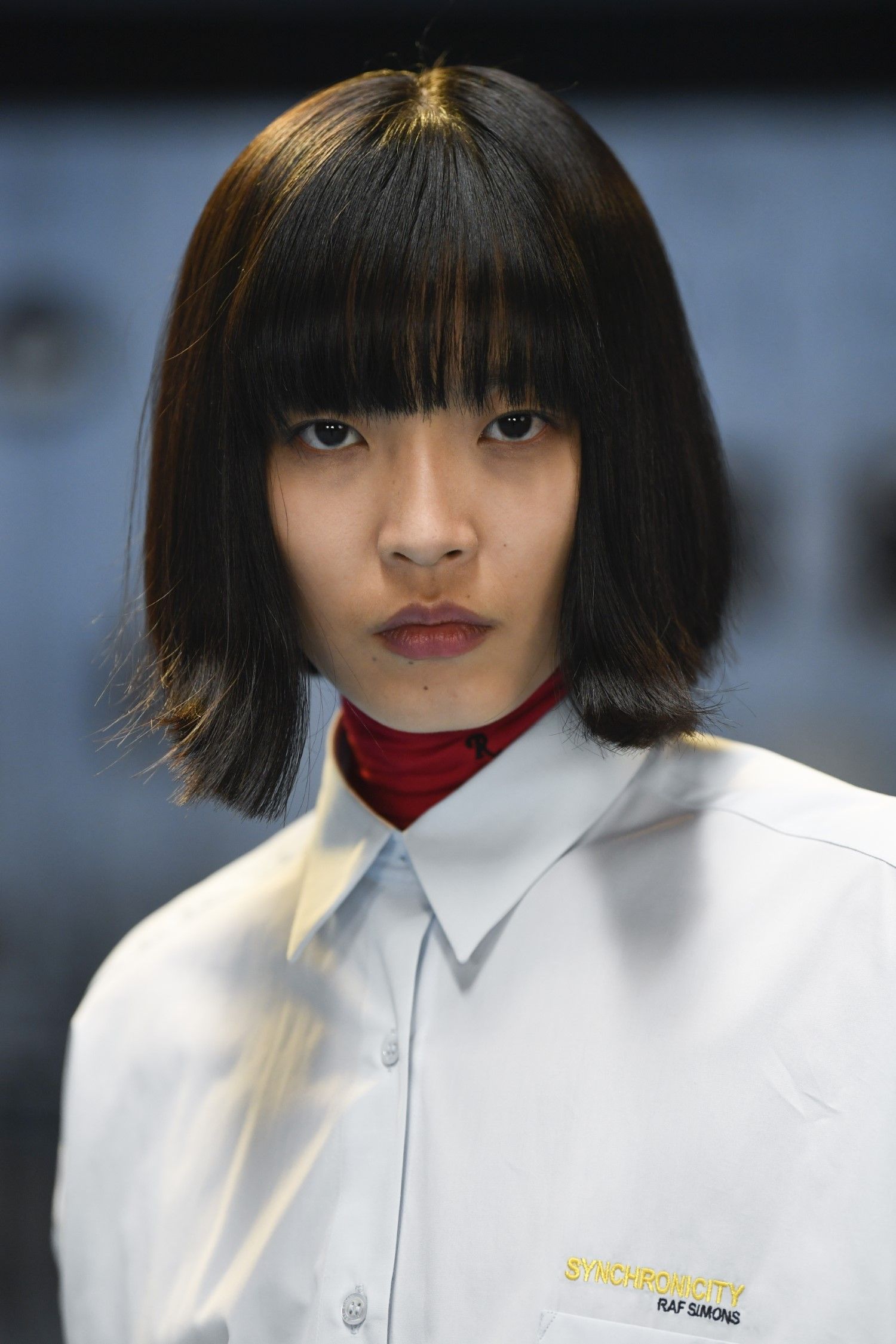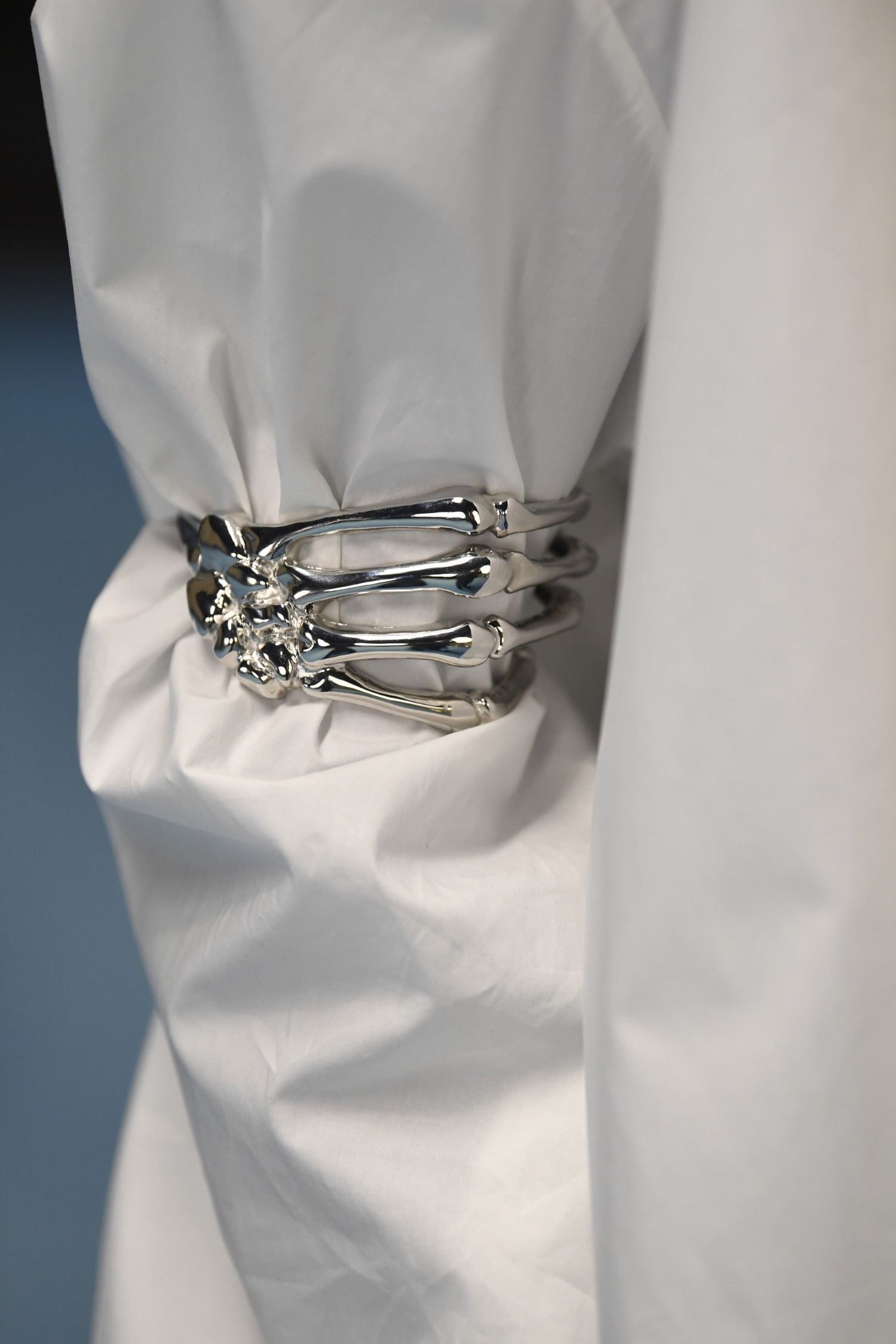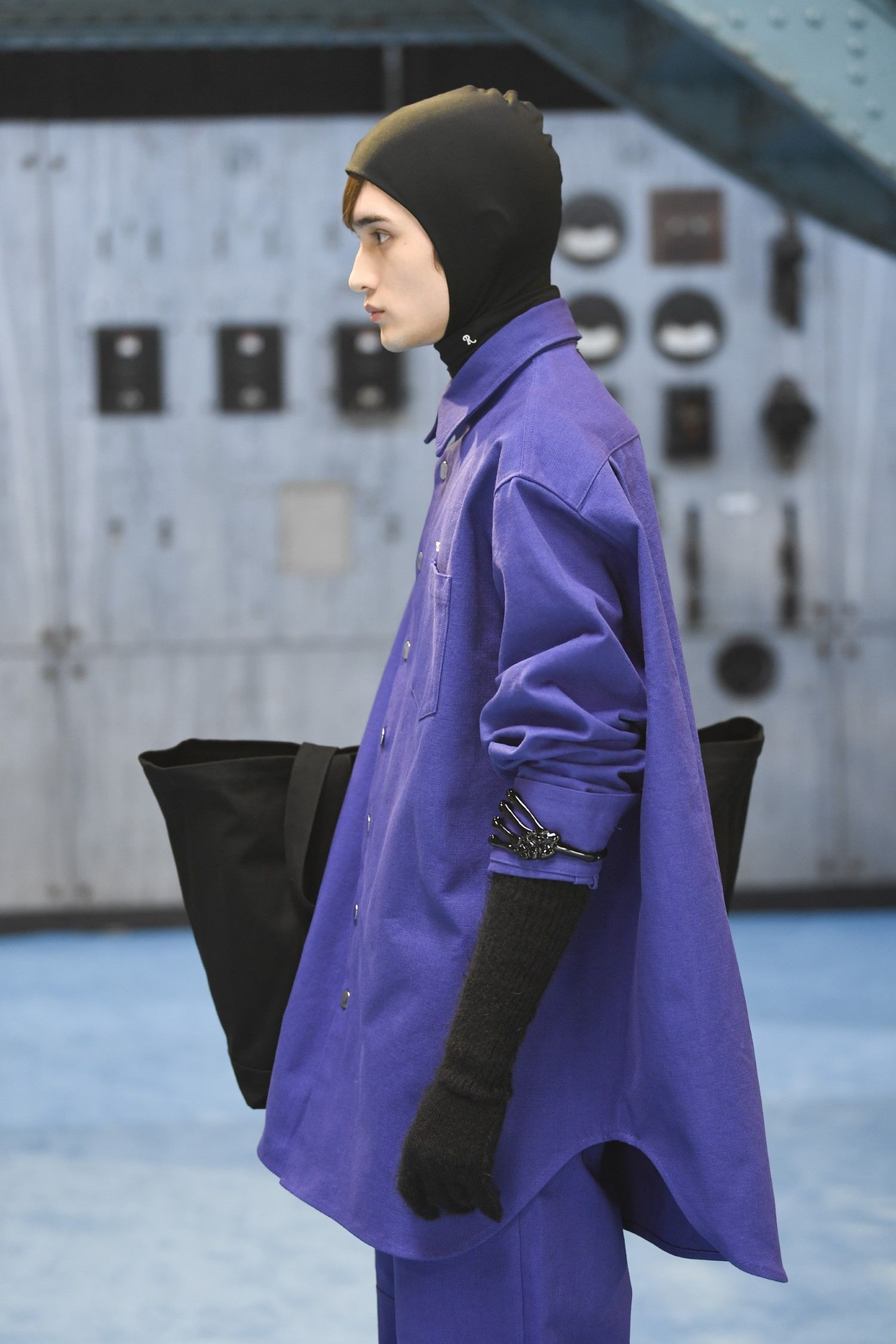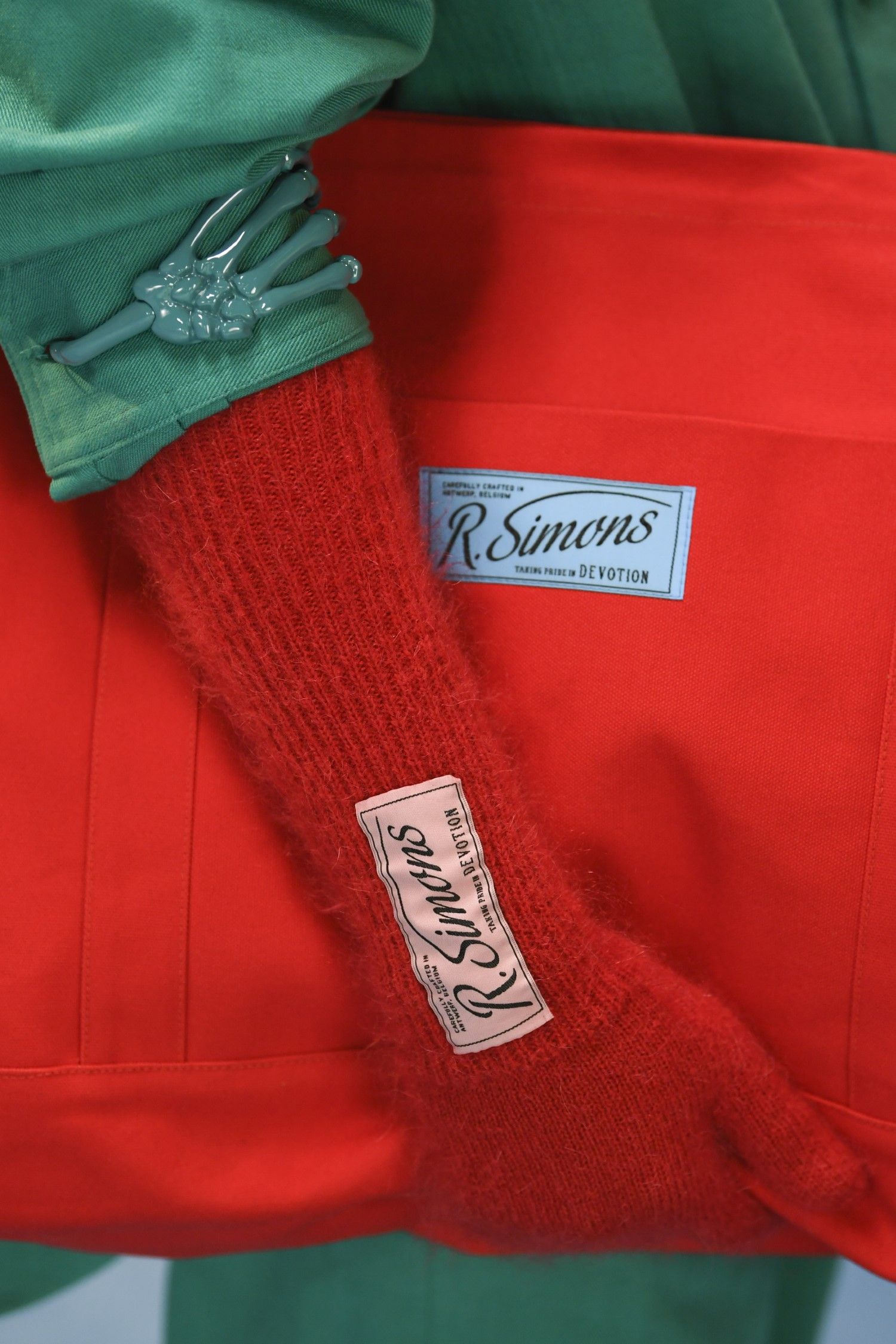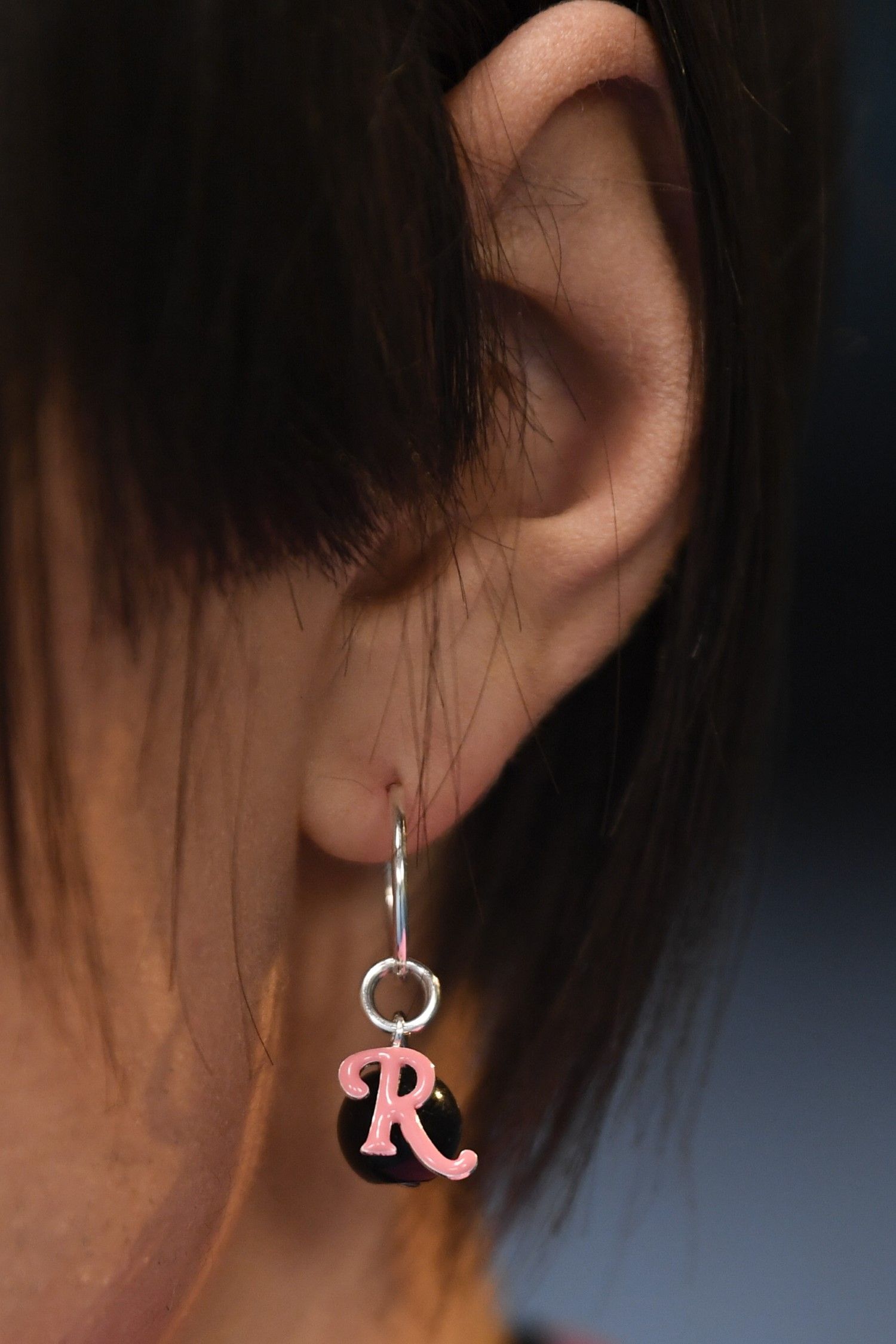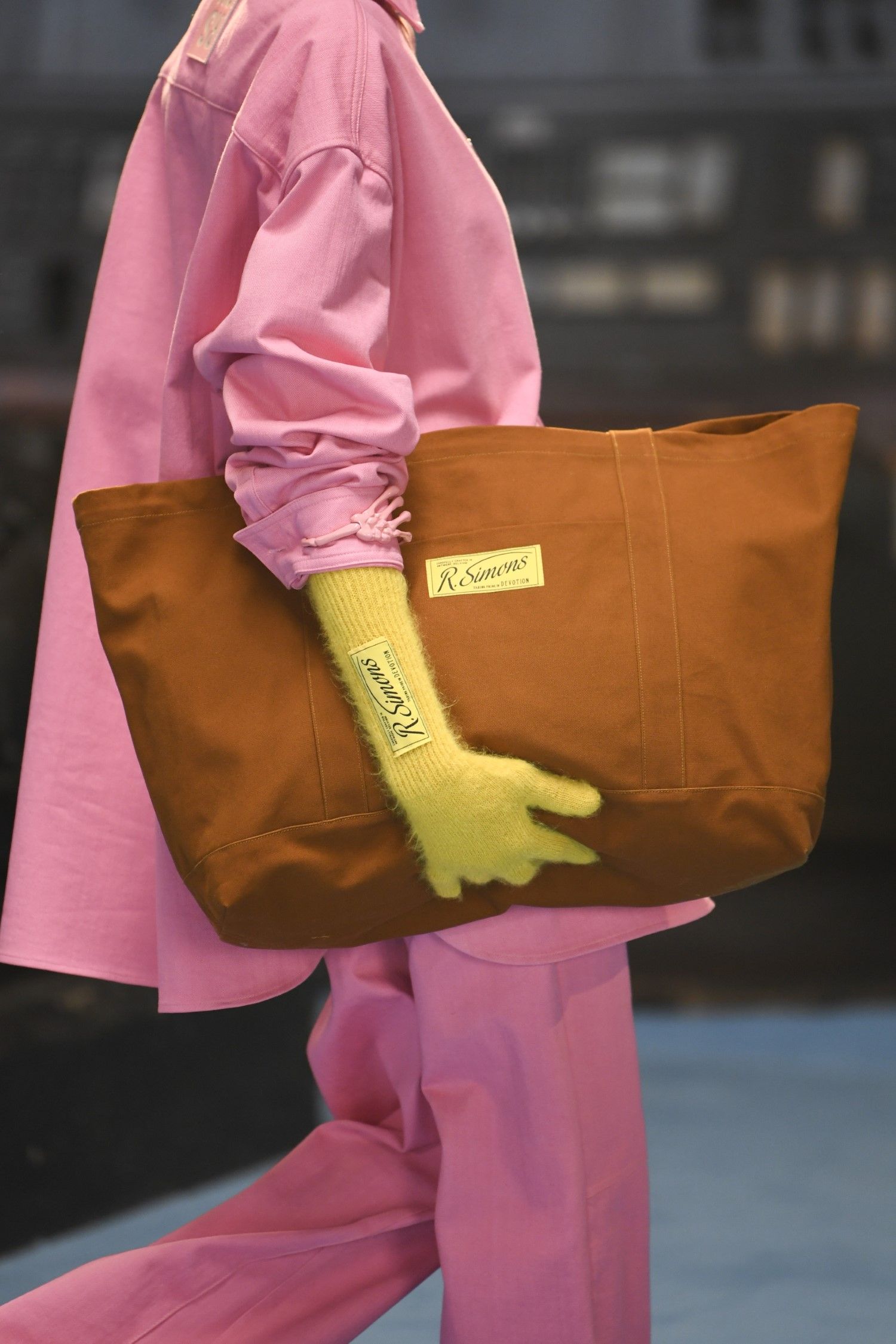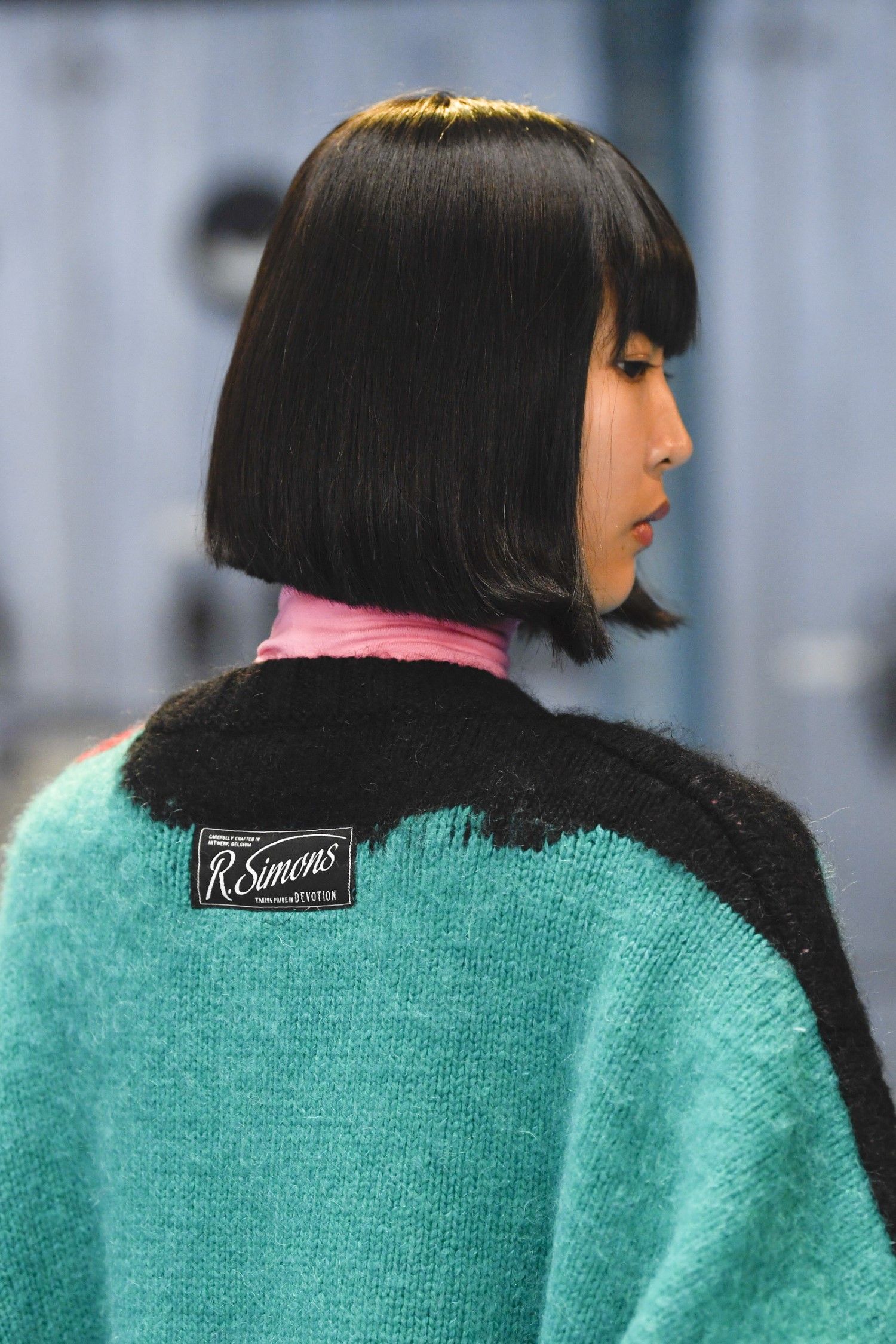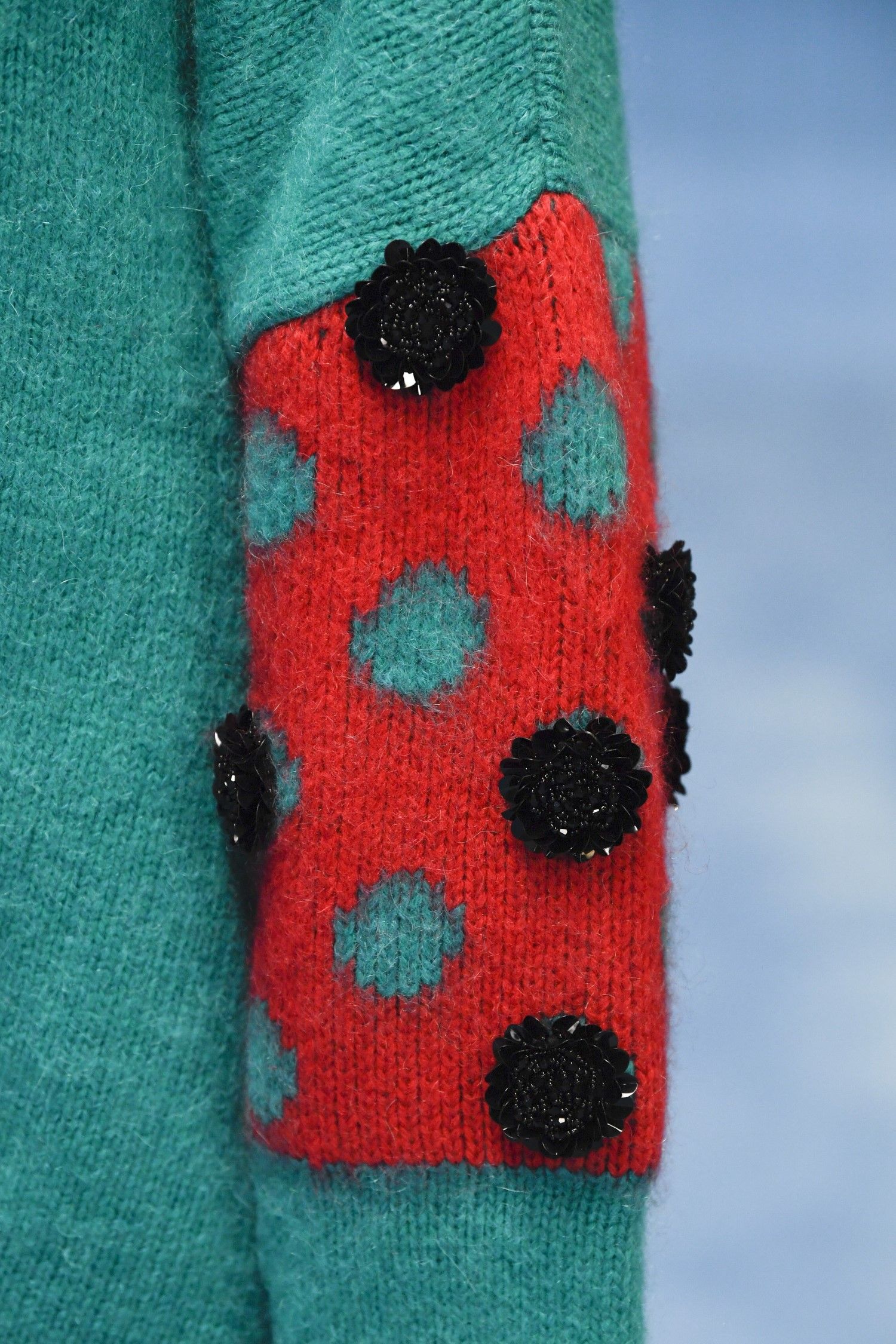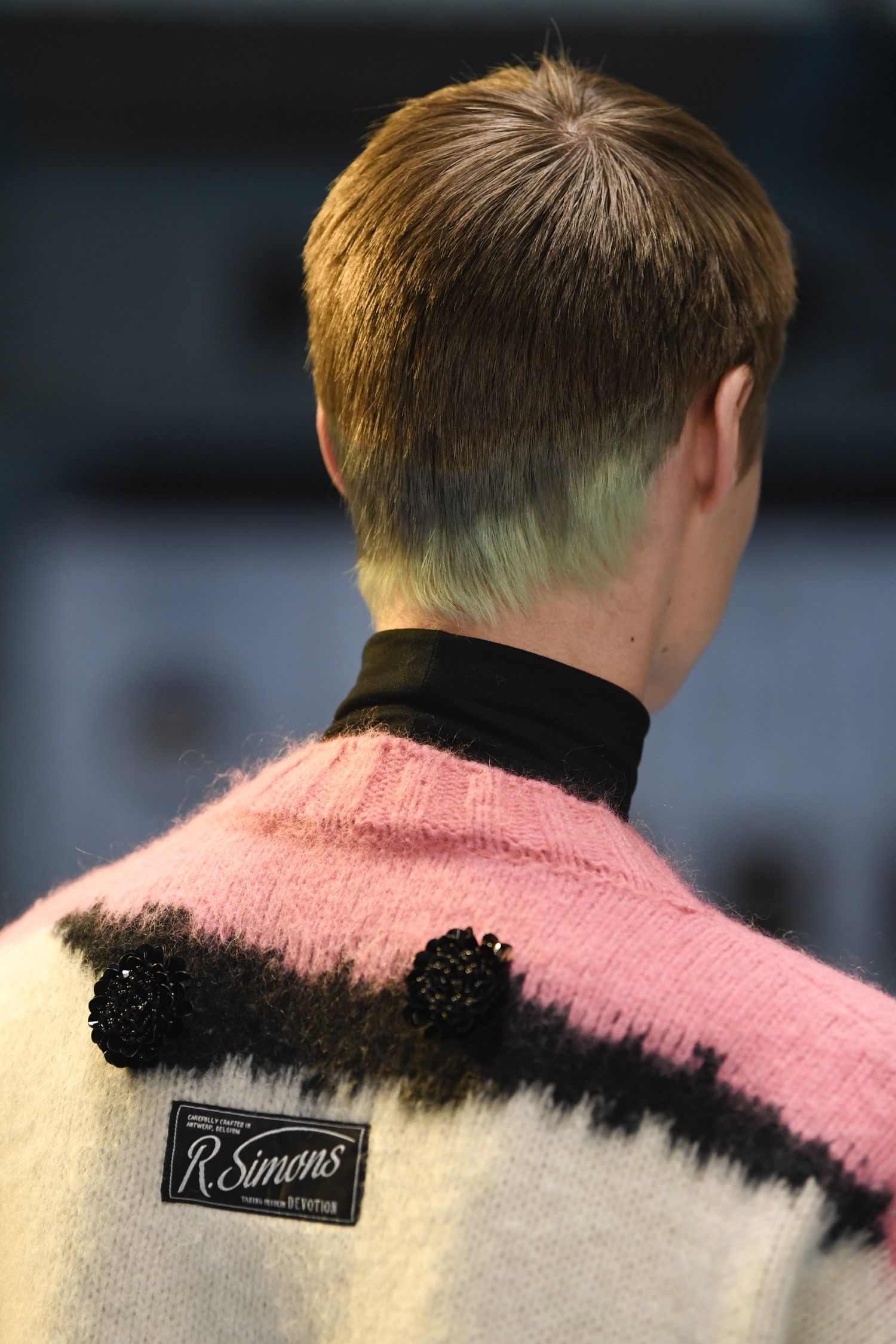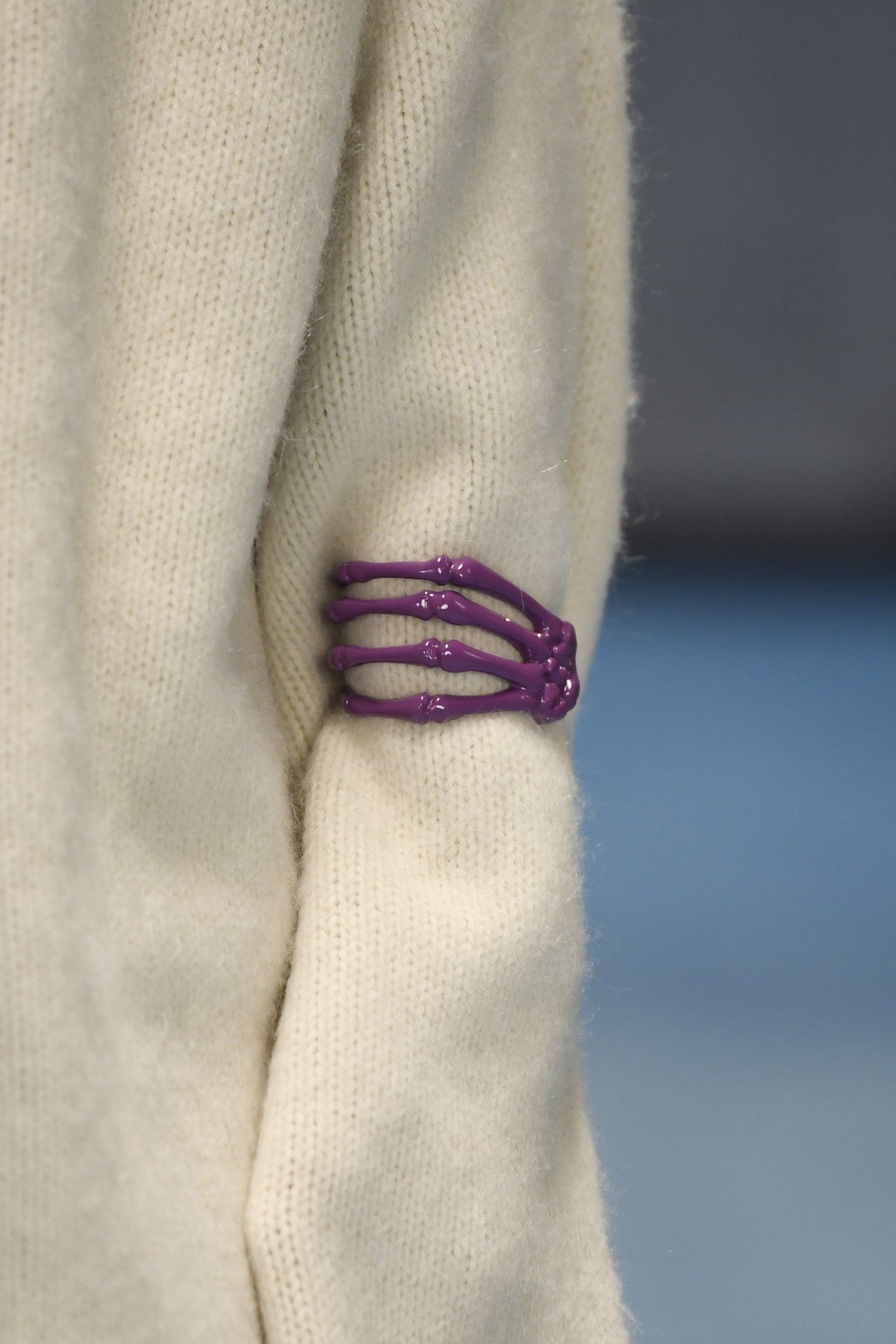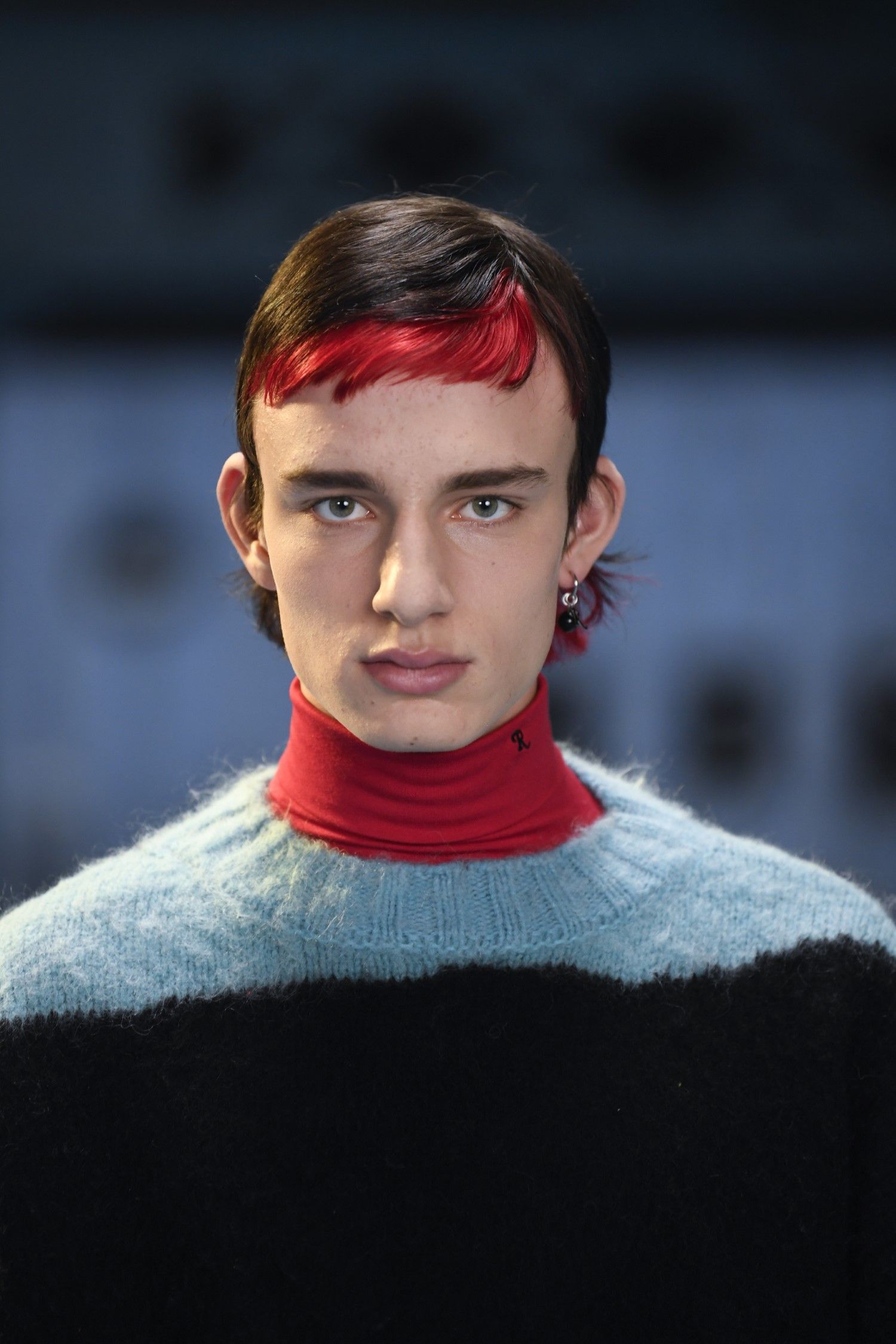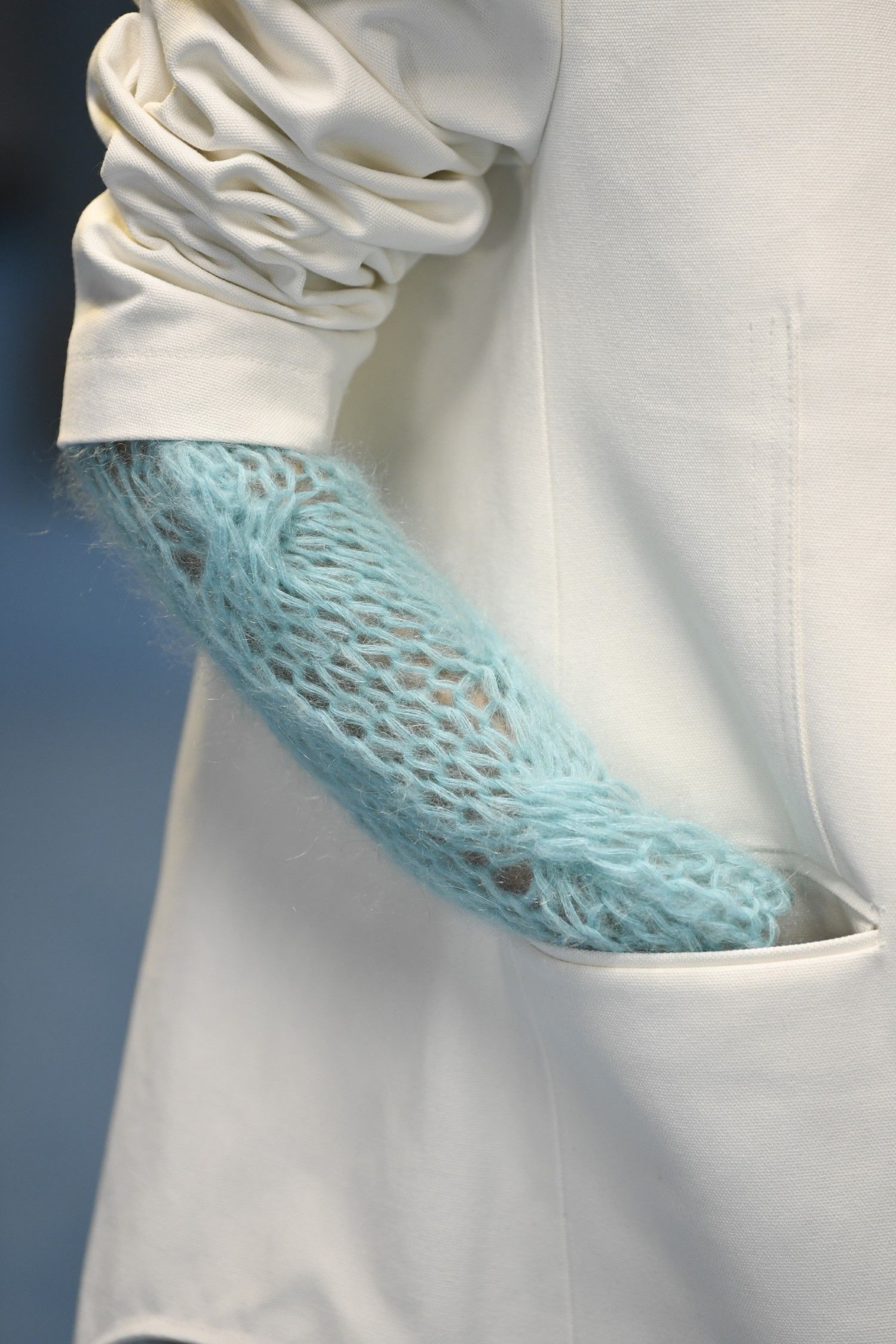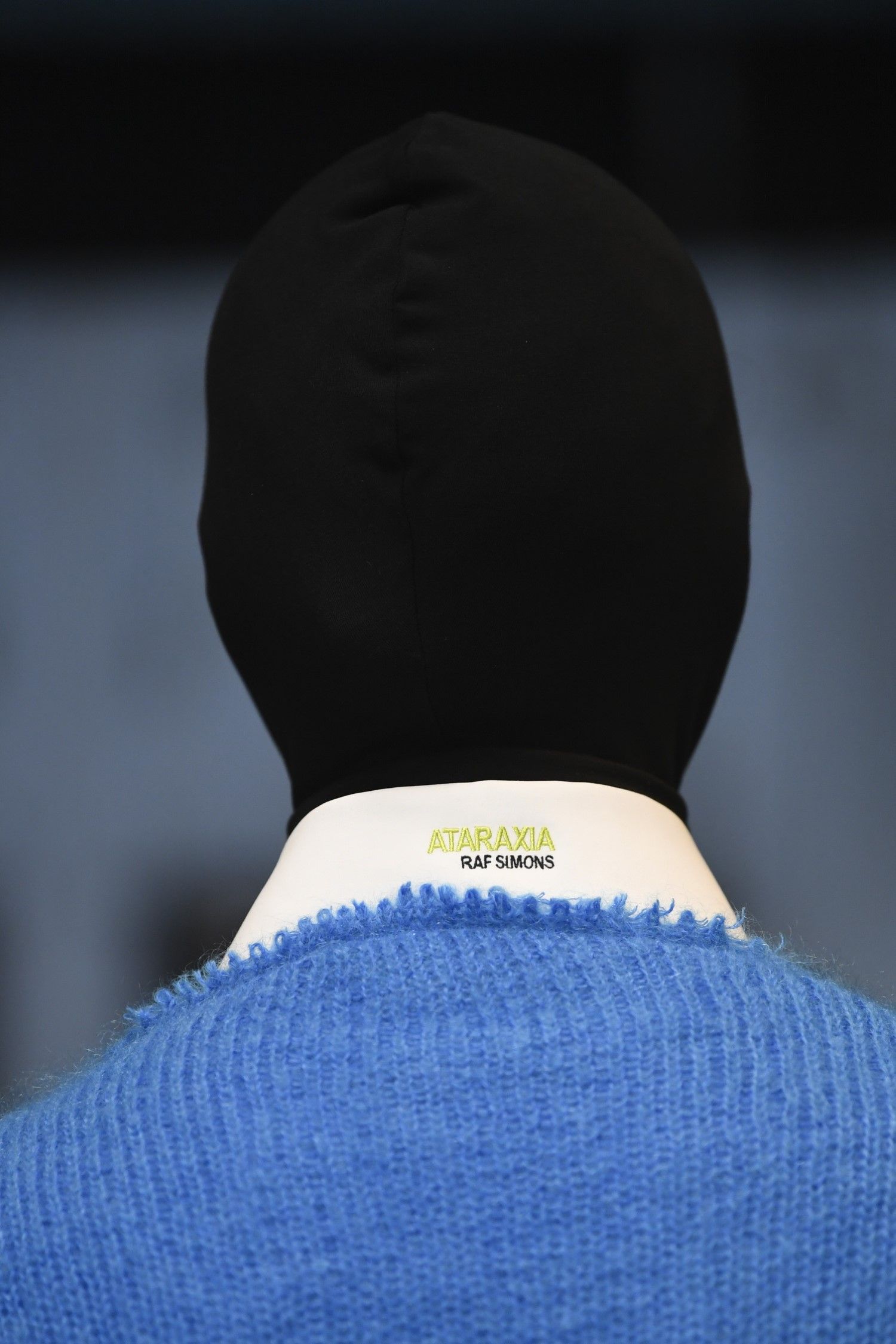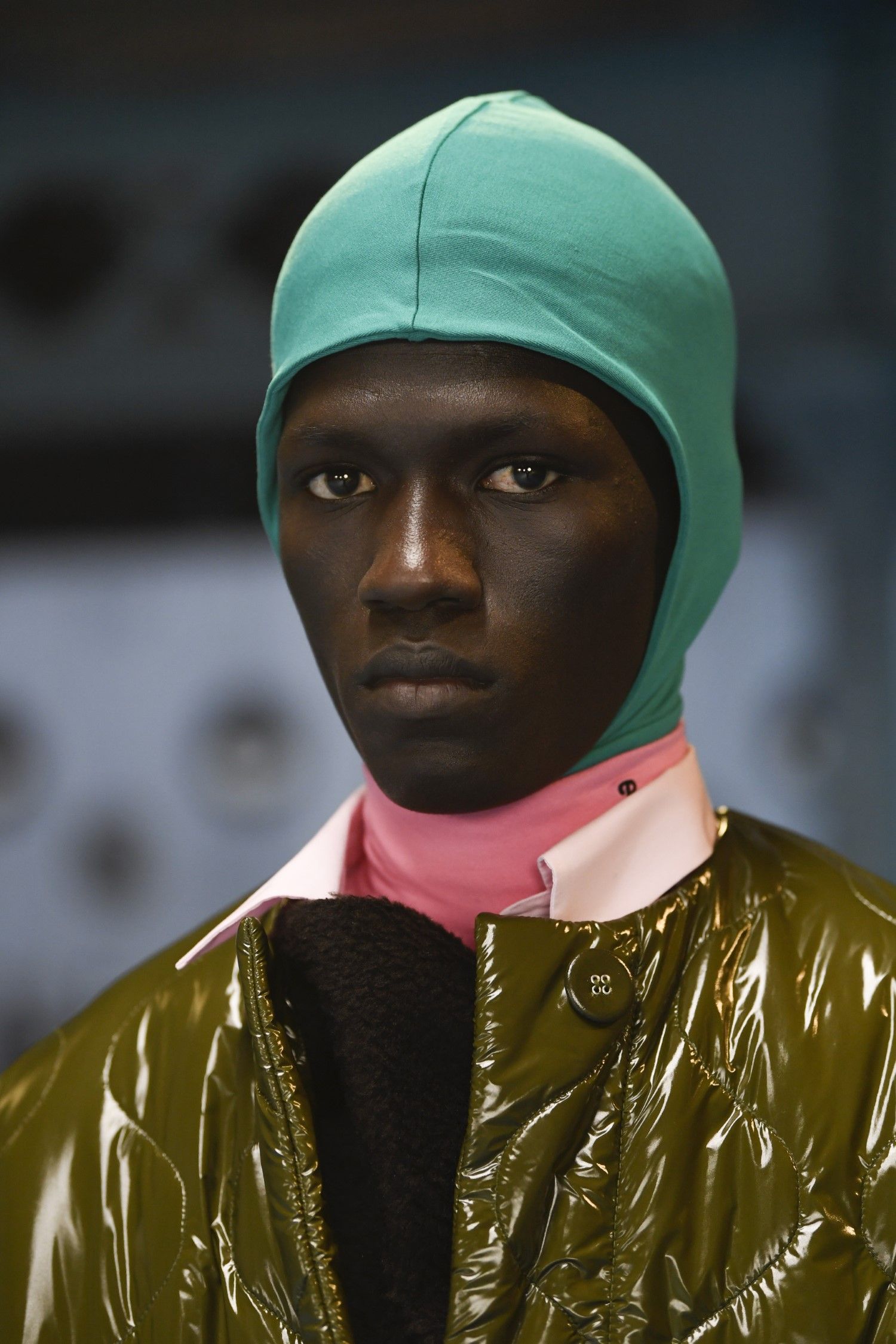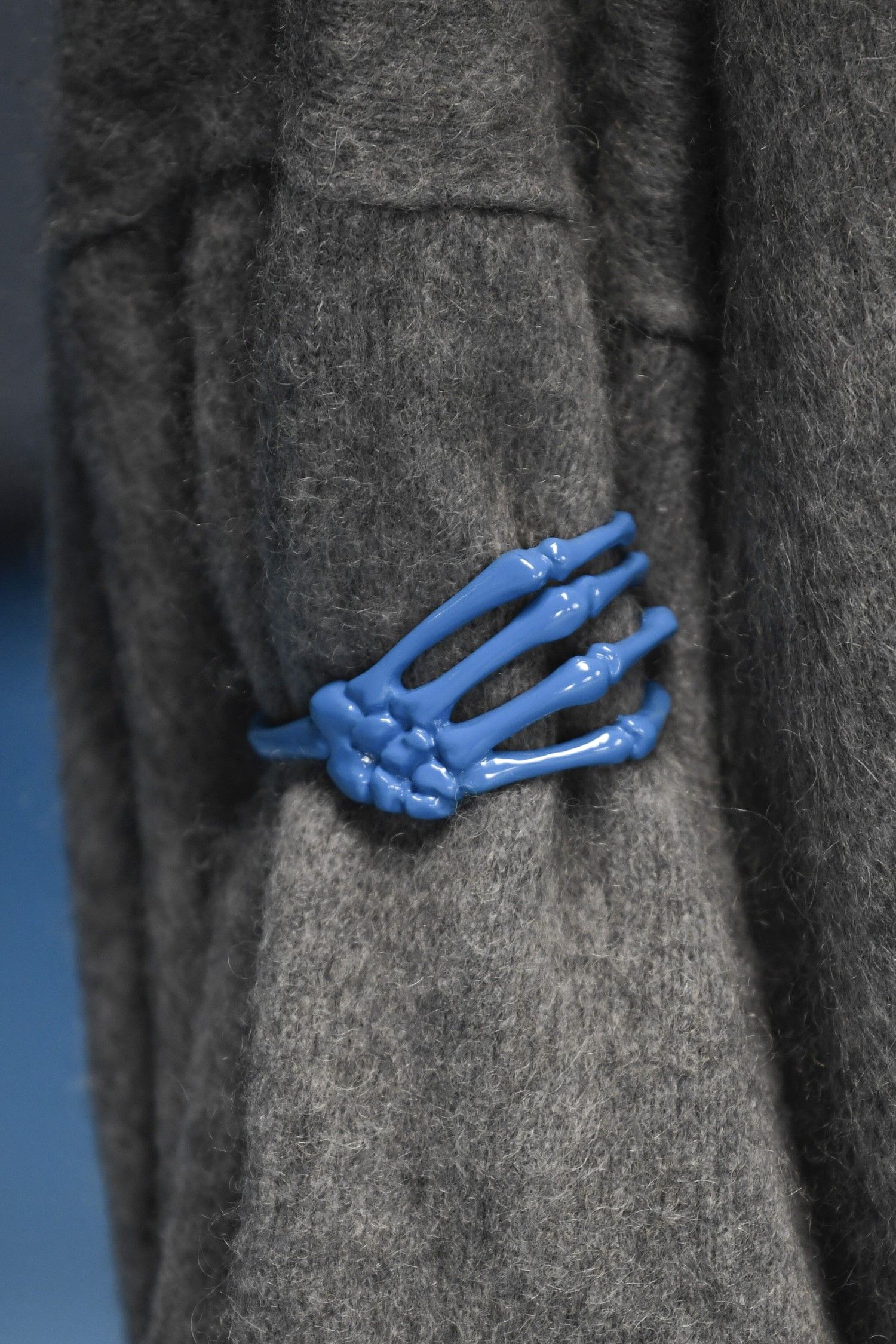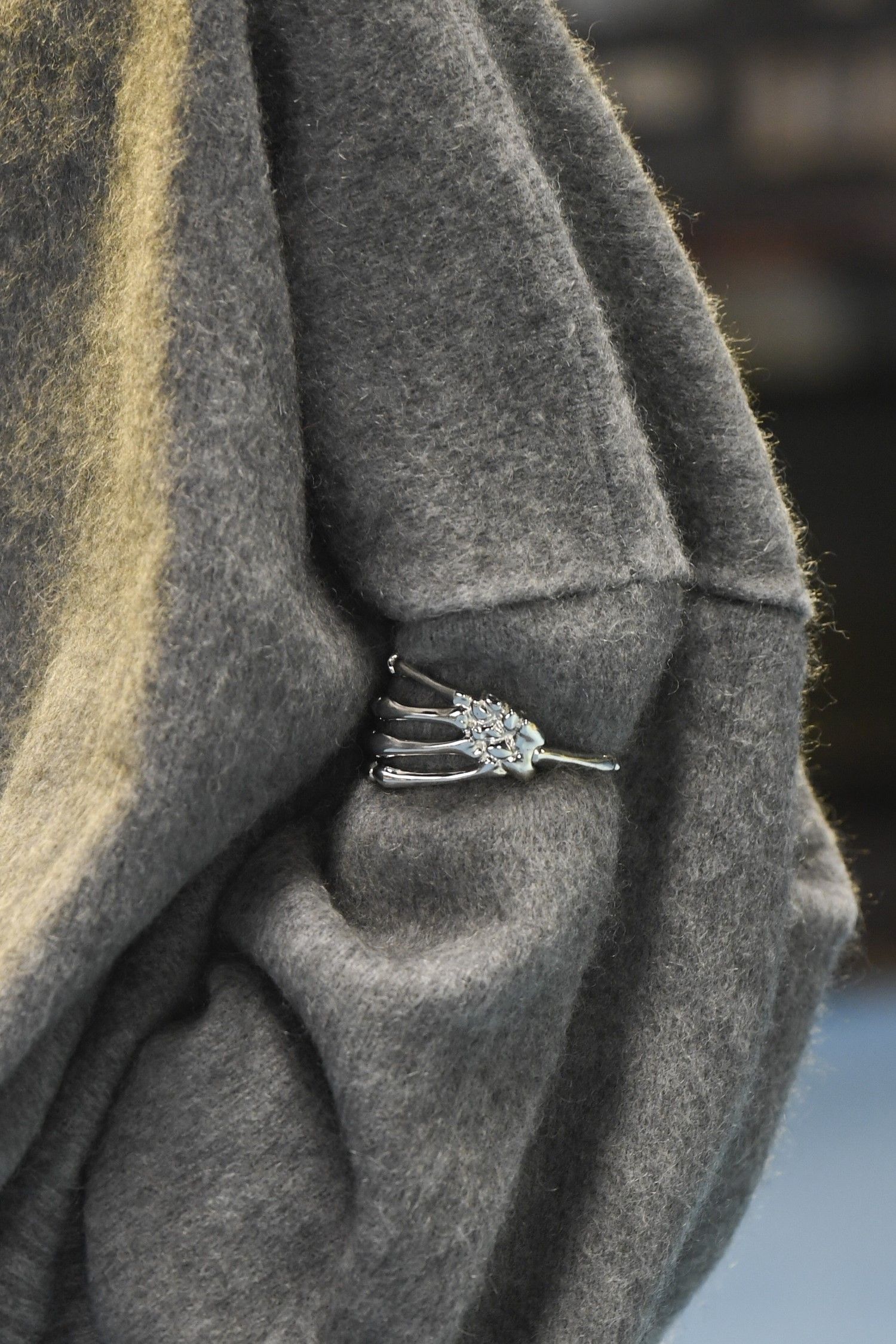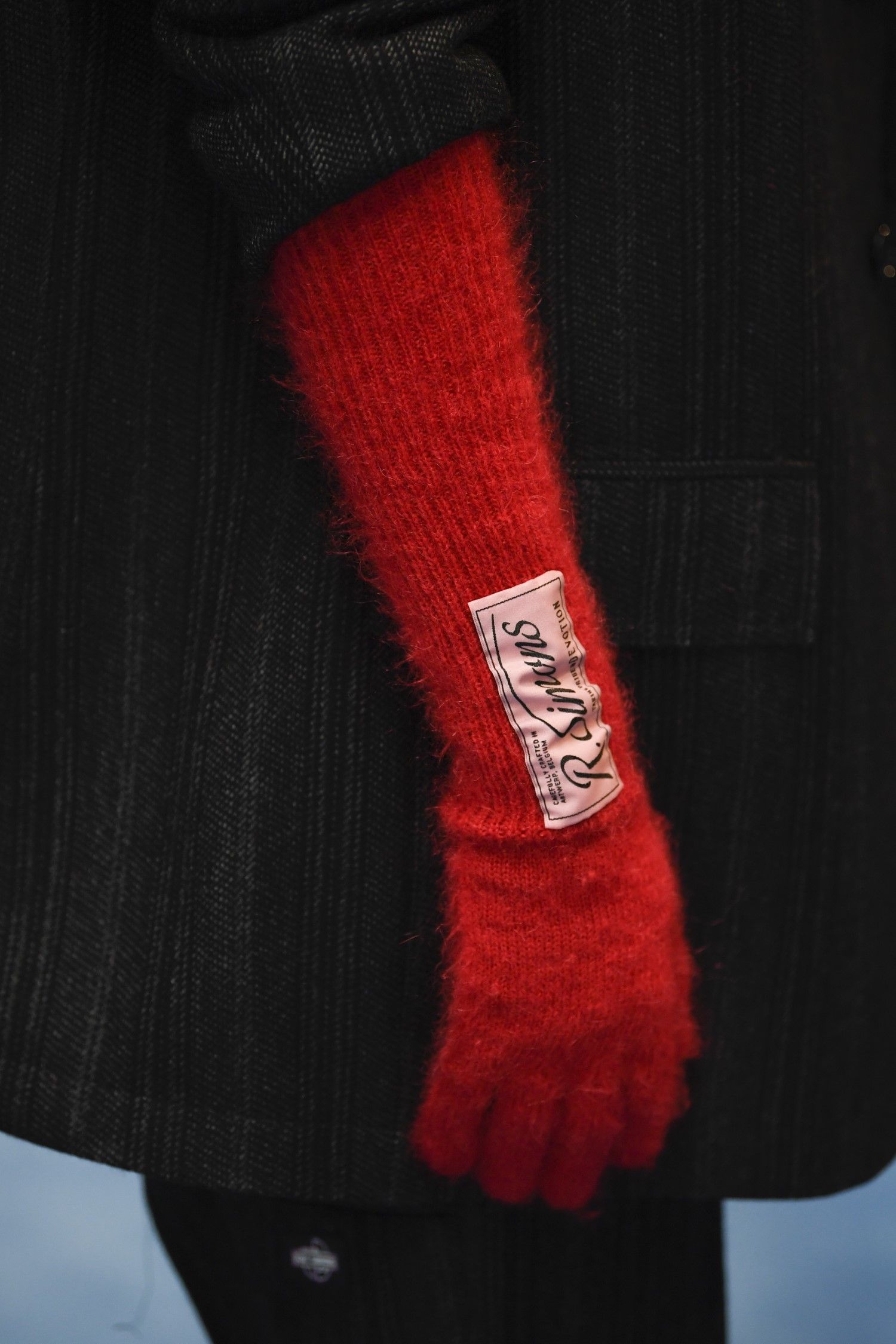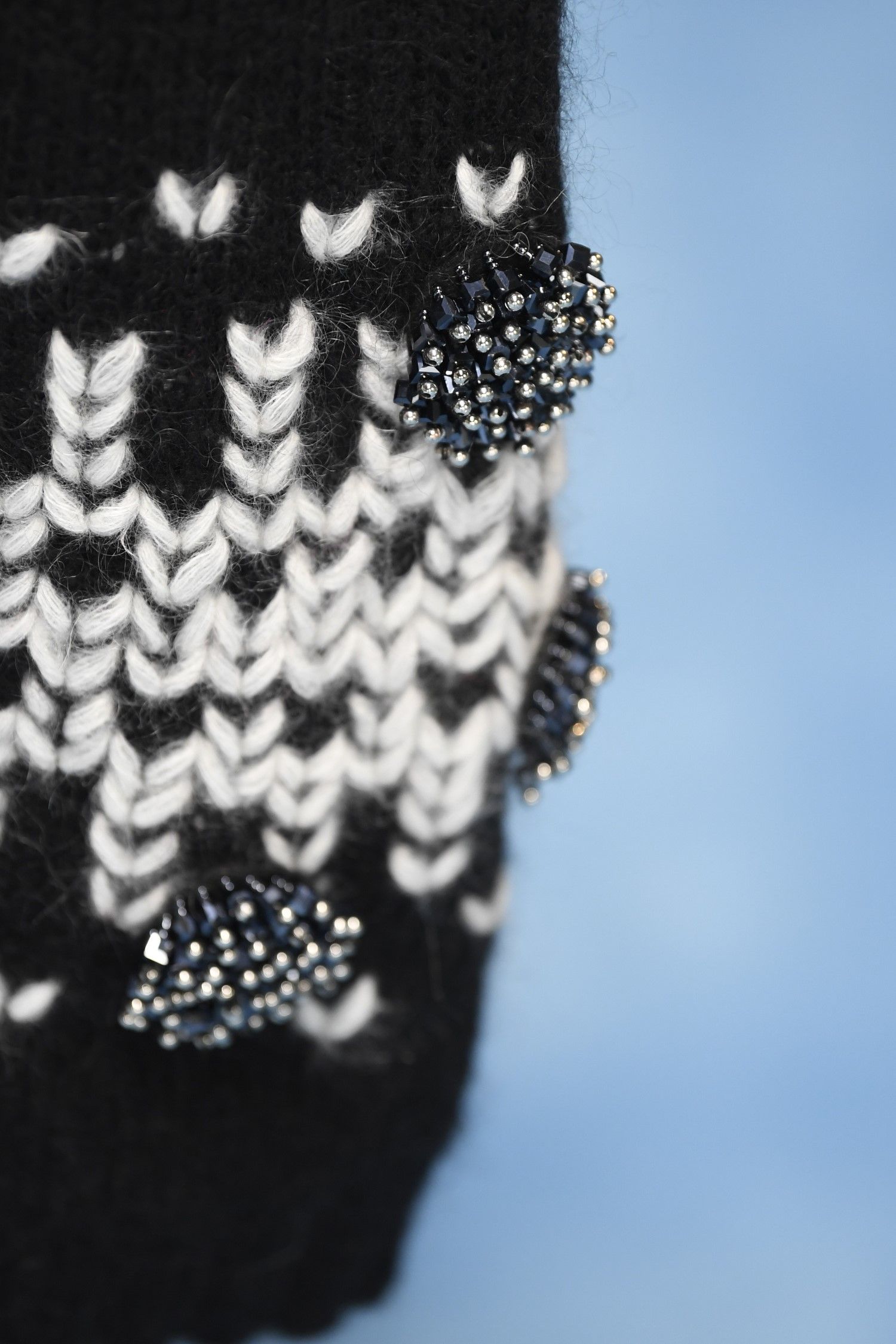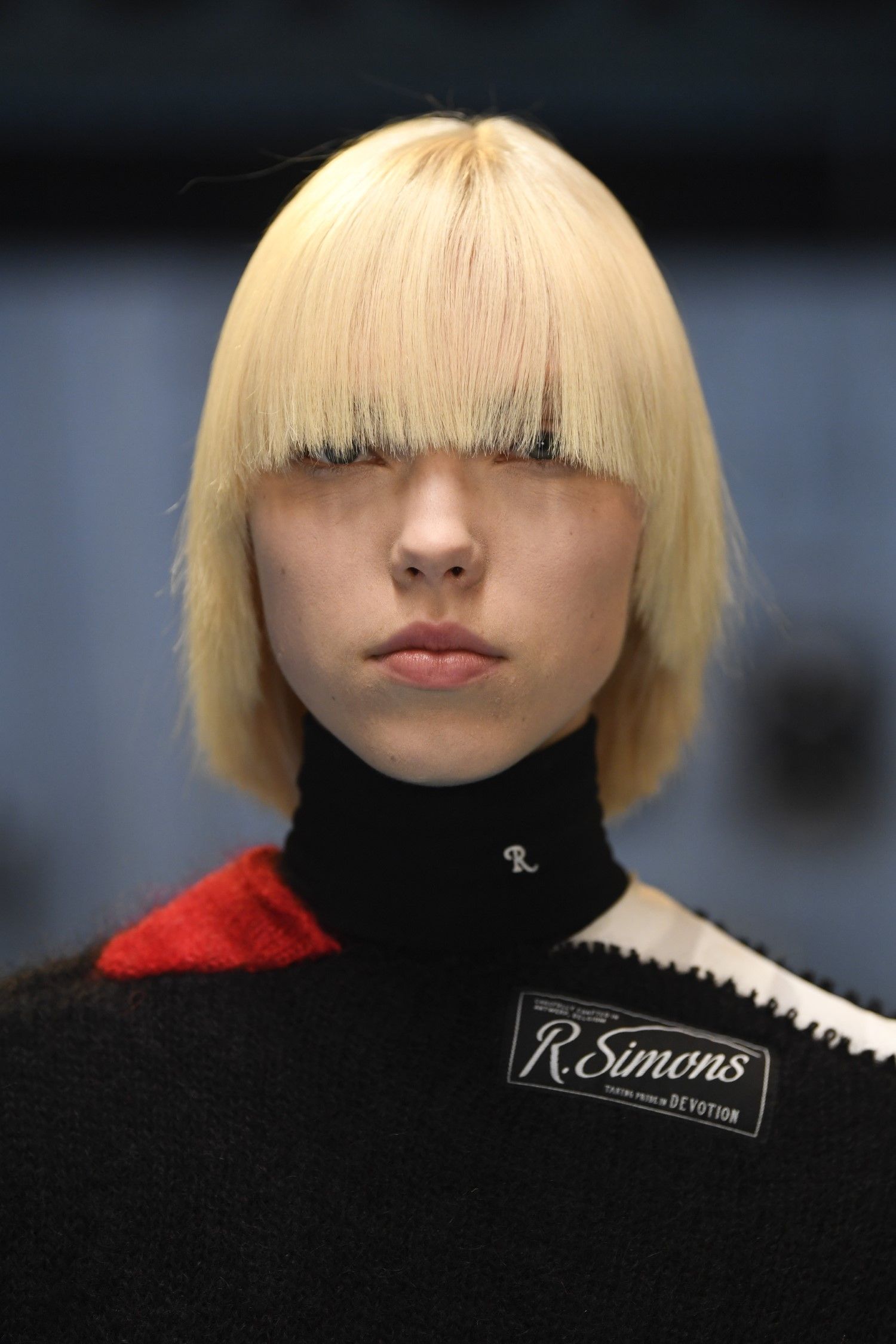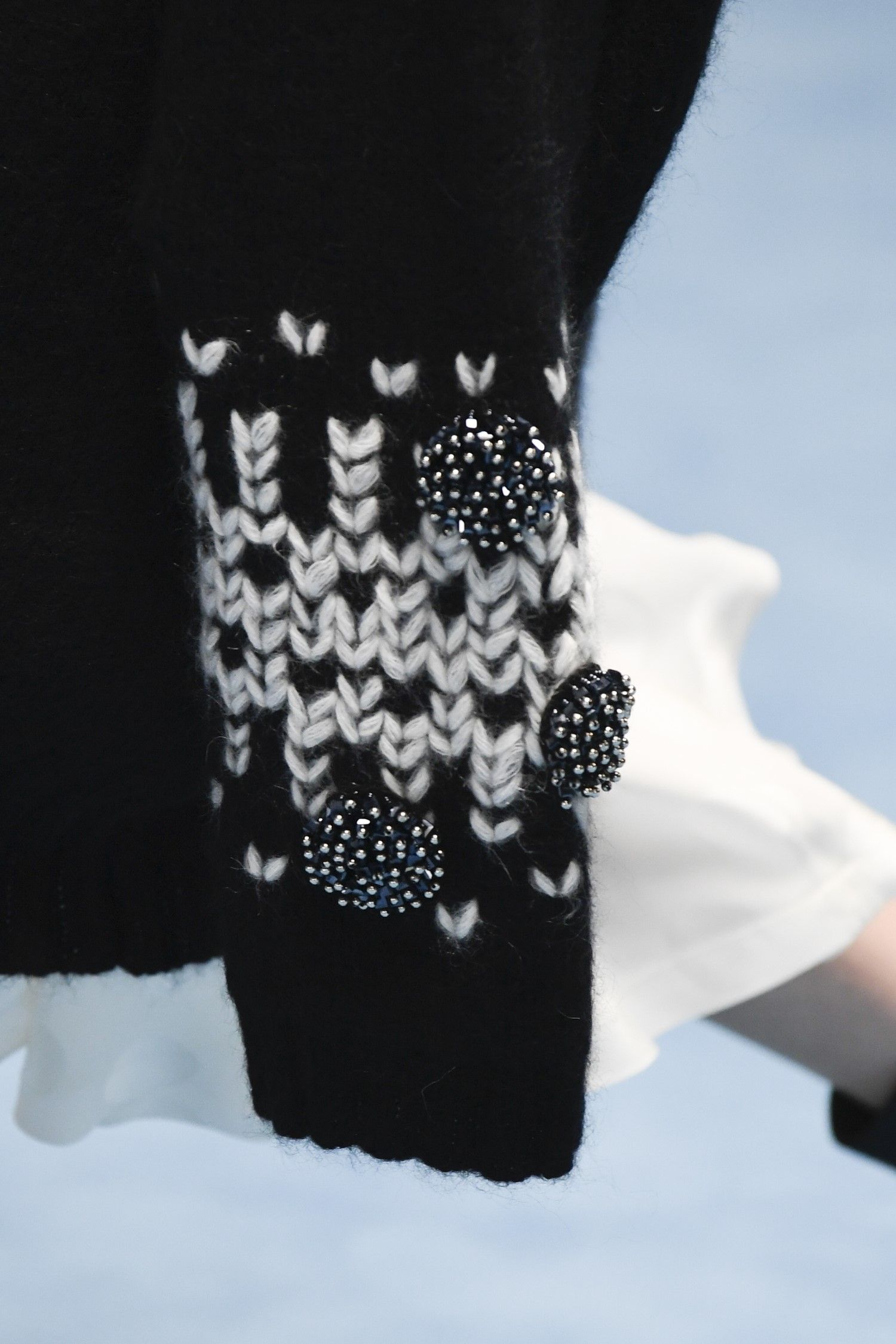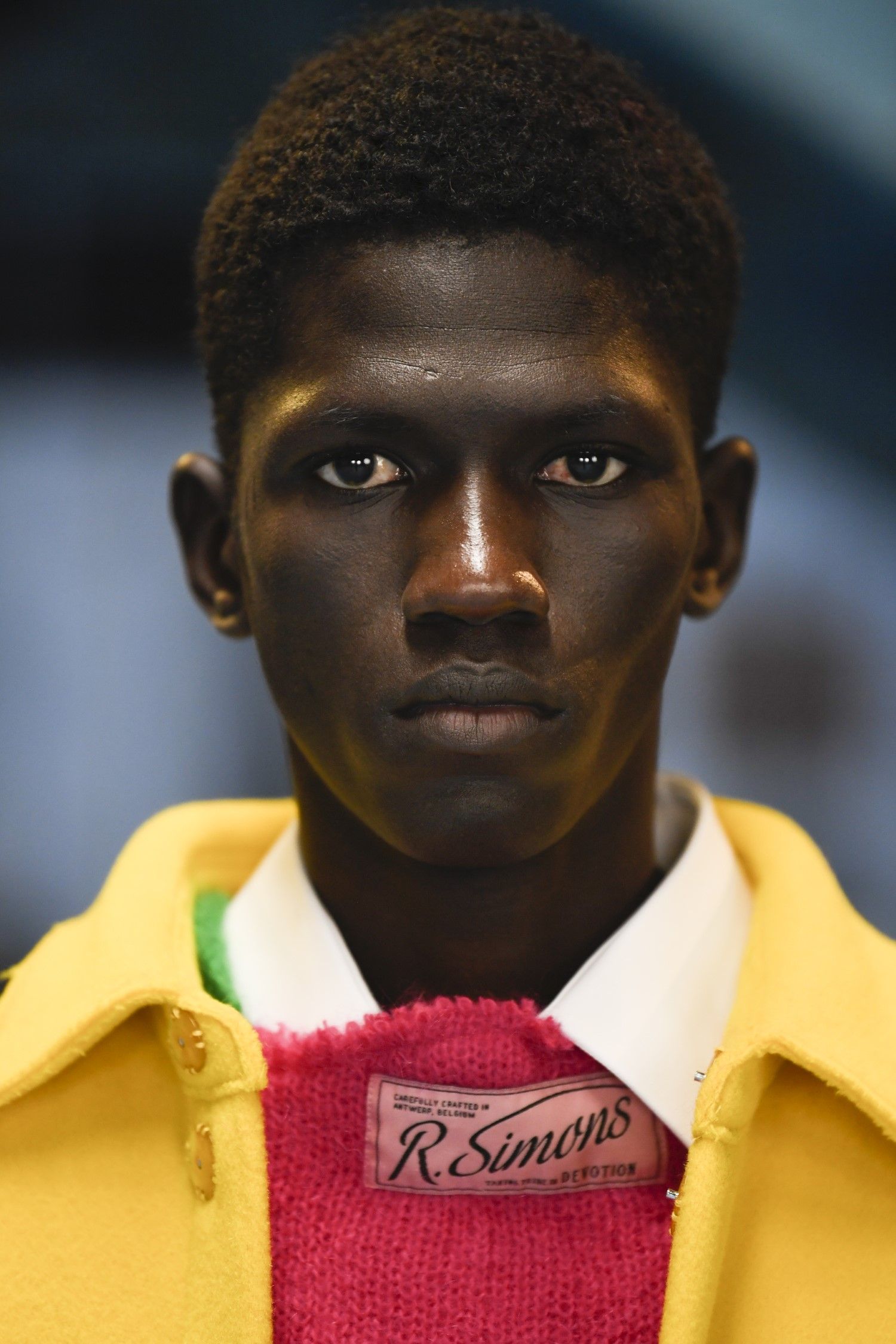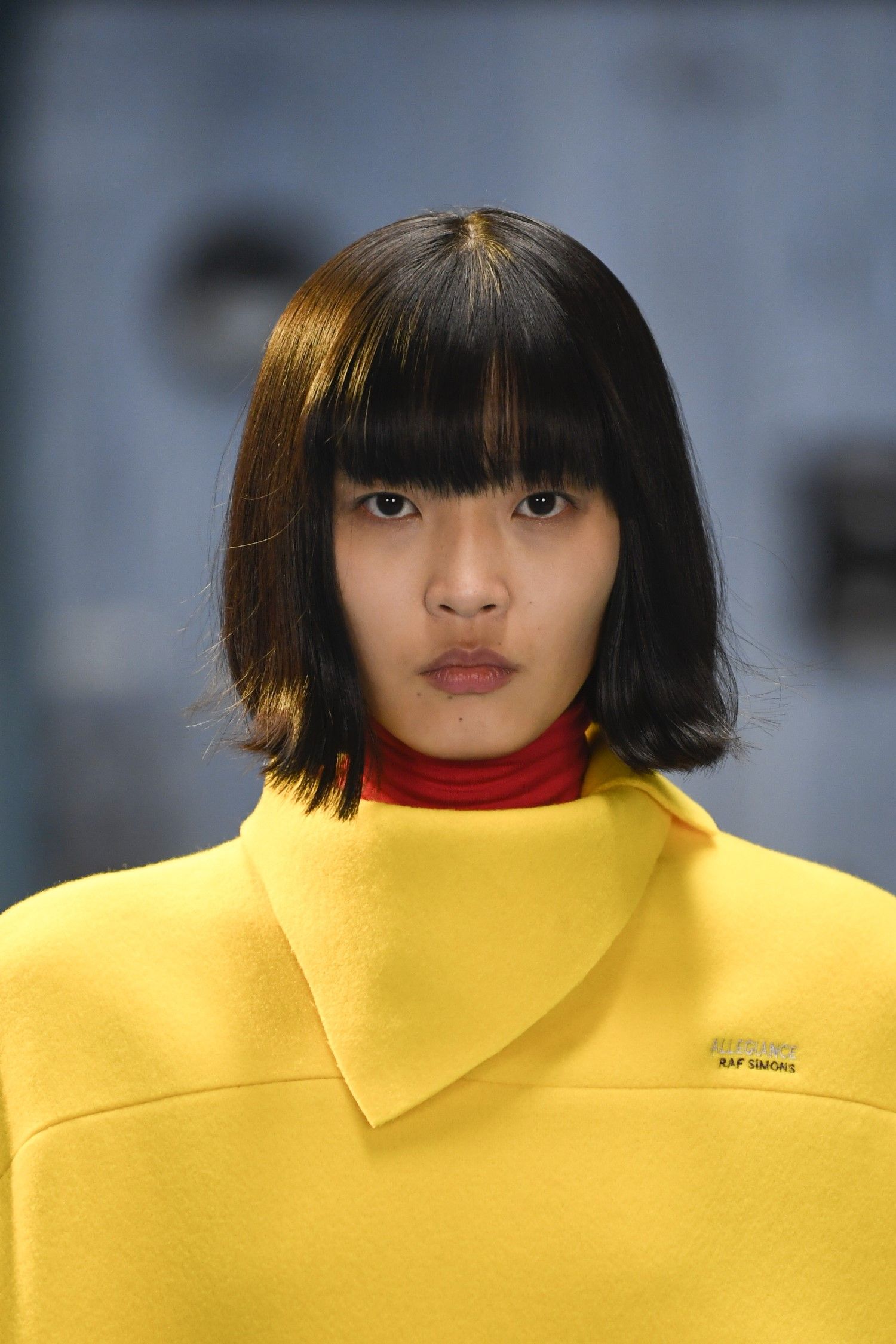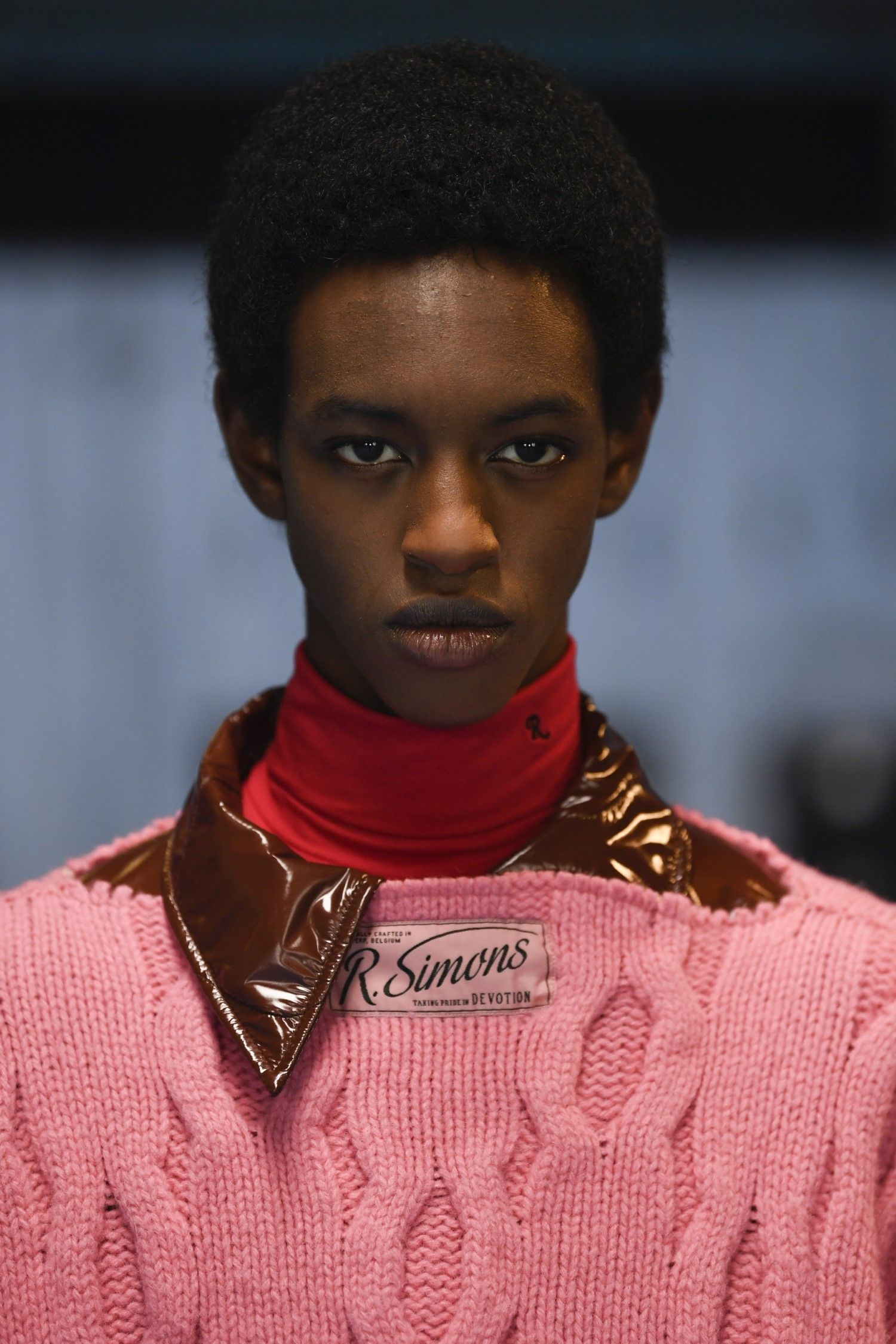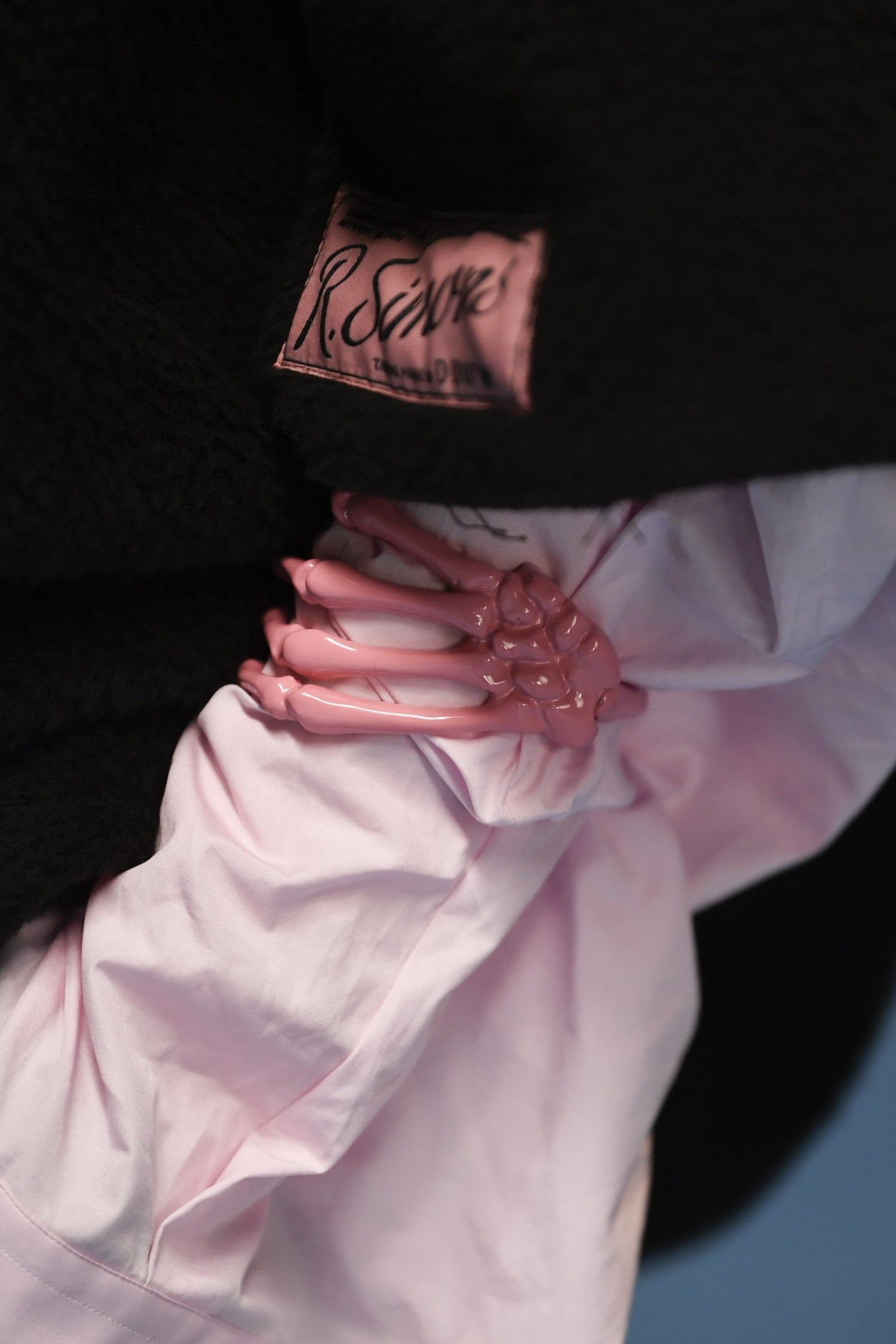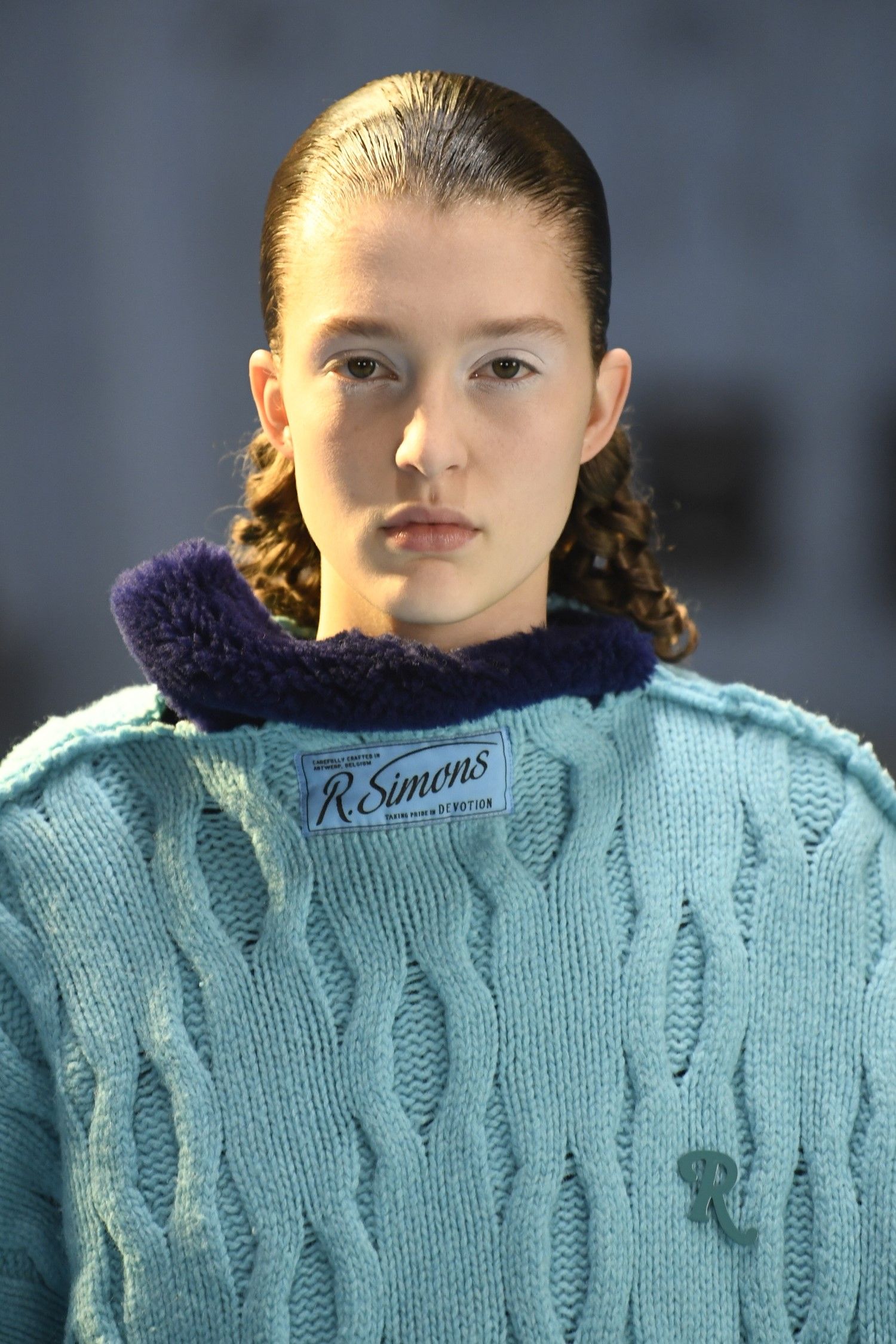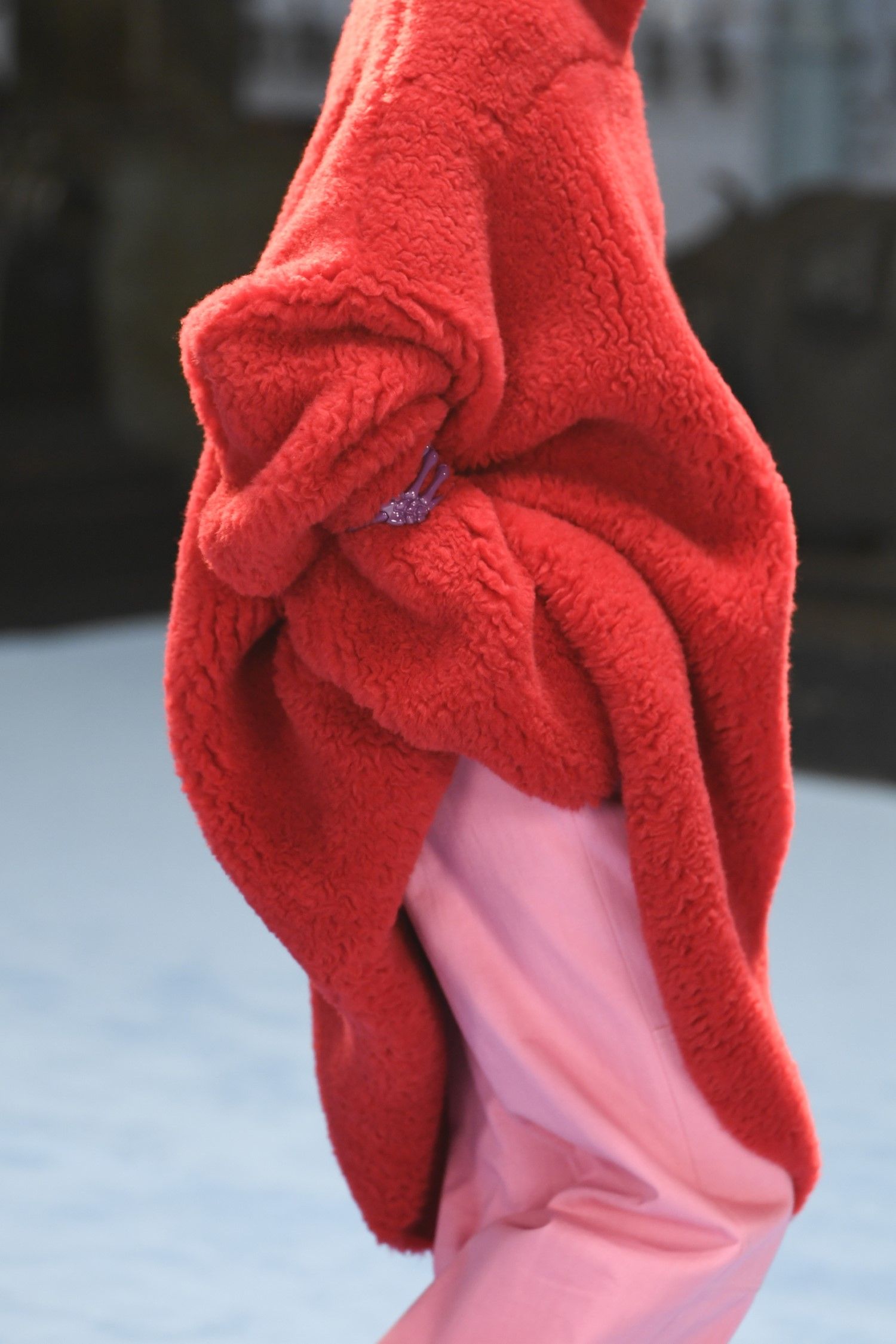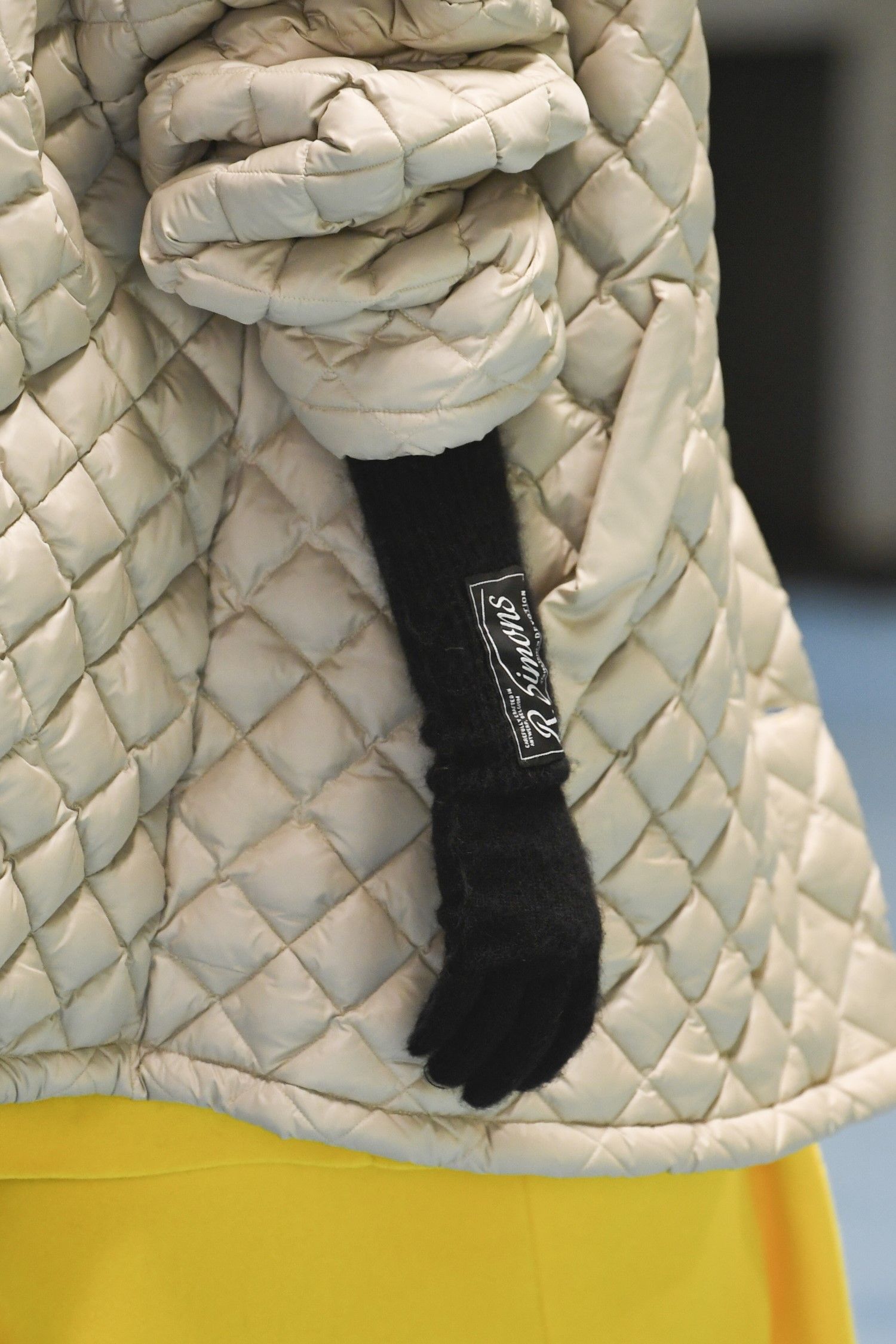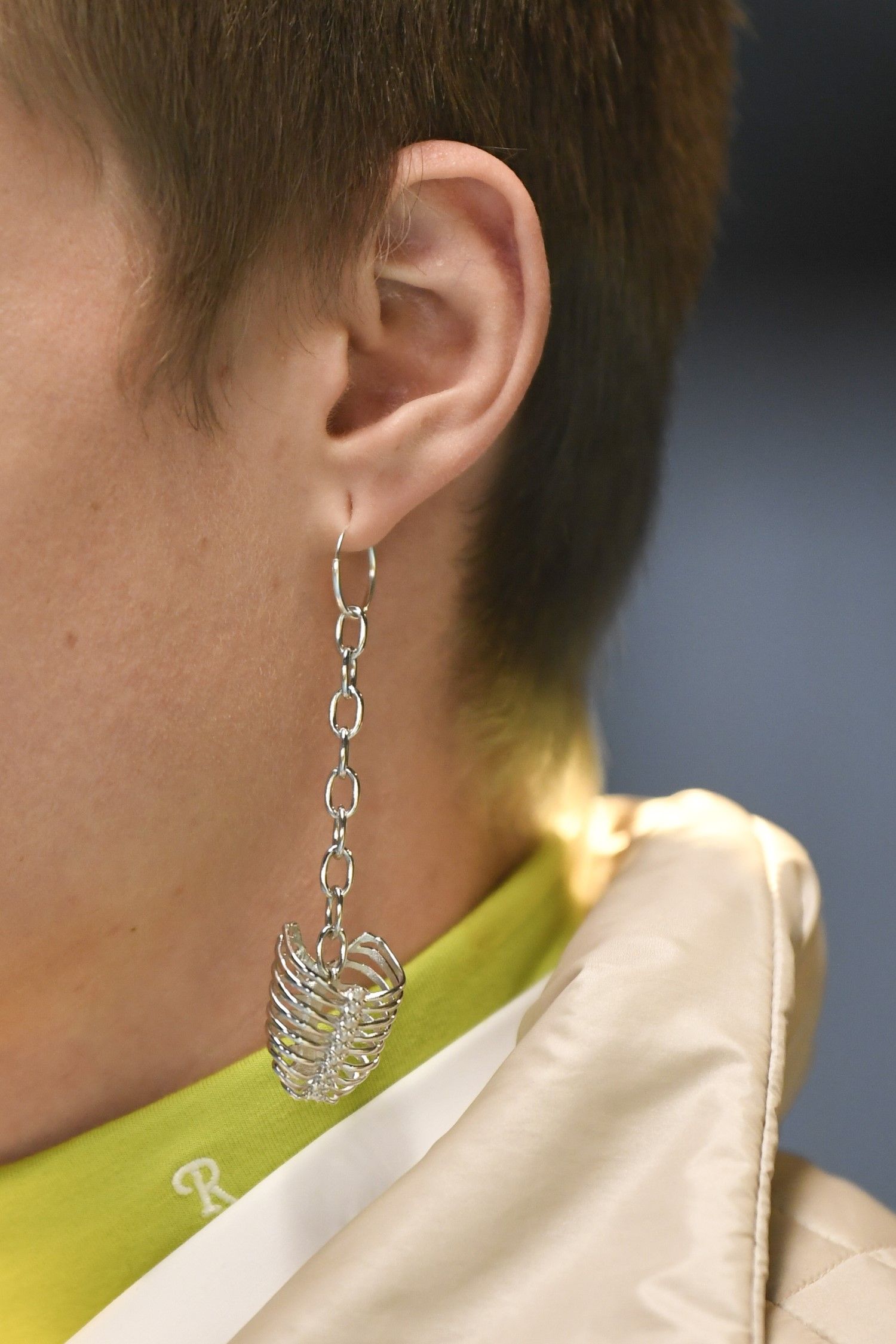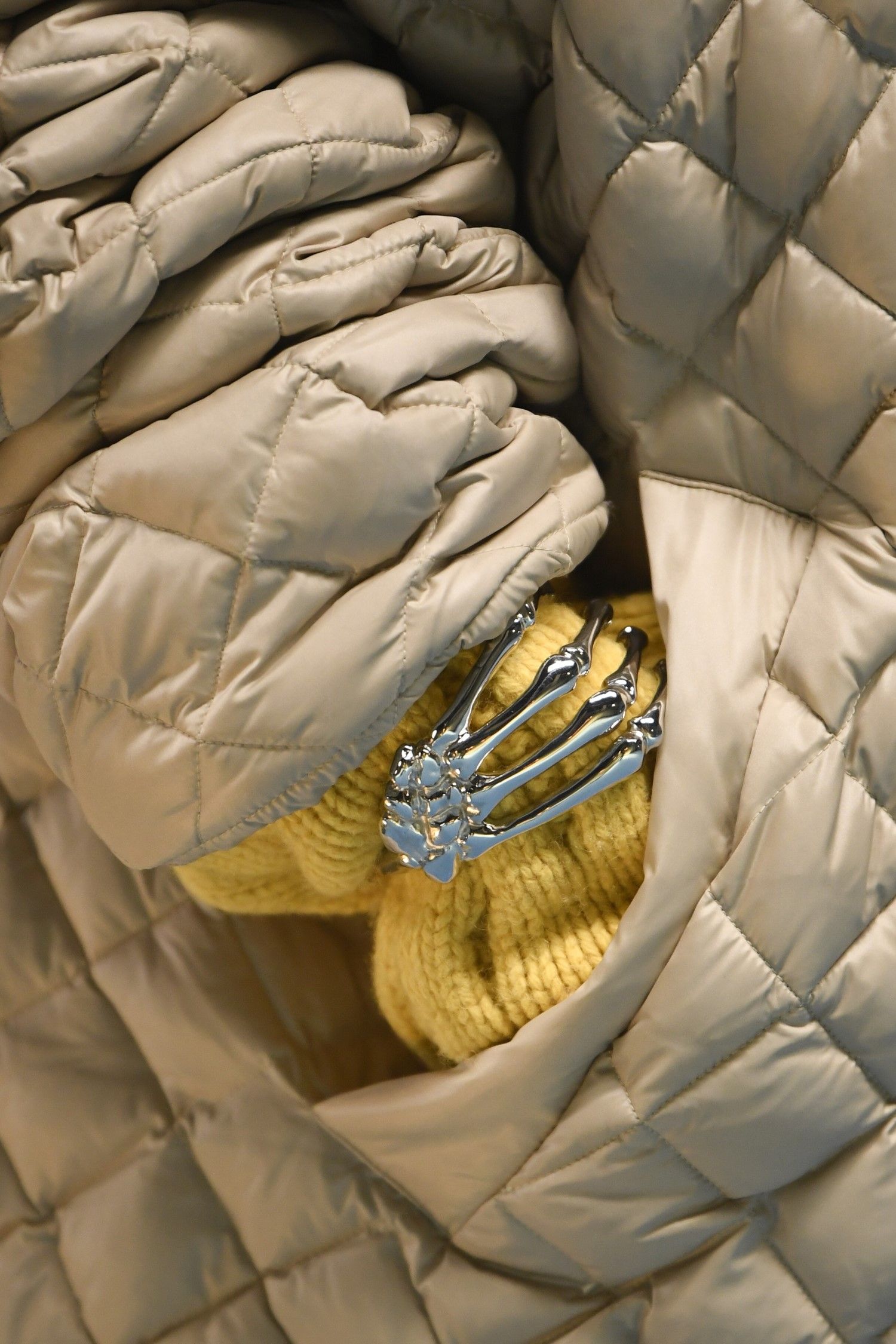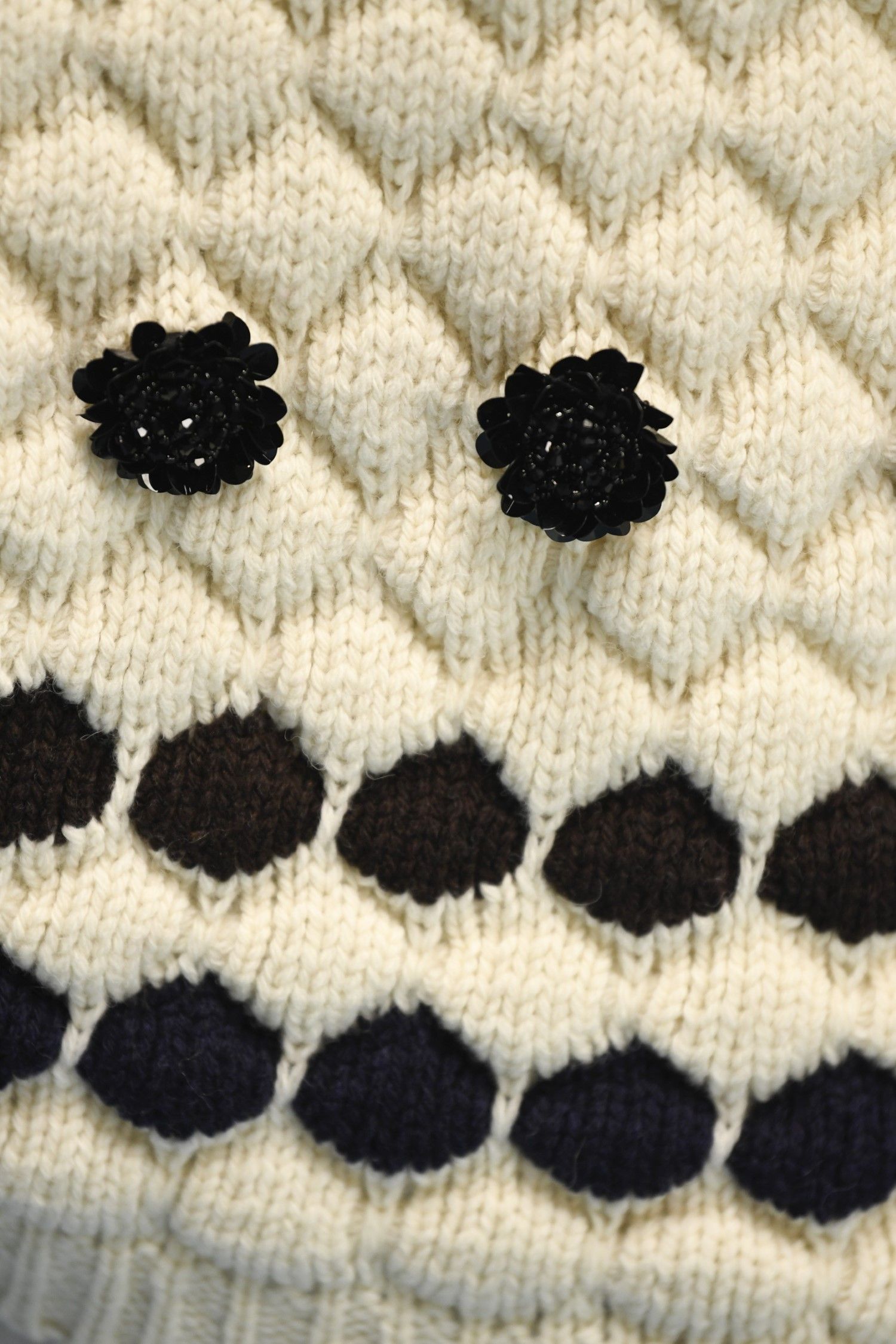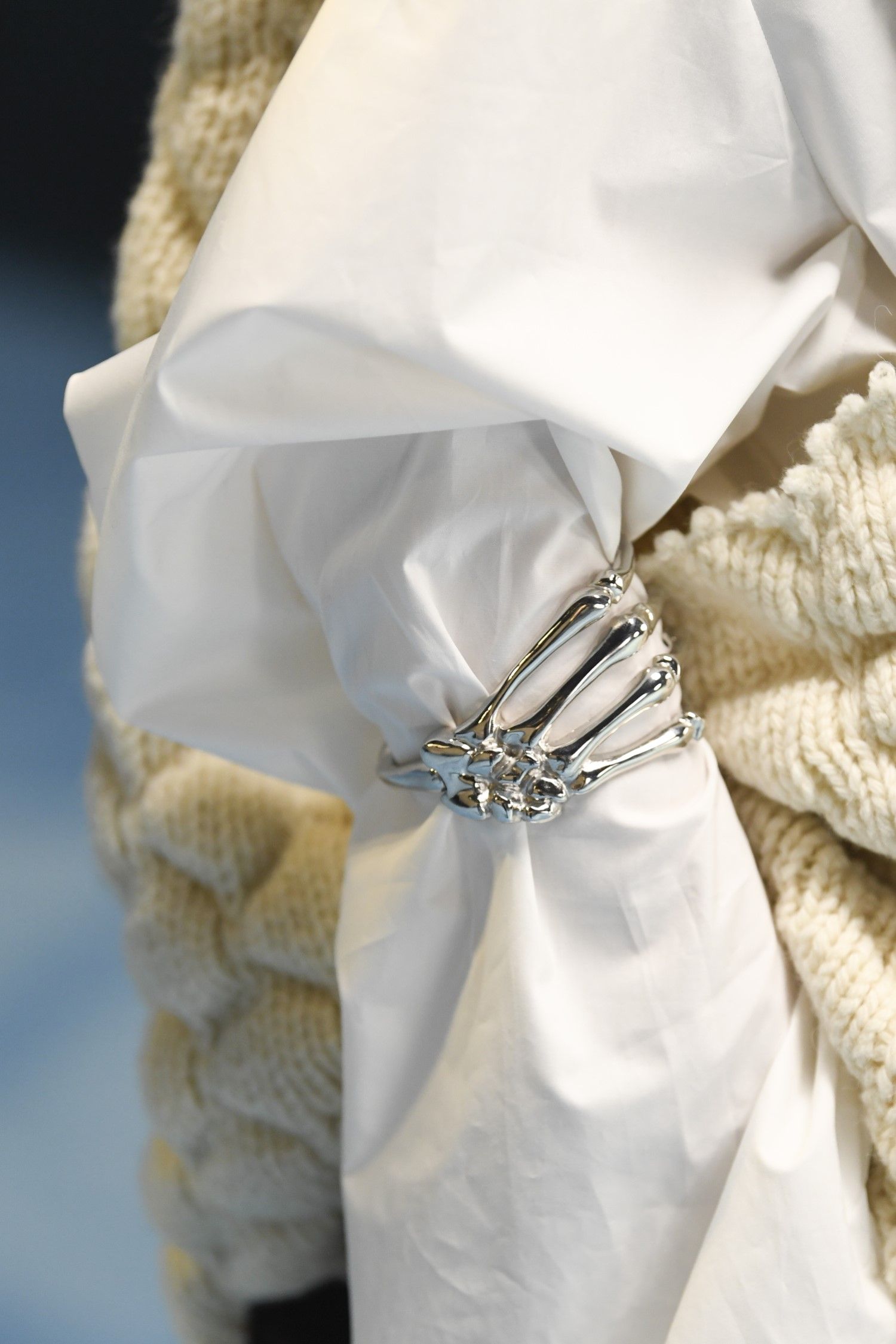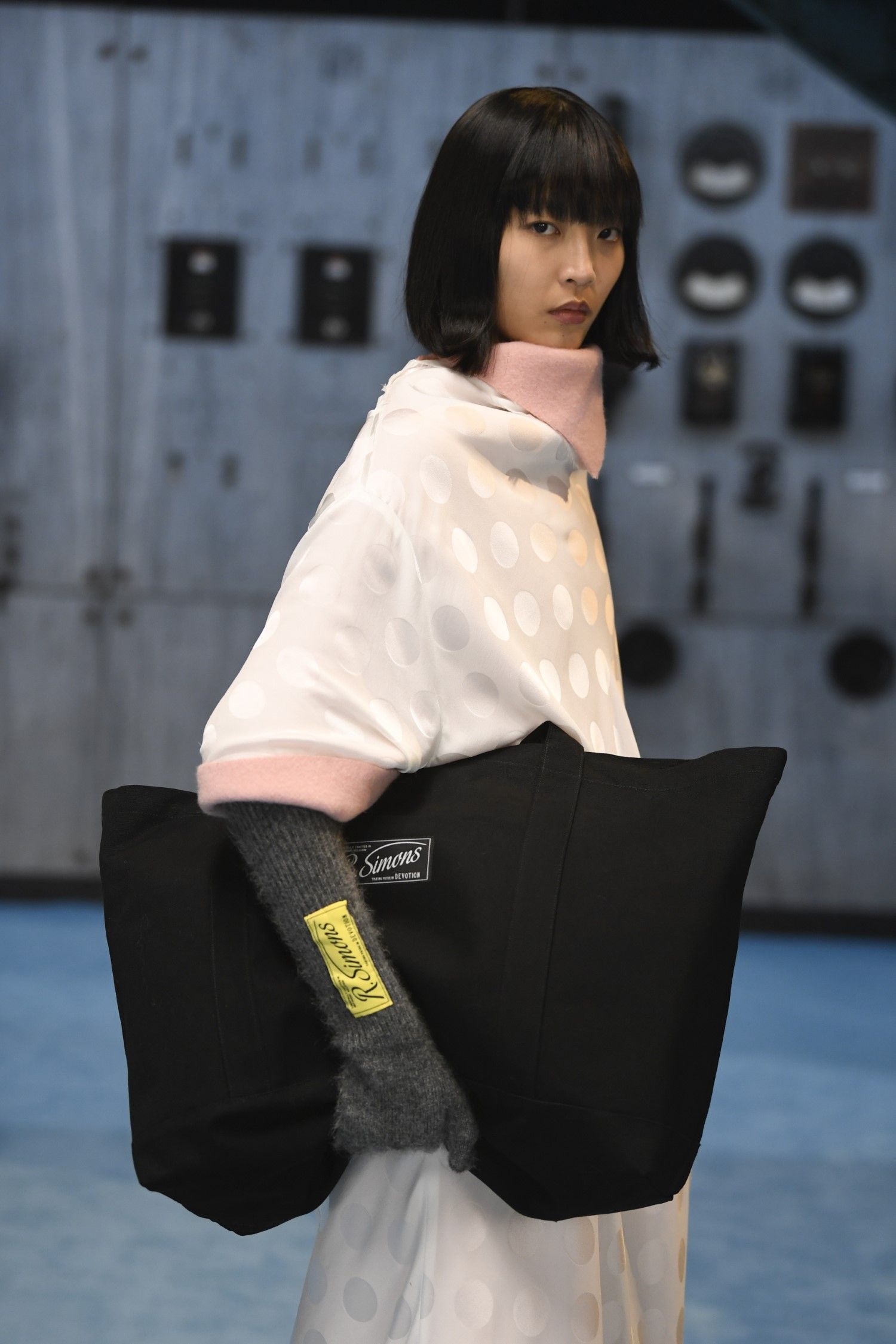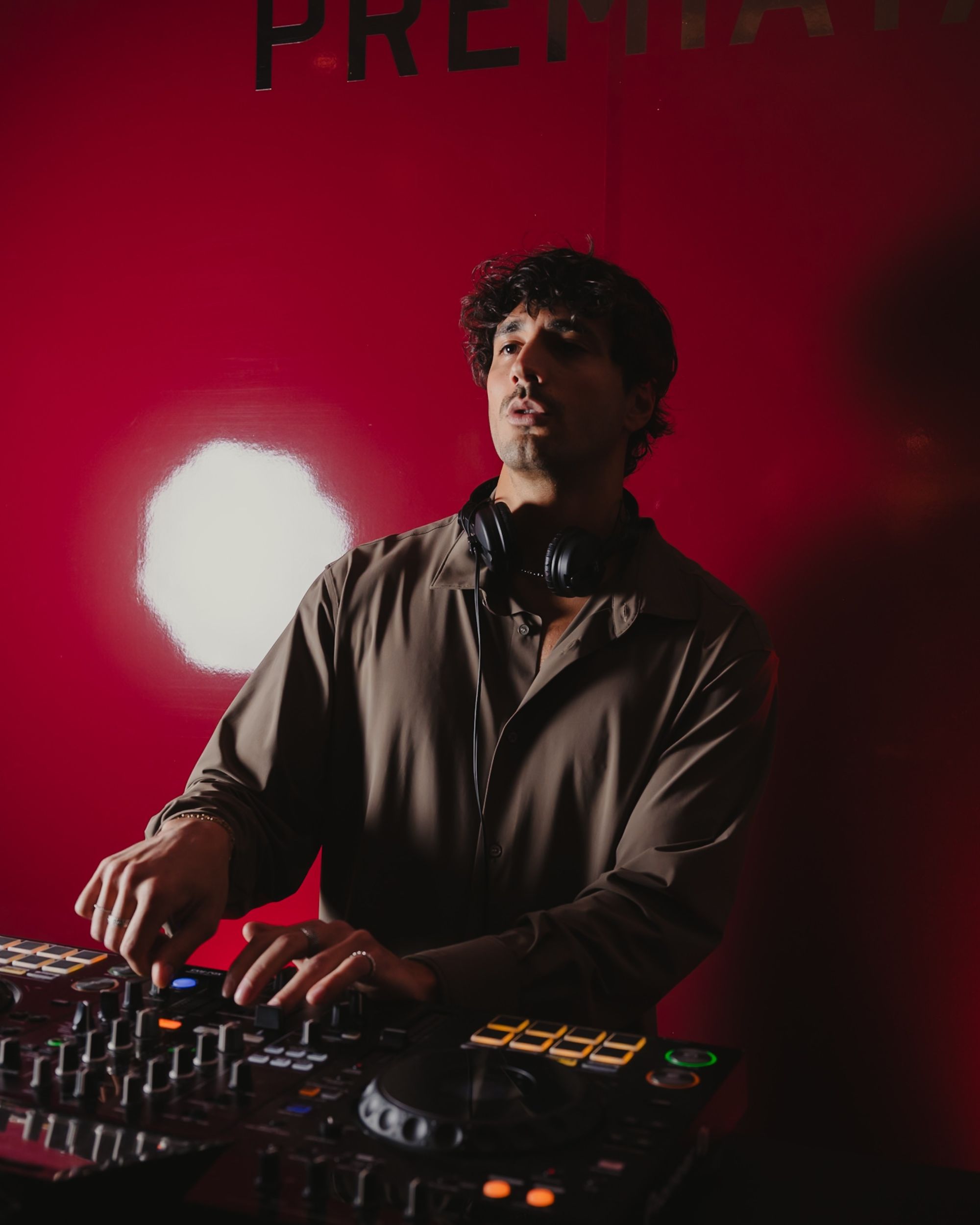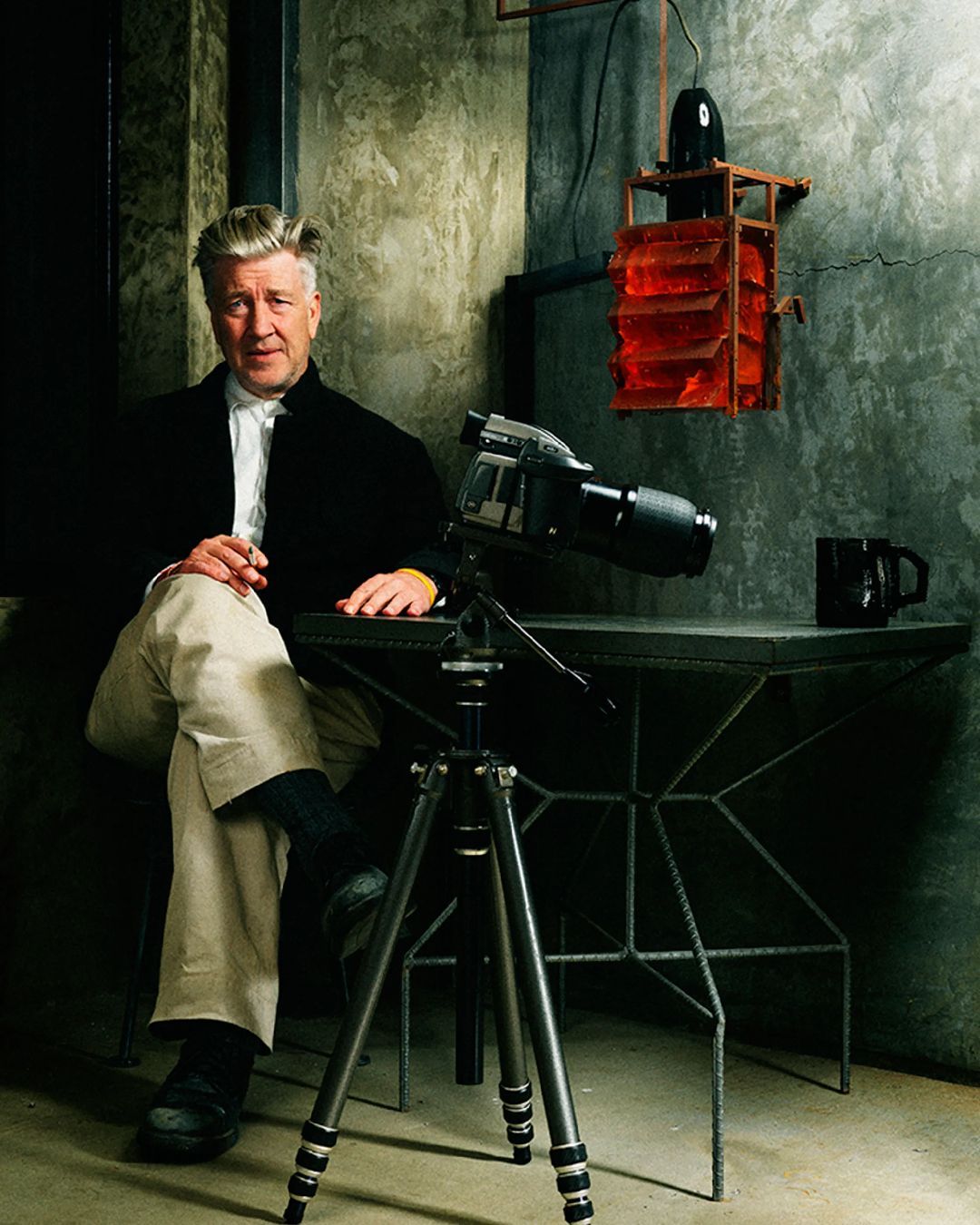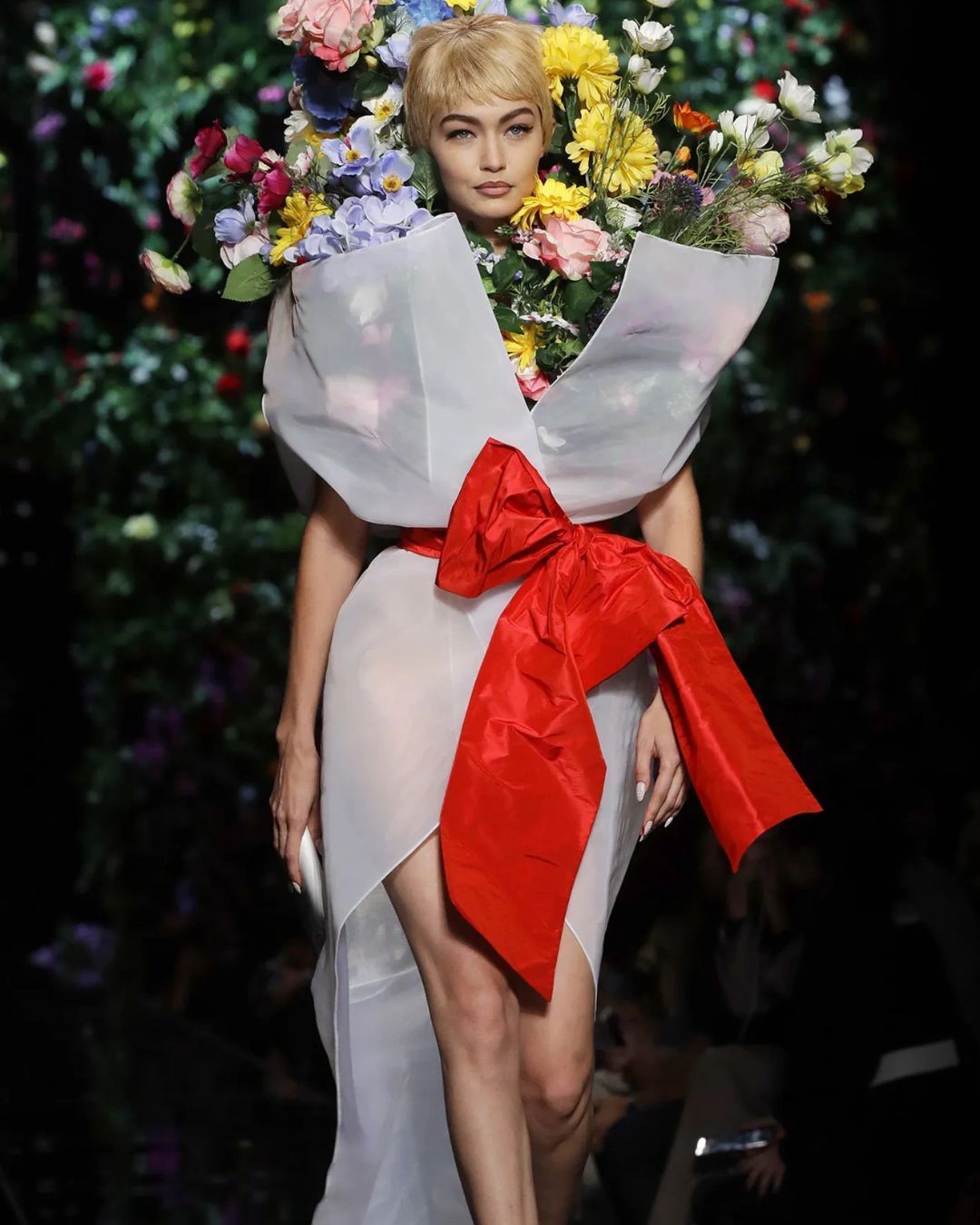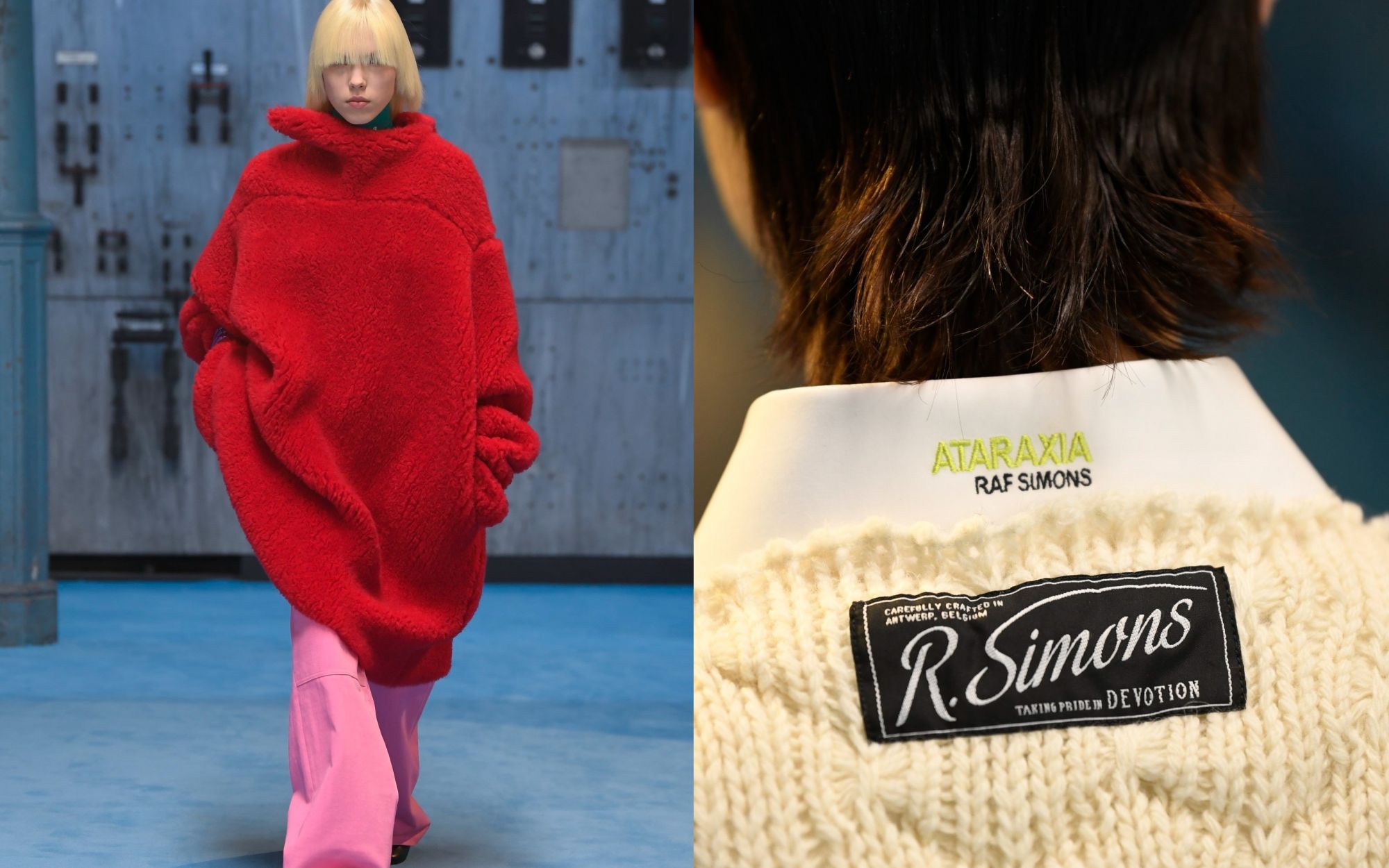
Raf Simons' electric dreams for the FW21 collection "Ideas that are unconnected can come together and find a synergy, a calm"
Yesterday Raf Simons' fashion show for the FW21 collection took place. Once again digital fashion show, once again a co-ed show. The show was filmed at the Barenzaal in Genk, a former coal mine filled with ancient machinery halfway between the set of Metropolis and The Rocky Horror Picture Show. It was a special fashion show: Simons has in fact revisited the great classics of his own design (oversize, deconstruction, polo collars, single earrings etc.) but with a new creative calm – the result is perhaps simons' most balanced collection so far, in which graphics and appliques are abandoned and an approach to design that is cerebral on the one hand, with its thousand details of construction and reconstruction, and extremely tactile on the other. The focus of the collection was certainly the volumes communicated through layering and work on outerwear – with a new (and almost surprising (a category not explored before) represented by oversized quilted vests.
The themes that dominated the show and its 54 looks were exhibited by Simons in his show notes through six words: Ataraxia, Devotion, Alliance, Synchrony, Dichotomy, Equanmity. The first and last of these terms come from the vocabulary of stoicism and indicate a state of philosophical indifference to the interferences of the outside world, "Devotion" and "Alliance" refer to Simons' attachment to his creative obsessions, while "Synchronicity" and "Dichotomy" refer to these same obsessions: divided and separated from each other but united by a thread of invisible coincidences. As the designer writes in his notes:
The collection is about things I love - things I have always loved, that are always there in every collection, in the processes behind it, and the clothes. [...] It is a mix of different ideas […]. About how ideas that are unconnected can come together and find a synergy, a calm.
This synergy and this calm are given by the identity that unifies: the stability of the self is the source of ataraxia and equanimity and what gives meaning to the various ideas and suggestions is Raf Simons himself who rediscovers himself in a collection that is together an ode to his own image but a step forward with respect to his imagination. Kraftwerk's own music, a group mentioned by Simons on countless occasions, of which the designer himself admits the enormous influence is another key to reading the collection: «Their music shaped me, and my work - it is electronic and technological, yet it always has, at its heart, a humanity». Another reference to stoic philosophy was the most interesting and perhaps brilliant detail of the show: a jewel in the shape of a skull hand (the technical term is sleeve garter, an accessory of the 1920s) which has the double function of retaining the volutes of oversized knitwear and symbolizing the memento mori – in a manner very similar to how the theme is reworked in the Self-Portrait with the death of Arnold Böcklin kept in Berlin.
The latest consideration goes to the materials used. Even before he was a powerhouse of cultural references, Simons was a manipulator and a subject technician. The construction and work on fabrics are always at the centre of his shows and here they took the place they deserved in the spotlight: in this sense, the most emblematic look is the seventeenth, a sort of cloak in very soft fleece combined with a pair of oversized pink trousers (Simons spoke of oversized as a way to make clothes overcome the concept of gender) with black shoes. But the sweaters-tunics with inlays of other patterns and the very particular white oversized shirt that appeared at the end of the show (which combines a normal-sized collar with a rather theatrical construction and drapery) are all testimonies of subtle and completely ingenious work.











































